Why and How China Works
Preface
Over the years, perspectives on China have run the gamut from predicting “the coming collapse of China” to expecting that “the twenty-first century will be the Chinese Century.” And we’ve heard every perspective in between.
Despite its many ups and downs, the Chinese economy has grown significantly over the past several decades. While at any given point in time one could point to China’s many problems and risks, China has, as a whole, exhibited an extraordinary level of resilience. Why is that and how does China do it?
In this article, I take my best shot at summarizing the three primary reasons for China’s resilience: A composite “three-layered duality” structure; a pragmatic approach of experimentation, learning and adaptation; and a set of highly sophisticated large-scale coordination and organizational capabilities.
These three approaches are the direct result of the way modern China has evolved and developed over the past two hundred years. As Chinese intellectuals reflected on how China could modernize itself, they would often draw upon China’s vast reservoir of history, culture, and civilization. At the same time, they would take into account newer concepts – which often originated from the West – as well as the realities of our changing world, in their search for Chinese-style modernization and modernity with Chinese characteristics.
I hope that my perspective will be helpful and instructive for executives of global companies who are now evaluating what role China will play in their businesses in the coming years. Developing a company’s global strategy – which, by definition, includes a China strategy – requires a deep understanding of China’s evolving role in the new world, a basic knowledge of the fundamental reasons why and how China works, and a clear-eyed view of the implications of the new dynamics of competition and collaboration given China’s role in the world.
THE FUNDAMENTAL FACTORS ARE CLEAR AND CONSISTENT, BUT ARTICULATING THEM REQUIRES SOPHISTICATION
Ever since China’s reform and opening up began, the nation’s growth has impressed and surprised a lot of people. Many of them have tried to explain why China has been able to grow so fast and how it has been able to exhibit such a high level of resilience. Some commentators have suggested that the Chinese government controlled everything in the country, including each and every single step of the various enterprises and their people. These commentators typically – and falsely – equated today’s China with the former Soviet Union. Among these critics, some would chatter on about, “the coming collapse of China” or say “China has peaked.” At the same time, others would say that China would ultimately fully embrace capitalism and that the Chinese would become “just like us.”
I cannot say whether these narratives are entirely right or wrong. However, they certainly do not explain the real fundamentals of why China has been able to achieve so much within such a short span of time. Even in this “Era of Mega Changes” China has continued to exhibit high levels of resilience. Let’s explore some of the actual reasons for China’s sustained growth.
“THREE-LAYERED DUALITY”
Since 1840, generations of Chinese intellectuals have been searching for ways that China could revitalize itself. This soul-searching process has accelerated since the country’s reform and opening up in the early 1980s. This process included many cycles of experimentation, learning and adaptation during which the Chinese repeatedly absorbed new ideas against the backdrop of the country’s ancient and long history, culture, and civilization. While the Chinese leaders embraced fundamental beliefs such as socialism and traditional Chinese culture, they also accepted new ideas such as a market economy and globalization. This type of inclusive and adaptive approach against a specific historical backdrop created a development mechanism that underwent repeated adjustments and, along the way, led to optimization. As a result, “socialism with Chinese characteristics” emerged, evolved, and continues to evolve to this day.
More specifically, China’s governance system features a “three-layered duality” structure. The central government provides the overall development direction for the country, as well as specific strategies and policies. Unlike the former Soviet Union, the Chinese government – post-reform and opening up – would not specifically dictate goals for Chinese enterprises but would merely provide broad direction and suggestions for the development of the entire nation. Of course, the government would have expectations for their state-owned enterprises (SOEs) whose role is to (at least partially) fulfill certain social responsibilities. However, for the privately-owned enterprises (POEs), the government would not and, in fact, cannot dictate operating targets.
Exhibit 1: China’s “Three-Layered Duality” Structure

Source: Gao Feng analysis
One of the most dramatic developments in China since its reform and opening up has been the rapid development of the private sector. Today, many of the most successful companies in China are private-sector enterprises. On the other hand, SOEs play a critical and dominant role in industries such as banking, telecommunications, aviation, railways, and energy. Enterprises, especially POEs, often get cues from the central government’s policies. They react quickly and are often able to take advantage of the opportunities brought about by the new government policies.
Resourceful and capable local governments would often play an important role in serving as a connection between the central government’s policies and the enterprises, both those that are state-owned (SOEs) and those that are privately-owned (POEs). These local governments would provide funding and other forms of support to qualified and interested companies. Local governments would help to incubate start-ups and help connect them with players both upstream and downstream of the companies’ value chains, including potential customers. For more mature companies, local governments would provide even broader support through the government’s ecosystem.
China’s dual economic structure of SOEs and POEs provides both benefits and downsides. In addition to their financial responsibilities, SOEs must often fulfill social obligations. For example, they provide most of China’s essential public goods.
The most classic case is China’s high-speed railways or HSR. Within slightly over a decade, China went from having no HSR to having the world’s most extensive (and high-quality) 42,000-kilometer HSR system. Without the SOEs, one would be hard-pressed to imagine how this system could be built at such speed and magnitude. If an HSR project were to be undertaken by POEs, its financial feasibility would not likely pass the typical financial hurdles. However, from an SOE standpoint, it would view such a project from a more macro and long-term perspective. In addition to considerations of short-term financial returns, SOEs would also need to consider social contributions and financial benefits at a broader level.
Exhibit 2: China’sHigh-speed Railways Network, 2010 vs. 2023
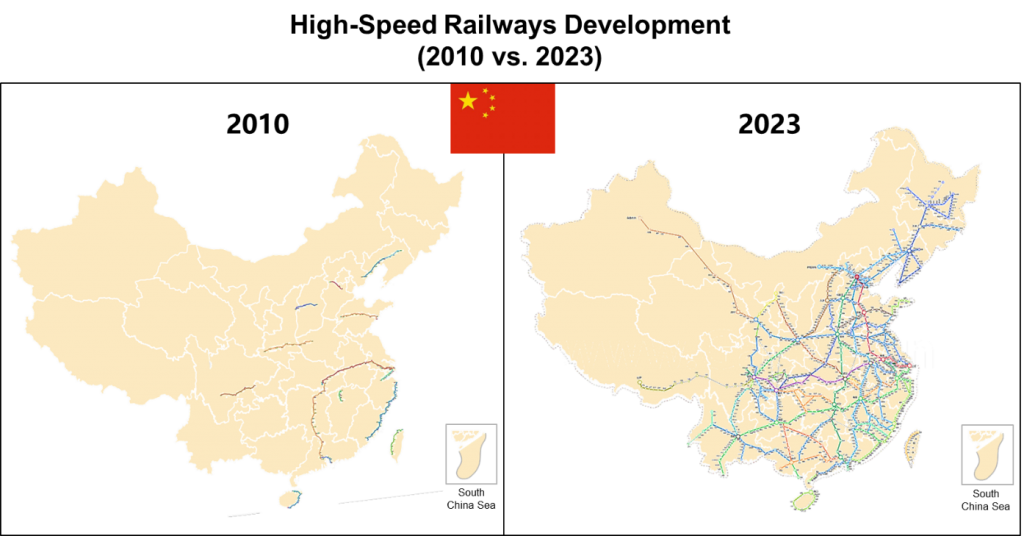
Source: Internet
Another notable example is China’s metro (urban rail transit) system. As of the end of 2022,urban rail transit systems are operational in 52 cities throughout the Chinese mainland, comprising a total length of 10,288 kilometers of operating lines. This achievement makes China’s urban rail transit network the largest in the world [1]. While it took China 38 years to reach the first 1,000 kilometers of operational urban rail transit, the second 1,000 kilometers was achieved in less than five years. Measured by the annual growth rate of the total length, China is also significantly ahead of the rest of the world with a double-digit growth rate. In comparison, the rest of the world’s urban rail transit grew at a rate of 2.5%-4.5% over the same period.
The rapid expansion of the metro system in China is primarily due to the government’s decision to prioritize the development of the urban transportation network. SOEs participate in the metro system’s investment, construction, operation, and management. It is part of the social responsibility of the SOEs which actively assist the local governments in delivering public goods to their residents.
The construction of 5G base stations is another good example. As early as in 2015, just one year after the commercialization of 4G in China, the government announced a plan of “striving to commercialize 5G by 2020.” On the one hand, major Chinese telecom SOEs – China Mobile, China Unicom, and China Telecom – were actively prepared to build the 5G base stations. On the other hand, private sector companies like Huawei and Zhongxing Telecommunication Equipment Company (ZTE) made significant investments in the research and development (R&D) of 5G infrastructure equipment such as antennas and radio frequency devices. As of the end of March 2023, 2.384 million 5G base stations were built in China – accounting for over 60% of the world’s total – serving over 590 million subscribers in China, with many base stations located in remote areas. While building out so many base stations may not make sense in the short-term financially, SOEs would nonetheless build them as part of their social responsibility.
In other words, the development of China’s 5G network, from the R&D of fundamental components to the nationwide deployment of base stations, relied heavily on the backing of both SOEs and POEs along with the government. Together, they proactively addressed the current national development requirements and fulfilled their social responsibilities while generating long-term financial benefits.
Of course, there is often friction between SOEs and POEs, especially when they compete in the same sector. Ensuring fair competition in these cases is critical. All along, some commentators would say, “state advances while the private sector retreats,” while others would say “POEs do a much better job than SOEs in sectors such as the internet.” While some of these narratives are not necessarily untrue, China’s “dual economic structure” as a whole is extremely effective, particularly when one considers China’s development from an overall, long-term perspective.
The three-layered structure consisting of the central government, local governments, and businesses, in combination with a dual economic structure comprised of both SOEs and POEs, creates a multi-dimensional “three-layered duality” structure. While this structure may sound complicated at first, it is actually quite simple and effective. Governance of such a large and multi-faceted polity requires coordination and dynamic, real-time adjustments. To accomplish this, strong leadership-driven large-scale cooperation and organizational capabilities are essential. At the beginning of the reform and opening up period, Chinese leaders did not have a clear and complete blueprint for development. Hence, an approach that involved rounds of experimentation, learning and adaptation became the underlying mechanism for continuous adjustment and optimization.
EXPERIMENTATION, LEARNING AND ADAPTATION
Since 1842, generations of Chinese intellectuals have undertaken rounds of study and reflection to determine how to rejuvenate the Chinese nation. They drew inspiration from Chinese history, culture, civilization, and ideas from the West. These elites studied, collectively reflected, and discussed and, ultimately, they came up with their own new and innovative ideas.
Since its reform and opening up, Chinese leaders have likewise adopted an approach of cycles of experimentation, learning, and adaptation to search for ways in which China could most effectively develop.
Four cities – Shenzhen, Zhuhai, Shantou, and Xiamen – were assigned Special Economic Zone (SEZ) status in the early stages of the reform and opening up. These cities could offer more open policies to attract foreign capital and talent than the rest of the country. These cities were allowed and encouraged “to be bold” in experimenting with new ideas and policies that the rest of China could not.
Many favorable policies were implemented in the SEZs. For instance, companies in an SEZ could benefit from preferential tax rates on corporate income, equipment, raw material imports, and product exports. Other policies included foreign exchange settlement and remittance, land access, as well as entry and exit procedures. Serving as gateways for international exchange, SEZs leveraged their policy and location advantages to achieve significantly higher growth rates than other regions in China.
Exhibit 3: Portrait of Deng Xiaoping on Shennan Avenue in Shenzhen (left), First Five Special Economic Zones in China (right)
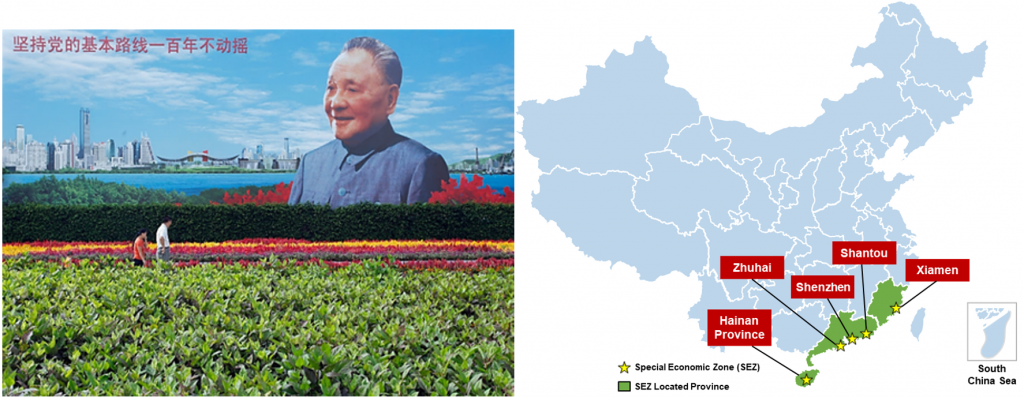
Source: Internet, Gao Feng analysis
In fact, whenever there were any major new initiatives, China would conduct pilots before launching the initiatives at full scale. The SEZ initiative, launched by Deng Xiaoping, is one of the most well-known examples. After the first successful batch of pilot cities provided valuable experiences and insights, the Chinese government designated Hainan province as another SEZ in 1988. This designation followed the establishment of 12 “Comprehensive Reform Pilot Zones,” also known as “New Special Economic Zones,” which included the Shanghai Pudong and Tianjin Binhai areas. Additionally, five “Financial Pilot Zones” were established, including Wenzhou City in Zhejiang Province, the Pearl River Delta Region in Guangdong Province, Quanzhou City in Fujian Province, Guangxi Province, and Qingdao City in Shandong Province.
During the 1990s and early 2000s, the most talked-about phrase in China was probably “(How China could) align with international practices.” This summarized China’s desire to understand and follow international rules and best practices. “Aligning with international practices” pertained to a wide range of areas, such as development models, policies, and regulations. It reflects China’s desire to integrate into the rest of the world.
The Chinese would benchmark practices and experiences from other countries or jurisdictions. China’s learning targets began with Hong Kong, then moved on to Singapore and Taiwan, followed by Japan and Korea, and finally extended to the West and the rest of the world. Before implementing important policies in areas such as finance, healthcare, social welfare, and industry development, the Chinese government would study the practices and experiences of a range of countries and jurisdictions, comparing and contrasting these approaches. Based on their analysis, the Chinese government would decide on the best strategies for China.
As a reform mechanism, pilot programs are still being undertaken today. The Chinese government (and enterprises) can gain insights and make appropriate adjustments through pilots. For example, in May 2023, Zhejiang Province held its first Pilot Promotion Conference for Common Prosperity. The conference reviewed how Zhejiang Province progressively implemented pilots in stages for achieving common prosperity, using the central government’s “pilot within a pilot” approach. Although there are no similar precedents that Zhejiang can follow, this approach could become very effective and have a nationwide impact.
Today, the implementation of China’s central bank digital currency (e-CNY) is progressing across China. Tailored e-CNY payment solutions are being developed and tested within some pilot regions, such as Jiangsu Province, Shenzhen City in Guangdong Province, and Yiwu City in Zhejiang Province, for various application scenarios. China aims to integrate the e-CNY into people’s daily lives step by step by piloting it under various scenarios, such as digital red packets for shopping incentives, purchasing and redeeming sports lotteries, digital wallets that offer a new payment experience to expatriates, and cross-border transactions under the consensus of different countries’ central banks.
Pilot programs have played a significant role in many respects as an essential approach to China’s reform and opening up. First, they can test the effectiveness of new systems or policies within a limited range and provide invaluable experience to guide full-scale rollouts. Second, they can reduce potential resistance to changes and increase acceptability and flexibility. Third, they can take full advantage of the spirit of innovation at the local and grassroots levels, ensuring that reform aligns with local conditions. Fourth, they can avoid a one-size-fits-all approach and reduce the risks and costs of reform. Finally, they can improve the efficiency and quality of reform, further driving improvements and development.
LARGE-SCALE ORGANIZATIONAL CAPABILITIES
The execution of the “three-layered duality” approach requires significant coordination and organizational capabilities. Although Dr. Sun Yat-sen, the chief architect of modern China’s efforts to overthrow the Qing dynasty in the early 1900s, once said, “The Chinese are like a batch of loose sand,” (meaning the Chinese did not work together). Although not perfect, China’s several millennia-long governance systems – a mix of Confucianism and Legalism – were quite effective in governing a vast territory which included a large, complex and diverse population.
Since the foundation of the People’s Republic of China (PRC) in 1949, the Chinese government has initiated a strong overall organizational structure across the entire nation. Managing this tight and vast structure requires strong organizational capabilities. According to the PRC’s constitution, the country is organized into three levels of administrative divisions: provinces (which include autonomous regions and municipalities), counties (comprising cities and autonomous counties), and towns (including villages and streets). These undertaking-specific management divisions form the basic units of governance in China. The central government leads all these units while the local governments provide day-to-day administration.
The Chinese government uses a Hukou system, also known as a household registration system. Through this system, the Chinese government maintains data on where people’s primary residence is located and this data is used to administer social services and government benefits based on the official Hukou location. As a centrally-controlled hierarchy with a broad and detailed administrative structure across all of China, the Chinese government’s ability to organize and mobilize resources at a large scale has become a standout feature of the PRC.
China’s massive poverty alleviation endeavor exemplifies its strong large-scale organizational capabilities, as evidenced by the remarkable transformation of Jinzhai County, Anhui Province. In 2014, approximately 40,000 households with 130,000 individuals were registered as impoverished families in Jinzhai, accounting for 22.1% of the total population. Since the poverty alleviation campaign started in 2016, all 130,000 individuals across 71 poverty-stricken villages in Jinzhai were lifted out of poverty within just four years [2]. Consequently, Jinzhai was taken off of China’s list of poverty-stricken counties. Such extraordinary success didn’t happen by luck.
This remarkable feat required meticulous planning and execution. It began by conducting a nationwide census to identify and register all impoverished citizens, establishing clear targets and safeguarding against corruption. Grassroots poverty alleviation teams were mobilized by provincial and local governments, with each village that had a poverty household receiving assigned secretaries and resident working groups. By 2020, over 255,000 resident teams and 3 million officials had been dispatched across China. Aside from sending permanent officials, the government instituted a “Paired-up Assistance System,” assigning designated poverty alleviation helpers to each household with personalized and targeted intervention plans, strictly implemented in accordance with poverty alleviation manuals from the State Council (Leading Group Office of Poverty Alleviation and Development). These paired-up helpers were rotated annually and evaluated after each term to ensure accountability. In addition, the government also mobilized SOEs, POEs, and local PLA (military) to contribute through donations, purchasing agricultural goods from impoverished families, and providing job opportunities if needed.
Since China’s reform and opening up, over 770 million people have been lifted from poverty. Rhetoric alone cannot achieve such a massive and effective decades-long program. Rather, it is China’s large-scale organizational capabilities and institutional strength that enabled this historical achievement which has earned China respect around the world.
Exhibit 4: China’sPoverty Reduction in Rural Areas, 1978-2020
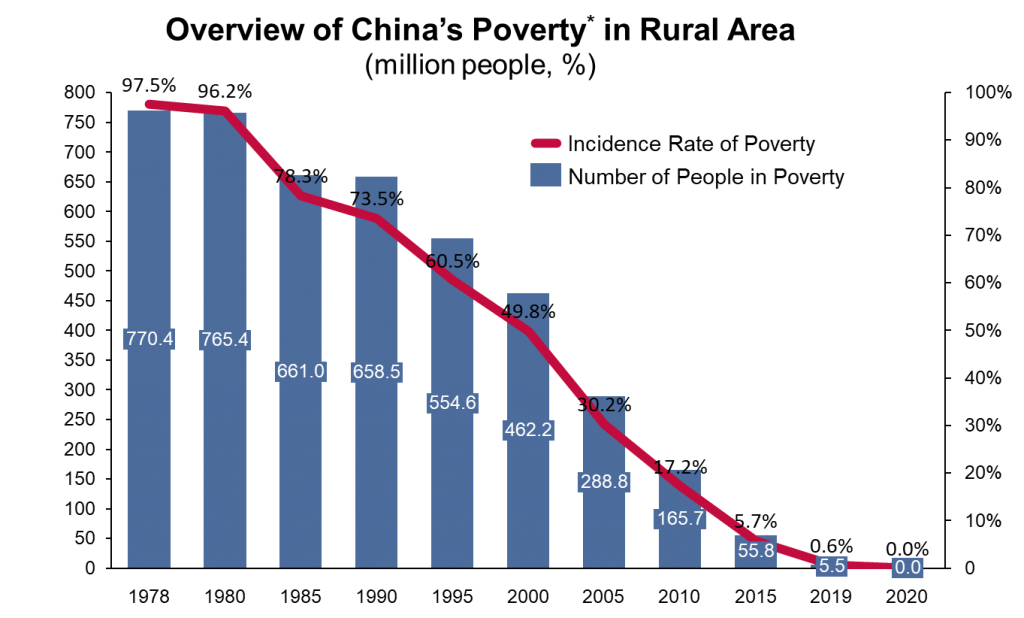
*Note: Defined as annual income below RMB 2,300 per capita in a household (Set by the National Bureau of Statistics of PRC in 2010)
Source: Xinhua News Agency, Gao Feng analysis
Such a large-scale organizational capability is often called a “whole-of-nation approach.” This means that when the Chinese government aims to achieve something of scale and significance, it can and will mobilize large-scale, nationwide resources and capabilities to get the job done. The poverty alleviation initiative is just one of many examples. Other major initiatives, such as the South-to-North Water Diversion Project, the anti-desertification effort, and the goal of carbon neutrality by 2060, also require the sustained mobilization of large-scale resources.
In the podcast China Corner Office produced by The China Project, Apple University Professor Doug Guthrie stated, “Apple has a significant market in China, as does Tesla and other companies. But what makes these companies so powerful is their management of the supply chain.” [3] However, as Doug pointed out, the capability of supply chain management relies on the advantageous features of China and its government (both central and local) and SOEs. First, China has access to a massive migrant labor force of 350 million workers that can rapidly scale up or down through the government-controlled labor dispatch system. Second, extensive integrated transportation infrastructure efficiently connects raw material suppliers, component manufacturers, assembly factories, and logistics networks, enabling responsive and nimble manufacturing ecosystems. Finally, China has strategically created industry clusters in certain cities and regions, such as the automotive manufacturing cluster in Guangzhou, which promote specialization, knowledge sharing, and tight supplier integration.
The combination of a flexible labor force, integrated infrastructure, and industry clustering provides China with a unique manufacturing process that underpins the success of many foreign firms operating there, including Apple.
A large number of suppliers, including those from China and other countries and regions, rely on the supply chain ecosystem and infrastructure that have been developed over time. The Chinese government and SOEs played a significant role in providing the necessary public goods. Additionally, the local governments were particularly instrumental in working with the suppliers and manufacturers to mobilize labor to work in these ecosystems. The efficient and dynamic management and coordination of this supply chain ecosystem and infrastructure enables the highly efficient nature of Apple’s supply chain.
In simple terms, China also adopts a “whole-of-nation approach” to support Apple’s supply chain development. As it builds out its supply chain in China, Apple is looking not only for low labor costs but also other benefits that are generated from the coordination and organization that the Chinese government, particularly local governments, can drive and deliver. In addition, the numerous suppliers, primarily Chinese, involved in these complex supplier ecosystems would naturally find ways to synchronize with the orchestration by Apple and the leading manufacturers and local governments.
Professor Guthrie also emphasized that “no intellectual property theft” occurred at Apple in China: “In today’s era…the real IP is around manufacturing processes… Apple will never set up a factory in China. What they did was they took their employees, who are brilliant people in operation supply chain management, and they embedded them in the factories of China’s suppliers. They teach, and everybody learns together. And so, it’s hard for me to think about this as some commentators think about this as stealing IP – I don’t think it’s stealing IP. These are collaborative relationships in which people learn together.” [3]
Professor Guthrie believed Apple and its Chinese suppliers developed the necessary intellectual property in a collaborative manner. Guided by a spirit of collective cooperation, suppliers, regardless of their origin, can consistently assist Apple’s highly efficient supply chain with innovations facilitated through the provision of public goods by the Chinese government and SOEs. This is made possible through meticulous and extensive coordination at all times.
A COMPOSITE PUBLIC-PRIVATE PARTNERSHIP
China’s economy is neither a market economy nor a planned economy but, rather, it is a combination of both. SOEs, POEs (both local and foreign), local governments and central government, all play critical roles in China’s unique economy. For Chinese companies, particularly the POEs, the government does not allocate planned resources and performance targets. Instead, enterprises drive their own business based on the central government’s policies, entrepreneurship, equity reform, market competition and innovation, often with support from their local governments. The diverse stakeholders in China’s mixed economic model leverage their respective strengths while aligning with national priorities through a collaborative approach.
The Chinese local governments play a crucial role in driving public-private partnerships. Many local governments are well-positioned to support businesses today as they have come a long way economically over the last several decades. Cities such as Shenzhen, Guangzhou, Beijing, Shanghai, Hangzhou, Suzhou, Wuxi, Nanjing, Tianjin, and Chongqing, among many others, are all well-known for supporting businesses. Among these, Hefei City in Anhui Province stands out as a notable example.
Hefei’s Experience
Situated strategically between the Yangtze and Huai Rivers, Hefei, the capital of Anhui province in Eastern China, has long played a pivotal role in regional administration, economy, and military affairs throughout history. With its advantageous geography, Hefei emerged as a critical hub for trade and transport. Today, the city is recognized as a thriving technology and economic center in China’s central and eastern regions.
Often called the “Hefei Model,” the city’s developmental approach leverages state-owned enterprises and academic institutions to establish industry-focused investment funds. Through direct investments and active participation in various funds, the government drives the infusion of private capital to foster business expansion. This model, predicated on judiciously directing investments into priority sectors, has proven effective in driving Hefei’s economic development and has benefited many businesses along the way.
Exhibit 5: Geographic location of Hefei, BOE, Lenovo and Compal Future Center (LCFC), and NIO Parks in Hefei
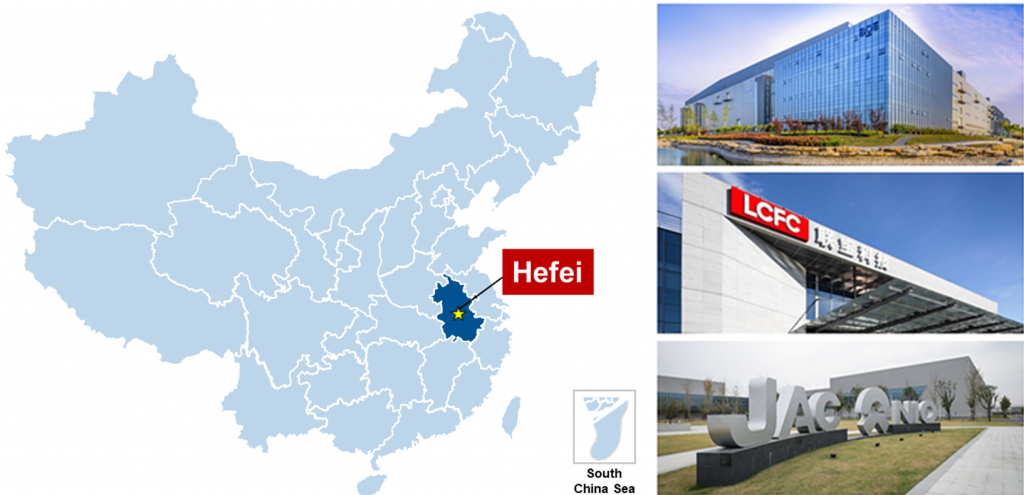
Source: Internet, Gao Feng analysis
A key factor in Hefei’s success is how the region work’s with business. Despite government shareholding, companies maintain a degree of autonomy and managerial control. This allows the companies to run their business in their own way but, at the same time, they can also leverage support that the government provides. Through this approach, Hefei has excelled in strategic sectors, including new-generation display devices, integrated circuits, artificial intelligence, and new energy vehicles.
Furthermore, Hefei embraces the mindset of venture capital and investment banks. Their investment funds would recruit industry experts and seasoned advisors for meticulous evaluation of opportunities. Investments are rigorously assessed for technology, supply chains and market potential. The ability to generate ecosystem synergies is also critical. Ongoing support provided by various governmental departments ensures these synergies can be materialized. As a result, Hefei attracts both established players and emerging innovators and, along the way, they form a robust ecosystem.
To ensure a proper focus and capability boundaries for selected sectors, Hefei pioneered the “Chain Chief” notion, designating senior government officials who are responsible for optimizing industrial chain development plans and policies. This initiative includes cultivating key companies, facilitating pivotal projects, and establishing service platforms and mechanisms for regular services. Coordinating resources across industrial chains through these “Chain Chief” positions supports accountability for value chain integrity and progression.
Moreover, Hefei propagates a business-friendly environment underscored by innovation and service. Augmented by robust industry support and technological incentives, this milieu has magnetized numerous companies. Notable illustrations include BOE, a leading Chinese semiconductor and display device manufacturer; Lenovo, a global information and computer technology (ICT) player, and; NIO, a well-known Chinese electric vehicle brand.
The first case is BOE. In 2008, BOE, a leading Chinese semiconductor and display device manufacturer, planned a landmark US$2.5 billion investment to construct a 6th generation Liquid-crystal display (LCD) production line in Hefei. At the time, Hefei’s entire fiscal revenue was only around US$2.3 billion [4]. Despite substantial economic and political risks, Hefei decided to support this ambitious project.
Per their agreement, Hefei committed US$900 million in direct investment along with US$1.2 billion in conditional loan guarantees, contingent upon attracting co-investors. This public-private collaboration aimed to catalyze industrial upgrading. BOE has since invested over US$15 billion in Hefei, creating 20,000 jobs and US$6 billion in annual revenue. BOE built an integrated, efficient R&D and manufacturing base by leveraging Hefei’s strategic location and talent pipeline. This has enhanced BOE’s overall competitiveness and innovative capacity, cementing Hefei as a global display production hub.
The second case is Lenovo, one of the world’s largest ICT giants. In 2011, Lenovo partnered to construct a Hefei laptop factory, Compal, increasing annual production capacity forty-fold to 40 million units in six years [5], and it is presently the world’s largest laptop plant.
Following the initiation of production, Lenovo contributed up to 40% of BOE’s display screen capacity in the initial years while sustaining BOE’s development by incorporating 5% of its laptops with BOE’s new-generation display screens. To cultivate an integrated value chain, Hefei attracted over 300 suppliers, including 20 public firms, thereby incubating an innovative ICT cluster. The government provides incentives, such as tax relief, to facilitate Lenovo’s continuous expansion. Furthermore, Hefei’s partnership with Lenovo exemplifies a sophisticated orchestration of synergies across companies and sectors. Through proactive supplier recruitment, Hefei has nurtured an integrated ICT ecosystem. Continued support, including incentives and talent programs, further fortifies Lenovo’s position as an anchor tenant, underscoring Hefei’s adept capacity to incubate industrial champions and clusters.
The third example is NIO, a Chinese electric vehicle (EV) brand, one of China’s “New Force in EVs.” In 2016, NIO partnered with Jianghuai Automobile (JAC Motors) to utilize JAC’s Hefei production facilities, establishing an initial manufacturing base. In 2020, recognizing NIO’s economic potential, Hefei provided over US$1 billion in strategic investment to make NIO’s China headquarters and EV cluster in Hefei [6]. This collaboration had a real economic and social impact, further catalyzing other industry investments for NIO and Hefei. It supports the development of NIO and a smart EV industry cluster on the ground. Hefei’s investment and policy incentives turbo-charged NIO’s growth, transforming it from a nascent entity on the brink of bankruptcy into a prominent player in China’s electric vehicle industry. Examples like this demonstrate Hefei’s capacity to nurture emerging champions even amid periods of uncertainty. The ensuing cluster development and synergy exemplify the potential of the “Hefei Model”.
These three instances underscore Hefei’s adeptness at orchestrating synergies across sectors. Lenovo’s expansion spurred demand for BOE’s displays, thereby catalyzing the broader electronics cluster. With Lenovo and Compal Future Center (LCFC) contributing 10% of its GDP, Hefei could incubate emerging champions like NIO, revealing a significant capacity to leverage synergies.
Consequently, Hefei has cultivated advanced integrated circuits, new-generation displays, new energy vehicles, safety and emergency, smart devices, life science and health, and artificial intelligence sectors. Their nimble marshaling of resources has earned Hefei recognition as a highly-skilled quasi-venture investor.
BOE, Lenovo and NIO showcase Hefei’s sophistication in seizing opportunities to attract and build strategic industries. Hefei adeptly evolved sector clusters into fully-fledged industrial bases by attracting anchor companies and upgrading key industrial chains.
Additionally, effective administrative services and favorable policies are essential to Hefei’s business environment. This helps companies overcome capital, land and talent barriers and enables accelerated growth. Encouraged by the success of BOE, Lenovo, and NIO, Hefei upholds an “industrial value chain-oriented” investment mindset for guiding the development of its portfolio of investments. Furthermore, driven by a philosophy of investing and building up industrial value chains, Hefei sets up market-oriented funds to invest across supply networks, further catalyzing its development.
For example, leveraging extensive high-tech expertise, Hefei incubated ChangXin Memory Technologies (CXMT), an advanced semiconductor firm. Established in 2017 by GigaDevice and Hefei’s state-owned capital, CXMT announced mass production of DDR4 memory chips in 2019. In 2020, they raised RMB 15.6 billion [6] from strategic investors, including the National Integrated Circuit Industry Fund, making them a competitive leader in the domestic semiconductor and wafer manufacturing sectors, competing against the monopolies of international giants.
Hefei has achieved win-win scenarios with social and economic benefits through its investments along various industry chains, cross-industry-chain synergies, and the associated technological innovation and application of these areas.
The scope of the local government’s support is not limited to Chinese companies only. The Hefei municipal government also prioritized the attraction of leading global players for craving its key industrial chains. By attracting a substantial number of foreign companies, such as Volkswagen and Corning Glass, Hefei has effectively enhanced the international competitiveness of its industrial clusters. This showcases Hefei’s adept capacity to nurture national as well as international champions in critical technology arenas.
Leveraging its robust New Energy Vehicle (NEV) industry ecosystem and efficient governance, Hefei was able to attract Volkswagen, resulting in an investment of US$1.1 billion to build the company’s largest China R&D center in Hefei [7]. Moreover, Volkswagen has planned an additional investment of US$3.4 billion in Hefei’s NEV production and R&D. By choosing the NEV sector as one of its priorities, Hefei identified potential company targets, proactively reached out to them and aligned plans of investment on the ground. The access of its first investment would lead to others and would soon fill out the target sector’s industry chain and industry clusters.
Hefei demonstrates how a local government can effectively support businesses and help them to succeed, particularly those in the target strategic sectors. In addition to the anchor companies, clusters of suppliers can also help create stickiness of manufacturing in the locality.
Local Government’s Industrial Guidance Funds
The key role that local governments played, in particular, channeled through the government’s Industrial Guidance Fund, is vital for many businesses who moved their operations towards localization, which is also core to the “Hefei Model”.
The Venture Capital Guidance Fund (VCGF) is a type of Industrial Guidance Fund representing government-backed venture capital investors who typically strategically target specific industries, stages of development, and geographic regions. These entities, propelled by limited public funds, aim to attract private capital to bridge the financing needs of early-stage technology firms. By the end of 2022, Chinese governments had established over 1,500 VCGFs [8], with a total size of US$400 billion.
The significance of industrial guidance funds to local industries can be prominently exemplified by the VCGF of Shanghai, orchestrated by Shanghai Science and Technology Venture Capital. This fund strategically aligns with burgeoning sectors like new energy vehicles, biotechnology, and next-generation information technology. It boasts of investments in noteworthy enterprises such as Cmsemicon, a pioneer in mixed-signal chip design; Endovastec, a frontrunner in vascular interventional devices, and; Qihoo 360, a Chinese cybersecurity firm celebrated for its antivirus solutions.
In a similar vein, Guangzhou’s industrial guidance fund, with a capital of US$7 billion, champions high-tech arenas, including semiconductors and integrated circuits. This fund has been instrumental in fostering growth in companies like DarkMatter AI, creators of cognitive AI tools for education and health; GAC AION, a prominent EV subsidiary of Guangzhou Automobile Group (GAC), and; GRGBanking, a leading solution provider for the intelligent finance industry.
Shenzhen’s industrial guidance funds, oriented toward angel investments, emerged as the preeminent fund of its kind, directing its focus toward strategic sectors like semiconductors, new materials, and biopharmaceuticals. Its enviable achievements encompass the incubation of over 200 enterprises, including stalwarts like Contemporary Amperex Technology Co. Limited (CATL) and Mindray, a global giant in medical equipment headquartered in Shenzhen.
In parallel, the industrial guidance fund of Suzhou has significantly propelled the growth trajectories of leading players like Bloomage Biotech, renowned for its specialization in aesthetic biotechnological solutions; Novosense Microelectronics, a premier producer of advanced semiconductors and integrated circuits, and; Gstarsoft, an expert in Computer-Aided Design (CAD) software development.
Industrial guidance funds exemplify how targeted government venture capital can effectively catalyze development in emerging strategic industries. By attracting private capital and addressing financing gaps, industrial guidance funds accelerate technology commercialization and cluster growth, fostering China’s industrial growth.
Unsuccessful Cases
While the general experience of local government support for businesses has been positive, instances of unsuccessful cases have also emerged.
Suntech, a prominent solar firm backed by the Wuxi government, was an illustrative case. Established in 2001 through a government partnership, Suntech experienced rapid growth, culminating in an IPO on the New York Stock Exchange (NYSE) in 2005. That was an impressive milestone and testimony to Suntech’s technological prowess, robust supply chain, and support from the government. However, a mere eight years later, this erstwhile high-performer found itself undergoing bankruptcy restructuring [9].
Upon a retrospective examination, the demise of Suntech can be attributed to two pivotal factors. First, inadequate management practices resulted in poor investment decisions. Second, the company’s liquidity risks were exacerbated by an expansion of overcapacity funded by the government. The downfall of Suntech underscores the potential pitfalls of relying too much on governmental financial guidance and support, which may not only fail to foster sustainable development but can also inadvertently encourage a disregard for thorough examinations, leading to flawed decision-making.
Another example is Jiangxi LDK Solar. In 2007, LDK Solar had the largest IPO on the NYSE among all Chinese companies at the time. However, in its ambition to become the global leader in photovoltaic technology [10], LDK suffered a precipitous decline after the financial crisis. With a staggering debt-to-equity ratio of 102.7%, well beyond the 40% maximum allowed typically for Chinese photovoltaic companies as per prevailing policies, LDK began to run into problems. Its predicament continued despite the injection of RMB 3 billion in bailout funds from the Municipal Government of Xinyu City in Jiangxi province as well as the commitment of additional local state-owned capital.
An even more dramatic case unfolded in Wuhan’s investment in Hongxin Semiconductor in 2017. Despite receiving considerable funding amounting to RMB 128 billion and seemingly making strategic moves such as hiring experienced executives and acquiring a lithographic machine from ASML, a leading Dutch supplier for the semiconductor industry, Hongxin mortgaged the idle lithographic machine just two years later. Per a Tencent report [11], an investigation found executives had partnered with Wuhan officials to establish a shell company called Beijing Light Blueprint, which then created Hongxin. Hongxin had borrowed money from local banks in the name of Torch Construction Group, their primary contractor, and had been granting new loans to pay off previous debts. Through Torch Construction Group, they offloaded debts and risks onto banks, subcontractors, and suppliers while accruing substantial profits under the camouflage of being a semiconductor enterprise benefiting from government support. As this fraud was exposed, the Wuhan government took over the company and sought opportunities to sell it off.
These cases offer valuable lessons, underscoring the need for diligent oversight of the government’s industrial guidance funds and the implementation of robust accountability mechanisms to prevent the misuse of funds or overzealous strategies and mismanagement. However, the nature of “experimentation, learning and adaptation” implies that imperfections and failures will occasionally happen, but it also means that the mechanism allows for self-correction and has so far been proven quite effective.
LEARNING FROM THE PAST AND LOOKING TO THE FUTURE
Leveraging its large-scale organizational capabilities, China continues to refine its development model through experimentation, learning and adaptation while, at the same time, embracing key concepts such as “the great rejuvenation of the Chinese nation,” “building a community with a shared future for mankind”, and “Chinese modernization”. This development model and its concepts will continue to drive China forward, enabling it to play an increasingly more critical role globally.
These concepts were developed in the context of China’s history, culture, and civilization.
Cultural and Civilizational Origins of the Development Model
China has a long and illustrious history, culture, and civilization. It has absorbed philosophies ranging from locally-born “Hundred Schools of Thought” during the Spring and Autumn and Warring States Period (around 770 – 221 BC) to the adoption of Buddhism from India since the Han Dynasty (around 206 BC–220 AD). While Confucianism and Legalism have been China’s governance for millennia, different thoughts, such as Daoism and Buddhism, have also significantly impacted Chinese thought. Moreover, other schools of thought, such as the Strategists, Militarists, Mohism, Yin-Yang, Logicians and others, have left their mark on Chinese philosophy and culture as evidenced by the common usage of many of their concepts in Chinese idioms which are still practiced today.
During the Han Dynasty, the imperial court decided to take on Confucianism as the only guiding school of thought and abandoned all others. Despite that shift, many other schools of thought still continued to linger on. As a result, Chinese culture has always been characterized by diversity and inclusivity, even while Confucianism, as the major guiding philosophy, did profoundly influence Chinese culture. In modern times, the Chinese also embraced modern science and Marxism. Of course, Marxism itself was Sinicized to some degree to fit the Chinese context better. Further, since its reform and opening up, China has also embraced core market economy principles.
This process involved repeated cycles of experimentation, learning, and adaptation, forging a development path toward “Chinese modernization” that combines tradition and modernity. President Xi Jinping underscores, “learning from the past, looking to the future,” which means that as it develops and evolves its path forward, China also looks to its past and leverages its vast reservoir of experiences, knowledge and synthesis for inspiration in the development of its future.
In the early 1990s, Chinese leaders began to talk about the concept of a “socialist market economy”, which may have appeared contradictory to many people. However, as Bob Ching, the founder of Boston Consulting Group’s China practice, noted, Chinese leaders recognized that this seemingly conflicting concept was internally coherent. Decades later, China’s extraordinary economic development
has demonstrated that this once-seemingly contradictory concept could not only work and but could work exceptionally well. In other words, Bob was right.
The notion of “veering between two apparently opposite forces” is crucial to Chinese culture. In Daoism, Buddhism, and the Yin-Yang school of thought, everything in the world is made up of two opposing factors, which may appear to be opposite to each other, but work as one.
As stated by Philip P. Pan in his article, “The Land that Failed to Fail” in The New York Times in 2018, “China has veered between these competing impulses ever since, between opening up and clamping down, between experimenting with change and resisting it, always pulling back before going too far in either direction for fear of running aground.” [12] Although Pan did not say why China was able to do this, he was perhaps the first person from the West to explain why China has shown such resilience in its development. Personally, I agree with Pan’s perspective that China has been “veering between two competing sides” and then will typically “pull back before going too far in either direction.”
Exhibit 6: The Cover of The New York Times article, The Land that Failed to Fail, by Philip P. Pan

Source: The New York Times
In fact, the concept that “two opposing forces can co-exist” is not limited to China but is also prevalent in other civilizations. In business, I have found striking analogies in the realm of corporate strategy, organization, and leadership.
Contrary to hitherto static theories on business strategies, the 1998 book “Competing on the Edge”, co-authored by Kathleen Eisenhardt, a professor at the Stanford Graduate School of Business, and Shona Brown, her Ph.D. student at that time, point out that the context of business strategy is the environment in which the company operates. That context, by nature, evolves, requiring businesses to continuously adapt and adjust their strategy to stay relevant.
Exhibit 7: Core Ideasof Competing on the Edge

Source: Harvard Business School Press, Internet, Gao Feng analysis
As the book’s subtitle, “Strategy as Structured Chaos” suggests, the competitive landscape and business environment in which a company operates will inevitably veer between “structure” and “chaos”. It is neither entirely ordered nor entirely chaotic (disorderly), and the boundary between the two can constantly shift over time and space. In a highly complex and rapidly changing business environment, a corporate strategist should understand the implications of the two seemingly opposing forces and then make judgments about what necessary actions need to be taken — in a timely manner — to adjust and balance. Eisenhardt and Brown suggested that finding a suitable balance between control and autonomy, centralization and decentralization, as well as stability and change, is crucial. Any management approach that only considers one side of the picture is often vulnerable amid rapid changes in the business world. According to Eisenhardt and Brown, formulating an effective corporate strategy in an ever-changing environment requires striking a balance between control and chaos — on a continued and dynamic basis.
Jon R. Katzenbach, my former colleague at Booz & Company, is an expert specializing in organizations. According to him, there is often a coexistence of “formal organizations” and “informal organizations” within an organization, and it is crucial to maintain a balance between the two. They coexist in a company’s operating model. A formal organization is the management structure that develops as a company grows, and it is the combination of rational elements such as rules, hierarchy, and performance metrics. In this kind of organization, most executives are trained with “hard courses” in finance, technology, and operation, and they are equipped with the skills to use tangible tools like organizational charts, process charts, and balanced scorecards to support their work.
On the other hand, the informal organization comprises emotional elements that hide beyond the boundaries of the formal, including values, emotions, behaviors, anecdotes, cultural norms, and peer relationships. This collection of “soft power” can have a subtle yet profound impact on every business. Even the most rational manager must admit that the informal organization, particularly during the journey of transformation, can lead to significant impacts, such as the rise of unforeseen grassroots leaders and the quick self-revamping and iteration of business units. However, the informal organization can also have adverse impacts, such as hidden dissenters, anxiety, and fear that can hinder progress.
The formal organization represents the organization’s consciousness, while the informal organization represents its subconsciousness. A skilled leader would know how to maintain and improve the formal organization while actively mobilizing the informal organization so that both can be developed in tandem. For any organization, the capability to lead outside the lines by balancing “soft power” and “hard power” to achieve top-notch performance is often the most critical leadership skill.
The concept of embracing opposing forces within an organization resonated with Huawei’s Ren Zhengfei. A feature from the May 2015 issue of Sino-Foreign Management reported that when Huawei topped the big league of global telecom equipment players in 2014, this is when its transformation journey also commenced. Corporate success resembles balancing on a tightrope, emerging not from established patterns but by navigating change and chaos through experience and periodic setbacks. As Ren stated, the optimal path materializes through a compromise between “shades of gray” – reconciling and tolerating complex, contradictory poles. This temporary harmony enables progress.
Such “shades of gray” solutions capture the essence of “competing the thought on the edge” – integrating yin-yang style opposing forces. It suggests that growth arises from the interaction between countervailing tensions. Huawei’s ascent showcases how synthesizing multiplicity and encouraging diversity propels organizations forward. At the edge of chaos lies order; at the edge of discord lies equilibrium. By mastering the art of paradox, visionary leaders transform struggle into strength.
In his 2019 book, “The Opposable Mind” [13], Roger L. Martin, former Dean of the Rotman School of Management at the University of Toronto, states that an excellent leader must have “the ability to hold two opposing ideas in mind at the same time and still retain the ability to function,” and “instead of choosing one at the expense of the other, generate a creative resolution of the tension in the form of a new idea that contains elements of the opposing ideas but is superior to each.”
Martin argues in his book for the significance of imaginative leaders with minds that embrace opposition. Leaders must recognize that although the existing model may have enough information, it still needs improvement. Leaders with flexible minds frequently seek multiple hypotheses when making decisions and tolerate and encourage opposing ideas. When faced with opposing ideas, they do not simply choose one over the other but, instead, they develop an innovative new solution that integrates and goes beyond the existing ideas. This is also one of the development models that China’s leaders have been practicing.
Let us bring our attention from the West back to China.
China’s large-scale organizational capabilities have their origins in the Confucian tradition. The Chinese literati class would follow a philosophy of “Self-cultivation, family management, state governance, and bringing peace to all under heaven (修身,齐家,治国,平天下).”The idea of serving the world and the people was gradually extended from the individual to the wider community, demonstrating that Chinese literati not only considered themselves and their families but also the country and the world as a whole. This way of thinking embraced both the individual and the collective. The Chinese call this the “Literati Spirit (士大夫精神).”
Indeed, many historians have criticized Confucianism. According to them, Confucianism hindered the development of modern science and technology in China, leading to China falling behind Europe in the 18th and 19th centuries. Kenneth Pomeranz also discusses this phenomenon in his book, “The Great Divergence”. Nevertheless, Chinese intellectuals persisted in their efforts to revitalize China with their distinctive “Literati Spirit”. Their primary reference points were key aspects of Western thought and history, specifically the Renaissance, the Enlightenment Period, and the First Industrial Revolution.
Today, we can still observe that the Literati Spirit still exists in many Chinese people, but it has taken on a new form. This spirit is manifested not only in government officials but also in entrepreneurs. The book “Class of 1992: The Business Principles and Aspirations of the ‘New Literati’ Entrepreneurs,” by Mr. Chen Hai in 2012, revisits the emergence and development of the “Class of 1992” of entrepreneurs, documenting their lives before and after 1992.
Exhibit 8: Cover of The Class of 1992: The Business Principles and Aspirations of the “New Literati” Entrepreneurs

Source: CITIC Press Group
The year 1992 marked a milestone in China’s economic reform. Following Deng Xiaoping’s visit to the South and the 14th Party Congress, the notion of a “socialist market economy” was introduced. After several decades of development, China has created an economic miracle that still surprises the world. This period also gave rise to a group of ambitious and self-driven entrepreneurs, many of whom are commonly known as the “Class of 1992.”
China’s traditional education has upheld the notion of “elites governing the country” and “those who excel in education should serve in government”. However, since 1992, a growing number of elite government officials, intellectuals, and other members have gradually departed from the system, hoping to explore new opportunities in the market.
They are the “New Literati” referred to in the book, who were previously part of the public sector but have now emerged as successful figures in the business world. Prior to reform and opening up in the PRC – and the new opportunities that reform and opening up brought to the Chinese elite – the elite basically had only one (primary) career choice, which was a career in the public sector. With the reform and opening up, the best Chinese had another choice: to become entrepreneurs. Many Chinese would see this phenomenon and would migrate from a “single track” system to a “dual track” system.
As noted by Mr. Chen Hai, when one examines the resilience and vitality of an economy, one needs to find out how entrepreneurs are split.
China’s large-scale organizational capabilities have been a crucial part of the country’s DNA since the formation of the PRC. This allows effective nationwide mobilization of resources, now augmented by modern management approaches and technology.
Traditional Chinese philosophy has also influenced President Xi Jinping, his vision of “Build a Community with a Shared Future for Mankind” draws its origins from ancient China, dating back over 2,000 years ago during the Zhou Dynasty (1046 BCE – 256 BCE) when the Chinese referred to their ideal world as “tianxia” (天下) or “all under heaven”. Professor Zhao Dingyang at the Chinese Academy of Social Sciences conducted extensive research on this concept. Tianxia implies a world system that makes the world a political entity, a coexistent order with the world as an integrated political unit. To understand tianxia is to take the whole world as the unit of thinking to analyze issues, thereby transcending the modern mindset of nation-states. Tianxia is a world system founded on the ontology of coexistence.
To fully understand tianxia, we must examine issues from a global perspective and transcend the limitations of a modern nation-state mindset. Though an ideal, it remains a pillar of Chinese civilization.
At the 20th National Congress of the Communist Party of China in 2022, President Xi Jinping announced that Chinese modernization would be a crucial development concept to promote the rejuvenation of the Chinese nation. This concept encompasses the modernization of “a huge population, common prosperity for all, material and cultural-ethical advancement, harmony between humanity and nature, as well as peaceful development.” Notably, many of the core concepts are propositions derived from Chinese history, culture, and civilization, both traditional and modern.
The notion of “adhering to harmony between humanity and nature” emphasizes a sense of responsibility to form an interconnected community of life for humankind and nature. Humanity must respect, adapt to, and protect the natural world. As a traditional agricultural society, the Chinese have long understood and appreciated the importance of coexisting harmoniously with nature. This profound philosophy of “unity between humanity and nature” was summarized by Wang Yangming in the Ming Dynasty (early 15th century), encapsulating the Chinese perspective on peaceful coexistence with nature. This concept is similar to the notion of “sustainability” in the Western world today.
Exhibit 9: Highlights of Chinese Modernization

Source: Ministry of Foreign Affairs of China, Gao Feng analysis
Despite China’s rich history, culture, and civilization, it is not reasonable to expect that the Chinese people have the solutions to all global challenges. Chinese society has gradually improved as it has experienced a diverse range of events, encompassing both successes and failures, unity and separation, and positive and negative developments.
In times of separation and division, when different powers competed for control, strategic thinking was crucial and required a comprehensive approach. Additionally, promoting an efficient governing structure across a vast territory during times of unity requires strong organizational capabilities and a well-designed governance system. Under such a situation, a mechanism for enabling capable individuals to serve society would be essential.
With its long history and vast territory, China has witnessed frequent military conflicts and power struggles that often led to power transfers between rulers. However, Chinese culture and civilization have always been intact; along the way, they have absorbed many new ideas. Its inclusiveness and diversity have become the key to its effectiveness.
Dynamism Continues
Like any system, China’s development model is subject to economic cycles. Since China’s reform began 40 years ago, its economy has sometimes experienced volatility due to external and internal factors. For instance, inflation hit 24.1% in the 1990s [14], and the 2008 global financial crisis triggered a RMB 4 trillion stimulus package. More recently, COVID-19 led to declines in consumer spending, real estate debt issues, and high unemployment.
Yet despite fluctuations, China has shown remarkable resilience – what New York Times’ Philip P. Pan described as a “Land That Failed to Fail”. Having worked in China for 30 years, I had first-hand experience with this vitality. BCG’s founding partner in China, Bob Ching, noted long ago that China’s “socialist market economy” was not a contradiction but a viable model. Although initially I did not quite understand what he meant, his point drove me to keep observing China’s progress. Over time, and with years of deep business experience, I began to understand what he meant.
No system is perfect, but the ability to self-correct against a set of principles, and a sound underlying structure, has helped China create a development model that can address myriad issues efficiently. This model has helped to generate fast growth, reducing economic and social volatility, and has created an overall and durable resilience.
Despite its overuse, the term “dynamism” more or less captures the essence of the Chinese way. The Chinese way is certainly not perfect but it has successfully driven China’s experiments, economic growth, and development over the last four decades. It is a unique capability that has arisen from the Chinese people’s collective will and strategic goals generated throughout history and complemented by China’s agile mechanisms in the global environment. And it’s worth noting that China did not start with a detailed blueprint. Still, China’s long and extensive history, culture and civilization have created a capacity for multiple streams of thought and a willingness to learn, adapt, and synthesize. The Chinese recognition that the world’s phenomena often consist of two apparently opposite forces, and being able to manage the interacting relationship properly, is often the key to finding a solution. This is what underlies China’s resilience and has been one of the keys to its success.
Epilogue
While writing this article, I was of course closely following the news about China’s current economic challenges including the property market issues and unemployment in the youth sector. Like any large economy, it’s quite natural that China should face such a wide range of problems. In fact, these issues should be expected given China’s size and complexity, and the very complicated and fluid geopolitical and economic situation that China now finds itself in.
There is no doubt that China will need to – and is well-prepared to – address these challenges. Some of them will be resolved rather easily with minor policy adjustments, while others may require deep and extensive changes and reforms. Needless to say, they will take some time.
What I describe in this article are the fundamental reasons how and why China works. Why has China proven time and time again to be so resilient? How has China overcome challenge upon challenge and remained strong, optimistic and open for business? Drawing upon my decades of experience in international business, I answer these complex questions.
Needless to say, there is doubt that China’s current economic challenges will provide yet another opportunity for China to demonstrate its great resilience. And, of course, new and unexpected challenges (and opportunities) will invariably pop up along the way. That’s just life.
My hope in writing this article is that I might provide insights and guidance to leaders of global businesses as they develop their corporate strategies with China playing an essential role. I believe that sharing my knowledge and experience regarding the underlying logic of how and why China works can, in some small way, contribute to the success of all businesses. This is good for China and good for the world.
References
- 10287.45 kilometers, Urban Rail Transportation Statistics and Analysis Report 2022, Sohu News (2023.04.01).https://www.sohu.com/a/661817139_121123909
- Recognition ceremony held for national poverty alleviation, Gov.cn (2021.02.05).https://www.gov.cn/xinwen/2021-02/25/content_5588866.htm#1
- The China story behind Apple’s $3 trillion valuation with Doug Guthrie, The China Project. https://thechinaproject.com/2022/01/07/the-china-story-behind-apples-3-trillion-valuation-with-doug-guthrie/
- This industry has reached a value of hundreds of billions. What has Hefei done correctly? STCN (2023.02.21).http://www.stcn.com/article/detail/798940.html
- How does Lenovo’s premium laptop assembly factory help Hefei’s economy take off, 163.com (2022.07.27).https://m.163.com/dy/article/HD93LDDN0553AZLI.html
- The finalized RMB 7 billion strategic investment agreement: why NIO relocates its HQ to Hefei, 21st Century Business Herald (2020.04.30).http://www.chinatopbrands.net/s/1450-5731-17124.html
- VW Anhui aims to keep on investing in Hefei with a total planned investment of RMB 23.1 billion, EVinChina (2023.06.01).http://www.evinchina.com/newsshow-3405.html
- VCGF: evolution and case study, Zhihu (2023.04.25).https://zhuanlan.zhihu.com/p/624703525
- Lessons Learned on Government-Market Relationship, CNCnews (2016.08.02).http://theory.people.com.cn/n1/2016/0802/c401815-28604378.html
- The former PV giant’s chairman during the bankruptcy and restructuring period is behind bars, The Paper (2018.07.10). https://www.thepaper.cn/newsDetail_forward_2251702
- The dramatic story of Hongxin Semiconductor: a scam against government and banks by shareholders from a shell company, Tencent
- The Land That Failed to Fail by Philip P. Pan, The New York Times (nytimes.com) (2018.11.18). https://www.nytimes.com/interactive/2018/11/18/world/asia/china-rules.html
- The Opposable Mind: How Successful Leaders Win Through Integrative Thinking by Roger L. Martin, Harvard Business Review Press (2009.7.13)
- Historical inflation and outlook, Yingda Securities (2021.05.11).https://pdf.dfcfw.com/pdf/H3_AP202105121491224021_1.pdf?1620815825000.pdf
灼见名家 | 谢祖墀:新的世界秩序正在形成:从现在看未来 (大变局时代系列下)
灼见名家 | 谢祖墀:中国与外资企业的共生关系:从过去到现在
中国发展韧力的底层原因
前言
中国在过去40余年取得了长足的发展和骄人的成就。这背后的原因是什么?而中国为什么能够展现出强大的韧力?我认为中国的发展的底层逻辑必须要从中国以及全球的大局观(context)出发,透过中国的历史、文化和文明以及近代中国与西方的互动,在探索中国式现代化和现代性中看出规律。中国发展韧性的底层原因揉合了在哲学层面的认知和在操作方面的实践,而这两者之间的不断磨合,也衍生出中国经济发展的新的场景、新的主题,当然也伴随着间歇性的一些挫折。
改革开放以来的40多年,中国的高速度发展令世界上许多人感到惊讶。不少人尝试解释为什么中国能够持续的高速发展和展示出高度的韧性。一部分人认为中国是以政府为主导的发展模式,政府决定社会上的所有行为,包括企业的举措。这些人将今天的中国看作当年的苏联。在这些人之中的极端者提出“中国崩溃论”和“中国已达顶论”(China Has Peaked)等各色观点。另一批人则认为在改革开放之后,中国已经全面走上资本主义之路。他们认为中国融入世界代表着中国融入资本主义。这批人之中的一部分人甚至认为随着经济的发展,中国将会变得“更加像西方”。
不能说这两批人的观点完全错误,但他们的观点肯定不能充分地解释为什么中国能够在短时间之内取得这样骄人的经济与社会成就,以及在“百年未有之大变局”之中依然在经济底座中所蕴含的强劲的发展动力。
一、“三层二元”架构
事实上,自从1840年以来,中国一代又一代的知识分子们不断寻找着中国应该怎样发展的方法和道路。
特别在改革开放之后,这个思考和实践的过程实现了大幅度的加速。这个过程是透过不断地试验、学习和调整而实现的。而在这个过程中,中国在原有的悠久历史、文化和文明的背景之上,不断吸收新的事物。中国的领导人相信其中的一些基本的信念,如社会主义和中国传统文化,但亦会适当接受新的理念,如市场经济和全球化等。这种综合性的体制透过不断地优化和动态调整,逐渐形成一套有“中国特色社会主义”的发展方法。
更具体的来说,中国的体制是一个“三层二元”的架构。中央政府制定国家发展宏观性的大方向、具象化的战略及具实操性的政策。与前苏联时代的计划经济不一样,改革开放后的中央或地方政府不会具体规划企业的发展目标,而只是提出大方向和发展建议。当然政府对国企是会有总体要求的,但对民企则不会(亦不能)提出具体的运营目标。

图 1: 中国的三层二元架构
(来源: 高风分析)
改革开放后一个重要现象就是民营企业的崛起。经过40多年的发展,今天中国的民营经济已经非常蓬勃。不少中国最成功的企业都是民营企业。与此同时,国有企业往往在关键行业,比如银行、电信、航空、铁路、能源等领域扮演着非常重要(但不一定垄断)的角色。企业们往往会从中央政府的政策中看到机会。特别是民营企业,它们普遍具有极强的市场敏锐性和适应性、往往可以快速理解中央政府制定的政策,并从中发展与获益。
能力的地方政府同时扮演着一个重要角色。它们协助连接企业和中央政府制定的政策。不少有足够资源的地方政府会为企业们提供资金和其他的一揽子服务,为它们在当地发展创造良好的环境。对于初创公司们而言,地方政府可提供“孵化”支援和协助连接价值链上下游的玩家并争取客户。对较成熟的企业而言,地方政府更会积极地提供更全面的营商支持。
而由国有企业和民营企业组成的“二元经济”让中国的经济架构呈现出有利(亦有弊)的立体效应。其中,国有企业除了需要履行财务损益责任之外,往往亦需要履行社会责任。中国不少的公共产品是由国企提供的,最典型的例子便是高铁。
中国已经建成世界最广的高铁网络,截止2022年底,中国高铁里程达到4.2万公里,2023年中国高铁预计投产新线2500公里以上[1]。在短短的十多年间,中国从没有高铁,到成功建成和运营全球最长的高铁网络,而且质量特高,取得如此举世瞩目的成就,这背后没有国企的主导是不可能完成的。假如高铁由私营机构承接,它的财务分析一定不会被通过。因为作为一项公共产品,高铁是很难达到私营机构投资回报要求的。但作为公营机构,国有企业会从更宏观的角度来考虑一个项目,除了短期的经济回报之外,亦会考虑高铁对社会整体的贡献。

图 2: 中国高铁网络建设发展, 2010 vs. 2023
(来源: 网络、高风分析)
另一个例子是中国的地铁。截至2022年底,中国大陆地区共有52个城市开通城市轨道交通,运营线路总长度突破1万公里,达到10288公里,已经形成了世界上最大的城市轨道交通网络[2]。虽然中国内地城市的轨道交通从0到1000公里发展了漫长的38年,但是实现第二个1000公里仅用了不到5年的时间。在年增长率方面,中国也远远领先世界其他地区,中国城市的轨道交通保持着两位数增长,而世界其他地区的轨道交通年增长率仅处于2.5%至4.5%之间。
在实现这一快速增长的背后,其发展动因离不开地方政府在城市交通规划方面的大力布局。中国地铁建设的主体是各地国有企业和央企工程公司,它们承担了大部分的投资、建设、运营和管理任务。这些企业在地铁建设上更注重社会效益和社会责任,会充分考虑各个地方的特色和需求,以协助政府实现社会事业的公益与惠民的标准并保障服务质量,提高中国城市居民的生活满意度。
而另一个例子是中国的5G电信基站建设。早在2015年,中国4G商用刚启动一年时,官方就提出了“力争2020年实现5G商用”。三大运营商包括中国移动、中国联通和中国电信(均为国企)成为了中坚力量,同步开始紧锣密鼓地筹备5G建设。除基站建设以外,诸如华为、中兴等企业也大力投入基站天线,射频器件等5G基础设备的研发和生产。截止2023年3月底,中国共有5.9亿5G用户[3],5G基站共238.4万座,占全球超过60%的5G基站数。不少基站设于偏远地区,假如纯粹以财务回报来考虑是不具有经济型的。但中国认为这些基站是公共产品,是企业们必须履行的社会责任。
可以说,中国5G网络的建设,从基础部件的研发到电信基站的全国性普及,都与政府和企业(包括国企和民企)有关。他们顺应时代和国家的发展需求,在为自身创造商业利润的同时,也承担了社会责任。
当然,国企与民企之间经常亦会产生不少的摩擦,特别是两类企业在同一行业中竞争的时候。如何确保国企与民企能够公平竞争还是一个重要的议题。过去,有人会提出“国进民退”在资源垄断型行业的愈演愈烈,也有人会指出民企在某些领域如互联网经济领域比国企优秀。这些论述多多少少都有其合理性,但从整体国民经济结构来说,“二元经济”有它显著的有效性。
由中央政府、地方政府和各个企业之间组成的三层架构,和由国有企业和民营企业组成的二元经济,形成了一个立体的“三层二元”架构。这个架构表面上好似很复杂,但有效管理一个庞大的政治体是必须要从多方面配合的,它需要动态地调整和协同,而所需的调整和协同能力是一套透过领导力而产生的“大规模的组织能力”。同时因为在改革开放之初,中国的发展还未有清晰的蓝图,所以周而复始的试验、学习和调整的循环是整体优化进程的底层机制。
二、试验,学习,调整
自从1840年之后,一代又一代的中国知识分子都在思考中国如何改革和复兴。他们徘徊在传统的中国思想文化与从西方带来的新的思潮方向中,集体进行着学习、反思并提出了新的理念。
自从改革开放以来,中国的领导人同样透过试验、学习和调整这一周而复始的方法来寻找中国进步的路径。
邓小平先生在改革开放之初便以创办了经济特区作为试点,第一批城市包括深圳、珠海、汕头和厦门这四个城市。它们实行特殊经济政策和管理体制,通过政策和资源倾斜创造良好的投资环境,吸收和利用外资,引进先进的技术和学习现代的管理经验,成为了开辟和扩大中国与世界沟通与相互了解的窗口。
特区实施许多优惠政策,例如,在经济特区之内,企业享受更低的设备和原材料进口、产品出口以及企业所得税的税率;外汇的结算与汇出、土地使用和相关人士的出入境收手续亦得到了相关政策的支持。经济特区作为对外交流的窗口,在一定时期内通过中央政府给予的政策优势和区位优势二者合力,其经济以超出一般地区很多的速度成长,人均经济实力接近或超过中等发达国家(或地区)的水平。

图 3:深圳市深南大道旁的邓小平画像(左), 中国五大经济特区(右)
(来源: 网络、高风分析)
事实上在中国决定全面推行任何重大政策之前,它必定会进行试点,作为将该政策的试验。最著名的便是上述中改革开放初期时,由邓小平主导的经济特区试点。在第一批试点城市“先走一步”的尝试相对成熟和成功之后,在1988年中央政府授权了海南成为经济特区之后,至今亦先后批准了包括上海浦东、天津滨海新区在内等12个“综合配套改革试验区”(“新特区”),以及包括浙江省温州市、广东省珠江三角洲、广西壮族自治区和山东省青岛市5个城市或地区的“金融试验区”等等一系列的经济区推进改革开放。
在1990和2000年代,中国最常听到的一句话可能是“与国际接轨”。这代表了中国在改革开放的过程中对国际惯常做法的求知与追求。“与国际接轨”是多方面的,涵盖模式,政策和法规等各方面。而向其他国家学习是中国普遍采用的方法。中国学习的对象从香港开始,到新加坡和台湾地区,再到日本、韩国,然后到欧美,以及全球其他国家和地区。在制定重大政策之前(诸如在金融、医疗、社会保障、产业引导等方面),中国政府必定详细研究不同国家的发展模式,比较它们的利弊,然后作出最适合自己的选择。
作为一种改革的方法,试点直到今天依然在进行。通过试点,中国政府(和企业)可以进行学习和适当调整。例如,2023年5月,浙江省首次召开全省共同富裕试点推进会,会议回顾了浙江省在中央指导下,以“试点中的试点”方式将共同富裕试点按特色、分批次地落地推进。这种方式在没有许多先例可循的情况下获得了创新经验,一些试点甚至带来了全国性的影响。
除此之外,数字人民币的试点亦在全国持续推进。多个试点城市或地区,包括江苏、广东深圳、浙江义乌,因地制宜地推出了数字人民币落地的解决方案,尝试并拓展了许多不同的应用场景。从日常的“促消费”数字人民币红包、体育彩票的购买与兑奖,到为境外人士带来支付新体验的硬钱包、与多边央行共同探索跨境使用等等多种不同类型的场景试点,逐步让数字人民币融入百姓衣食住行的各个领域。
试点作为中国改革开放的重要手段之一,其具备多方面的作用与影响力:一是可以在小范围内测试新的制度或政策的效果,为全面推行提供经验和依据。二是可以缓和改革的阻力,增加改革的可接受性和灵活性。三是可以充分发挥地方和基层的创新精神,适应不同的地域和条件。四是可以避免一刀切的做法,减少改革的风险和成本。五是可以提高改革的效率和质量,促进改革的深化和完善。
简单来说,试点就是一套务实的方法。
三、大规模组织能力
“三层二元”架构的执行需要强大的协调和组织能力。尽管孙中山先生曾经说过,“中国人是一盘散沙”,传统中的“儒法制度”还是在两千年的历史中在中国建立了一套能够管治一个广袤国度的体系。该体系当然不完美,但它却被实践证实其有效性。
新中国成立之后,中国政府加强了整体的组织能力。中国宪法规定,行政区划有省(自治区、直辖市)、县(自治县、市)、乡(乡、街道)三级。乡镇和街道是中国的基层行政单位。各地由中央统一领导,地方分级管理。因此,大型组织能力从新中国成立开始逐步成形。
我们可以从中国在脱贫方面的成就中理解中国大规模的组织能力。过去四十年,中国的经济增长和减贫速度与规模都是前所未有的。1978-2020年,中国现行标准下的全国农村贫困发生率从97.5%下降至0%,共7.7亿的农村贫困人口实现了完全脱贫。以安徽省金寨县为例,2014年,金寨全县建档立卡贫困户约4万户,共13万人,贫困发生率22.1%。自2016年实施脱贫攻坚后的仅4年时间内,金寨县71个贫困村的约13万人口全部脱贫[4],自此,金寨县彻底退出了贫困县序列。

*注: 中华人民共和国统计局的贫困标准为家庭年收入低于2300人民币/人
图 4:1978年-2020年我国农村贫困状况
(来源: 新华社、高风分析)
透过金寨县的整个脱贫过程,我们可以看到中国各级政府通过呼吁各主体(政府、事业单位、当地民企、国企、部队等)对当地困难户实行了多方位的援助。并在教育、住房、医疗、就业等多个维度对贫困户进行补贴和扶持,帮助贫困人口实现多种创收模式。与此同时,地方政府设立了驻村干部和‘一对一’的帮扶专员,通过实地服务、项目落实和监督考核,保证了扶贫政策在当地的有效执行和精准到位。高层领导和政府官员则负责制定针对当地贫困环境的相关政策,并强化责任到位和监督政策落实,确保扶贫工作的统一指导和全面推进。这样的脱贫模式体现了中国从高层到基层之间的相互配合、全面监督、并能协同执行,很好地体现了中国集中力量办大事的大规模组织能力,也推动中国在脱贫攻坚方面取得了史无前例的巨大成就。
这种大规模组织能力亦经常被称为“举国体制”,意思即是当中国政府希望做成某一件事情的时候,它往往可以调动全国的资源达成其政策目标。以上所提的脱贫工作就是透过举国体制而达成的,其他如“南水北调”,将沙漠大规模绿化的“绿化工程”,以及着眼于未来的2060年“碳中和”目标等都是调动全国能力和资源来进行的。
在上世纪90年代后期,中国的四大商业银行积累了大量的不良资产和债务。尽管当时的西方媒体不断传播中国金融体系即将崩溃的观点,甚至出现了所谓的“中国崩溃论”之说,但中国并未像其他东亚国家那样在1997年东亚金融风暴中让银行因高不良贷款率而破产。相反,中国通过国家财政直接将银行的不良资产一次性剥离,完成了商业银行的改革。
为了推动中国银行业的商业化改革,中国政府成立了四家金融资产管理公司(AMC),包括信达、华融、长城和东方,这些AMC总计接收了14,000亿元的不良资产[5]。为了承接这14,000亿元的不良资产,财政部向这四家AMC拨付了400亿元的注册资本金,并持有100%的股权;央行提供了5700亿元的再贷款,四家银行向对应的四家资产管理公司发行了8200亿元的债券,再由资产管理公司按面值1:1的对价收购银行的不良资产包,这就是第一批不良资产的处置过程,也被视为中国解决不良资产问题的开端。
从1999年开始,中国的不良资产行业经历了从国有银行剥离不良资产的改革,其发展历程始于政策性,走向市场化。这与时任总理朱镕基的领导作用密不可分,经济学家及“三农”问题专家温铁军教授在不同场合也谈到了这段经历。这一进程的实现主要依托于中国政府对金融体系的赋权,即国家成为国有金融体系的最大股东。由于中国国有大银行80%的资本金来自于国家财政,这意味着中国的金融资本是以国家政治力量为基础,并通过国有资本和大规模组织能力实现了对金融体系的高度控制。中国政府在国有大型企业中所具有的指挥地位,令政府能够直接指挥和调动国有资本来快速帮助金融行业解决困境,实现整体调控。这样的“举国体制”使得中国的四大商业银行在短短的十年时间内便摆脱了万亿级别的不良资产的包袱,并在2008年通过上市实现了企业治理的现代化。而2008年至2018年的第二个十年间,中国的四大国有商业银行按照资产规模口径已经全部发展成为世界前五大银行,中国的金融体系也发展成庞大的金融资本、产业资本和商业资本。
苹果大学(Apple University)的顾道格教授(Professor Doug Guthrie)在2022年接受媒体访问时说:苹果的供应链能够成功在中国建立和运营是基于三个原因:第一,中国政府能在全国范围内调控劳动力的能力;第二,中国拥有“将一切联系在一起”的一流基础设施;第三,中国许多城市有能力建立产业集群,形成庞大而复杂的供应链网络。
简单来说,苹果在中国的供应链背后是中国的“举国体制”。苹果公司在中国建立供应链不只是因为中国低廉的劳工成本,还是因为中国可以提供整套配合优势,而这优势往往是由政府、特别是地方政府所牵头的。
顾道格教授还指出,苹果公司在中国并不存在任何“IP被偷窃”的情况,因为相关的IP都是苹果公司与供应商共同研发的。这是一种集体合作的精神,但大量的供应商(包括中国大陆和来自不同国家或地区的)通过由中国政府和国有企业提供的公共产品,和无时无刻不在的动态式管理和协调,才能不断输出创新来支援苹果公司的高效供应链。
举国体制另一方面还是一套由较发达的地区协助较不发达地区的援助机制。中国实施东西部扶贫协作,东部9个省、14个市结对帮扶中西部14个省区市,全国支援西藏和新疆,开展定点扶贫。这不仅仅推动了贫困地区经济的快速发展,而且更加彰显了中国全国一盘棋的制度优势。
几年前,我到新疆维吾尔自治区喀什市旅游。当地导游跟我说,喀什这几年的旅游设施和其他配套设施发展得很好,主要多亏上海来的援疆干部。在此期间,上海的干部带来了新观念新思路,让喀什的旅游设施和整体管理得到了大幅的提升。据官方媒体的统计,2010-2022年,十二年间赴喀什的上海援疆干部人才数量总计达到724人。在上海对口支持新疆喀什的力量下,喀什在经济发展方面取得了不少进步,其周边产业也焕发了生机。
四、复合模式之下的政企合作
中国的经济体制不再是简单的市场经济或计划经济,而是一种结合了国有企业、民营企业、地方政府,三边关系的复合式市场竞争模式。在这种模式下企业发展不是按照计划分配资源,而是通过中央政府整体政策引导、创业家精神、股权改革、市场竞争创新和地方政府的支持来提高效率和创新能力的。
政府在与企业协作做出了很多贡献,并促进了不少企业的成功(当然亦有失败的例子)。不少城市在30年前可能是一个穷乡僻壤,但今天已经成为生气勃勃,并且有能力和计划协助企业在当地发展的地方。深圳、广州、北京、上海、杭州、苏州、无锡、南京、天津、重庆等地都在这方面做了大量的贡献。其中一个显著的成功范例是安徽省的合肥市。
(一)合肥市的经验
合肥作为安徽省的省会,位于中国东部,处于长江和淮河之间,历来为江淮地区重要的政治经济中心和军事重镇,如今已经发展成为中国的科技与华中区域的经济中心之一,实践了一系列具备创新性、开放性、协调性、可持续性的发展模式。在这一系列的发展模式中,最引人注意的是合肥市政府在经济发展中所采取了独特的“合肥模式”:政府依托国资平台,联合头部机构共同设立产业基金群,通过直接投资、组建和参与各类投资基金,吸引社会资本进入,以基金撬动资本,以资本引入产业,进而服务地方招商引资的模式。

图 5:合肥地理位置、合肥京东方、联宝科技、蔚来合肥产业园
(来源: 网络、高风分析)
合肥政府产业引导基金的模式是通过成立专业的投资研究团队,同时委托国内顶尖的一级市场投资专家,对被投企业的技术、供应链和市场等进行全方位的研判。对于符合资质的企业及产业,合肥模式会以股权投资、风险投资的思维做产业导入,以投资银行的方式做产业培育,向被投企业提供成熟的产业孵化体系资源和产业生态资源,在实现上下游协同效率的同时,合肥的国资平台也会帮助企业度过困难时期。而企业在与政府深度绑定的同时,也保留经营上的决策权与话语权。这样的实践,让即使在国资成为企业股东并发挥重大作用的前提下,仍然保持企业的所有权和经营权分离的现代化企业治理制度。这一模式帮助合肥在新型显示器件、集成电路、人工智能、新能新能源汽车等战略性新兴产业领域取得了显著成效。
为了吸引更多企业留在合肥,合肥市政府还提出了“以企业为本、以创新为动力、以服务为宗旨”的发展理念,通过优化营商环境、加强产业扶持、推进科技创新等措施,吸引了大量的企业前来投资和发展。
合肥模式的根源来自于合肥市政府的战略定力,也受益于合肥的科技优势和产业基础,以及“链长制”(由市委、市政府的相关负责领导挂帅,负责一条产业链,结合更高层面的综合协调优势,更好地利用内外部资源能力,以保各个产业链的完整、稳定和发展)的创新管理机制。我会通过在合肥市设厂和投资,并取得成绩的三家公司来举例说明合肥市作为地方政府如何推动企业发展。
第一家是京东方,中国半导体显示产业龙头企业。京东方与合肥政府的合作关系始于2008年,当时合肥的地方财政预算收入只有161亿元[6],想建一条投资175亿的6代线,非常困难,经济和政治决策风险都很大。为了解决资金问题,合肥市政府在全年财政收入仅300亿的条件下,为京东方175亿元的第6代液晶面板项目提供资金托底保障。按约定,合肥市政府投入60亿,战略投资者投入30亿,如未能引入战略投资,余下85亿由政府担保给予贷款解决,开启了由政府和企业共同投资的模式,旨在推动当地产业升级和转型。
现如今,京东方在合肥已经投资超过1000亿元,拥有2万多名员工,年产值超过400亿元,推动合肥成为世界上最大的显示屏基地之一,并充分利用合肥的区位优势和人才资源,打造了一个高效的研发、生产、销售和服务的综合平台,提升了自身的竞争力和创新能力。
第二家是联想,全球领先的信息通信技术巨头。2011年,联想集团与仁宝合资在合肥建厂,六年时间便将合肥市笔记型计算机的年产能从10万台提升到4000万台[7] ,如今已成为世界上最大的笔记型计算机工厂。联想集团最初几年消化掉合肥京东方显示屏40%的产能,后期联想依然留出5%的产能助力京东方新型显示屏的发展。
此外,由于联宝科技成立后,合肥不断吸引了笔记型计算机产业链企业的投资和入驻,已经在当地培育了300多家合作企业,其中有20多家目前已发展为上市公司。合肥政府引导和鼓励联想集团的上下游供应商和合作伙伴在合肥落户或扩大规模,形成了以联想为核心的电子信息产业集群,提升了整个产业的竞争力和创新能力。同时,合肥政府也支持联想集团与当地高校和科研机构开展人才培养和交流合作,为联想集团提供了高素质的人力资源,并给予联想集团在土地、税收、人才等方面的支持,为联想集团的投资和运营提供了便利条件。
第三家是蔚来汽车,中国高端新能源汽车品牌。2016年,蔚来汽车在合肥借用了江淮汽车的资质生产,这使得蔚来汽车在合肥具备了一定的基础,也让当地政府看到了蔚来汽车带来的一定经济效益。2020年2月,蔚来汽车宣布与合肥市签署合作框架协定,蔚来中国总部项目将落户合肥,合肥政府联合市场化投资人对该项目投资超过70亿元[8]。这笔资金帮助蔚来渡过了资金危机,合肥市政府也实现将投资收益再投入到对蔚来和智能电动汽车产业集群的扶持中。在这场投资关系中,蔚来汽车在合肥实现了从生产基地到总部运营再到产业集群的全面布局,而合肥市政府也从中获得了巨大的经济效益和社会影响。
这三家公司之间亦有一定程度上的协同效应(synergy)。合肥政府引进联想建厂并持续扩大规模,不但盘活了京东方的产能,更是滋养了整个电子产业集群。此外,联想的子公司联宝科技更是能够贡献合肥市十分之一的GDP,让政府有足够的财政实力培育和拯救如蔚来一样的潜力股。正是合肥政府懂得利用和借助产业集群的协同效应,才完成了新一代“芯屏汽合、集终生智”的产业集群搭建,成功获得“最会风投的投资机构”的称誉。
蔚来汽车、联想计算机,京东方与合肥政府的关系与合作,都是合肥市在产业转型升级中的成功案例。合肥市抓住了产业发展的机遇和趋势,主动出击,引进了具有战略意义的龙头企业,形成了以“龙头企业—产业链—产业集群—产业基地”的发展模式。在吸引企业后,并辅以高效的行政服务和优惠的政策支援,持续为企业提供了良好的营商环境,帮助企业解决了资金、土地、人才等方面的问题,促进了企业的快速成长和创新。同时,合肥在成功投资京东方、晶合集成、蔚来汽车等龙头项目之后,更加注重以产业链的思维主导投资布局,重点围绕上文提到过的“芯屏汽合、集终生智”产业新地标,在集成电路、新型显示、新能源汽车、安全应急、智能终端机、生命健康、人工智能领域布局,并成立了一批市场化基金,充分发挥国资集聚市场资源的优势,主动开展供应链投资,在引进项目的同时,为合肥构建全产业链格局发挥了重要作用。
依托于合肥市政府对于高新产业技术的专注力,长鑫存储作为一家专注于DRAM存储器芯片研发和生产的企业,也正在帮助中国突破半导体领域的技术限制。2017年,合肥国资和兆易创新共同出资成立长鑫存储;2019年,长鑫存储实现了国产DDR4存储器芯片的量产,打破了国际三巨头的垄断格局。2020年,长鑫存储完成了156亿元的融资[9],并引入了国家集成电路产业基金等战略投资者,目前已成为半导体产业的领军企业,也是国内晶圆制造产业的佼佼者。
在这一系列具备战略定力投资背后,合肥不仅实现了产业链的互补和优化,同时实现了技术创新和应用的协同推进,并正在逐步深化实现社会效益和经济效益的双赢。而这一系列高新科技技术产业链形成的背后,也正在帮助合肥这座城市在国际社会上更具影响力与吸引力。
地方政府不只是协助中国企业而已,他们亦会积极协助外资。围绕投资龙头企业后聚焦其产业链的发展,合肥市政府优化重点产业链布局,同时也吸引了以大众汽车(Volkswagen)、康宁玻璃(Corning Glass)为代表的一大批外资项目持续签约落地,形成了具有国际竞争力的展业集群。
合肥通过自身形成的新能源汽车产业链,抓住机遇主动接洽了大众汽车集团,并提供了高效的流程体系、一体化协同能力与良好的行业生态环境。最终,大众集团不仅在合肥投资75亿元人民币[10],建造大众汽车全球最大的研发总部,还将继续在合肥投资231亿元人民币,建立新能源汽车生产基地和研发中心。可以说,合肥是透过产业投资的概念来布局新能源产业,形成了“以投带引”的招商引资新模式,并通过政府的主动性、高效性、创新性和协同性,以及产业的发展水平和潜力,实现了更加快速的发展。
(二)地方政府产业引导基金
就如上述的合肥经验所指出的,地方政府对企业的财务支援往往是主要因素。而这些财务支持普遍的形式是透过地方政府成立的产业引导基金来完成的。
政府产业引导基金是由政府出资,吸引有关机构和社会资本,在不以盈利为目的的前提下扶持特定产业、阶段、区域的具有产业引导性的风险投资机机构。这种基金的设立主要是为了发挥政府财政资金的杠杆放大效应,以小部分资金撬动大量社会资本,有效地解决融资难等问题,增强创业投资资本供给,鼓励种子期、起步期的企业,尤其是高新科技产业初创企业的发展。截至2022年底,中国各级政府共成立1531只政府引导基金[11],自身规模累计达到2.74万亿元人民币。
这些地方政府基金能够很好地扶持本地产业。例如,上海市创业投资引导基金,由上海科创投受托管理,重点引导资金投向上海市战略新兴产业,如新能源产业、生物产业、新一代信息技术产业等。代表投资项目包括了中卫半导体、微创心脉医疗技术、奇步天下科技有限公司等上市企业。再比如,广州投资控股集团有限公司设立的规模500亿元的前沿科技产业基金,其主要以半导体及集成电路的前沿科技产业为核心,发展具有战略性、引领性、前瞻性的大中型项目,投资了如泰瑞生物、暗物智能、广汽埃安、广电运通等企业。
除此之外,深圳市天使母基金作为全国最大的天使投资类政府引导基金,也通过专注投资培育战略性产业,如半导体产业、新材料、生物医药等产业,培养出以安路科技、宁德时代、迈瑞医疗为代表的众多上市企业,总数达到200家。另外值得一提的是苏州基金,从医美巨头华熙生物,到芯片设计领先公司纳芯微,再到国产CAD软件头部提供商浩辰软件这些业内颇具影响的上市公司背后,都出现了苏州基金的身影。其他城市亦有类似的例子。
(三)不成功的案例
就像所有尝试一样,中国在不断的尝试中免不了有些案例是不成功的。以下,我挑选了三个不成功的案例作为参考。
无锡尚德(下称尚德)曾是中国大型太阳能电池板制造商。2000年,无锡市市政府与海归创始人达成合作,并调集市属企业600万元建立尚德电力公司[12]。得益于领先的技术,完整的产业链和不断完善的政府平台建设,尚德于2005年成功在纽交所上市。但这家光伏产业里的巨头,却于八年后宣布破产重组。
按照中共江苏省无锡市委党校的论文《从无锡尚德破产重整案看政府与市场的关系》所述,尚德的失败,一部分是因为它内部管理原因导致投入与产出不匹配,同时也因为政府不断提供的巨额资金和宽松信贷政策,让尚德可以扩大它的产业链,加剧了企业流动性风险,最后引致到破产。从尚德的案例中,我们得以反思:政府在资金上的引导与扶持,有时非但无法推动企业的健康发展,反而会使企业忽略客观事实,做出错误的风险判断与决策。
另一个例子是江西赛维LDK太阳能高科技有限公司(下称赛维)。作为当年入选亚洲百强企业的光伏巨头,赛维于2006年在美国纽交所单一上市,创下了当年中国企业最大规模的IPO记录[13]。然而,曾经向着世界第一进军的企业,却在金融危机后迅速走向衰败。根据当年政策规定,光伏企业的最高负债率不得超过40%。赛维当年102.7%的负债率,已经严重违反了市场规则,就连江西省新余市市政府提供的30亿元救助资金和当地国资对于其股本的兜底都已无法完全拖住赛维的下沉。
2017年武汉市投资的武汉宏芯更是戏剧性。刚成立不久后,宏芯花重金请来在芯片行业富有经营的管理人,购入荷兰ASML公司的光刻机,投资额高达1280亿人民币,被列入省级重点建设项目。然而如此集钱财、人才、器材为一体,万众瞩目的芯片公司,仅仅在两年后便抵押掉了光刻机。而令人惊奇的是,抵押状态上赫然写着“全新尚未使用”。按腾讯科技的报道透露[14],后经调查发现,几位公司董事通过设立空壳公司北京光量蓝图,拉上武汉市政府成立重点项目公司武汉宏芯,然后通过总包商“武汉火炬建设”,将债务和风险转移给贷款银行、分包商、供应商。而各位涉事人在利用政府对芯片行业的重视牟取巨额利润之后,便全身而退了。
从以上三个案例可以看出,任何体制都存在不完美。中国改革开放后所经历的有成功,亦有不成功,但总的来说,中国取得的进步是比较多和显著的。而且因为它内在的“试验、学习、调整”的规律,它亦形成了一种自己修复的能力。
五、以史为鉴,展望未来
今天的中国人基于底层的大规模组织能力,透过不断的“试验、学习、调整”,将中国发展模式不断进行优化。到今天已经形成“中华民族伟大复兴”、“构建人类命运共同体”以及“中国式现代化”等重要理念。这种发展模式驱动着,仍将继续驱动中国的发展,亦主宰着中国在世界上扮演越来越主要的角色。
这些理念的形成,有着深远的历史文化背景。
(一)发展模式的文化渊源
中国的文化和文明源远流长。从春秋战国时代的诸子百家,到从印度传入和融入中国主流思想的佛学。尽管儒家和法家的传承主导着中国主流思想,其他思想,特别是道家和佛家,亦同时在中国社会产生了重要影响。还有一些思想,如纵横家,阴阳家,兵家,墨家和名家等,依然同时存在于中国人的思想中。今天许多中国人常用的成语多来自于这些思想。
尽管自两汉以来,有“罢黜百家,独尊儒术”之说(而儒家思想的确对中国文化有深刻的影响),但中国文化的本质是兼具多样性和包容性的。因此,近代从西方传来的马克思主义会被中国人所接受。但随着时间的流逝,就像所有的外来思想一样,它亦在某种程度上被中国化。
改革开放之后,中国亦能接纳市场经济的主要原则,在经过不断的试验,学习,调整之后,形成了“中国式现代化”(Chinese modernization)的发展路径,而现代化是现代性(modernity)的具体表现。正如习近平主席所说的“以史为鉴,展望未来”。中国逐渐形成了一种有中国特色的发展模式。
例如,中国领导人于1990年初期提出“社会主义市场经济”时,对许多人来说,这好像一个矛盾的概念,但正如波士顿咨询公司中国业务创始人郑力行先生所言,中国领导人明白,这个貌似对立的理念,其实是一致的。而以过去几十年中国经济发展经验来说,这个貌似矛盾的尝试却被证明是可行的。
我将中国这种“行走在两种对立脉搏之间”视为包容的表现。这种表现映射出中国传统文化中道家、阴阳家和从印度传来的佛家的中心思想:世间事物均是由“阴”与“阳”所组成,两者貌似对立,实则相互影响。而这种行走在两种对立面之间的逻辑,能够让中国人在任何一个方向都不会走得太远。正是因为建立在不断试验、学习和调整的方法论上,中国人做事的方式更能避免走上极端。
正如纽约时报的潘公凯(Philip P. Pan)在2018年的文章《拒绝失败之地》(The Land that Failed to Fail)所提出:“中国一直行走在两种对立的脉搏之间,在开放与压制、尝试变化与抵制变化之间前进,触礁的风险使他们在任何一个方向都不会走得太远[15]。”潘先生可能是西方第一位能够指出中国为什么能够成为一个拥有那么强大的韧性和发展动力的国家,但他没有详细解释背后的原因。不过,他观察到的行走在两种对立面之间能“使他们在任何一个方向都不会走得太远”反应了在不断试验、学习和调整之中,中国做事的方式更能避免走上极端。我同意这个观点。

图 6: 《拒绝失败之地》的封面
(来源: 纽约时报)
事实上,对于“两种对立力量同时存在”的理解,并不只是中国(和印度)认识到,在西方亦有存在,起码在企业战略,组织和领导力方面存在。
比如,于1998年出版,由美国斯坦福大学商学院教授凯思琳•艾森哈特(Kathleen Eisenhardt)和她的博士生肖娜•布朗(Shona Brown)一同撰写的《在边缘上竞争》(Competing on the Edge)一书。它与之前所有的(静态)战略理论最大的差别就是它将战略的前提条件(经营环境)充分看作是一种不断变化的事物,而作为反应手段的企业战略亦应不断整体地进行适当的调整和平衡。

图 7: 《在边缘上竞争》的核心思想
(来源: 哈佛商学院出版社、网络和高风分析)
这本书的副标题是《有序中混沌的战略》(Strategy as Structured Chaos)。它是说企业所处的竞争和经营环境本质是在“有序”(Structure)和混沌(Chaos)之间徘徊。它既不会完全有序,亦不会完全混沌(无序),但有序和混沌之间的比重是可以随着时空而不断变化的,亦即钟摆可随时移动。在高度复杂和高速变化的经营环境里,企业的战略家最基本的工作就是在有序和混沌两种貌似对立的力量之间不断掌握它们的相对强弱,随时随刻做出判断,并以此判断为基础,适时做出动态调整和平衡。按两位作者所说,无论是控制还是释放,集权还是授权,维持还是变革,都需要找一个适度的平衡点。极端的管理方式往往会在企业的长期发展中埋下隐患。在瞬息万变的经营环境中,企业的发展战略其实就是要在控制与混沌之间取得平衡。
我在博斯咨询公司(Booz & Company)的前同事乔恩•卡森巴赫(Jon R. Katzenbach)是一位组织设计方面的专家。他曾指出,组织内往往存在“软”“硬”两种力量,要达到“软”“硬”之间的平衡。任何企业运作时都存在正式和非正式两种组织,分别代表组织内的“软”与“硬”两种力量。正式组织(formal organization)是大公司在发展过程中建立的管理结构,是规则、等级制度和绩效考核等要素的理性结合。在这种组织中,大多数高级管理人员都曾接受金融、技术、运营等“硬训练”,已经学会在正式组织中自如地工作,熟练使用组织结构图、流程图或平衡计分卡等有形工具。
相对的,非正式组织(informal organization)则是公司所有人文部分的结合,包括价值观、情感、表现行为、传言、文化标准,以及潜在的人际关系等,即“软实力”,它们潜移默化地影响着每个企业。即便是最理性的经理人也必须承认,公司中的非正式组织能够产生巨大的影响力,尤其是在公司转型过程中。例如基层员工中意外涌现出领导者、业务单元迅速地进行自我更新和反复运算等。但是,非正式组织也可能会产生一些负面影响,如暗中的反对者、阻碍工作推进的焦虑和恐惧等。
正式组织代表着组织的显意识,而非正式组织则代表着组织的潜意识。优秀的组织领导者十分懂得如何在保持和改进正式组织的同时,积极调动非正式组织,使两者保持同步。在领导能力方面,能够在追求高业绩的同时,平衡“软”与“硬”两种力量的“跨越界限的领导”,往往对于公司最为关键。
华为的任正非先生亦看到了这一点。《中外管理杂志》2015年5月刊中一篇报道提到,华为2014年已经登上了全球电信设备商的巅峰,而华为登顶也意味着转型。企业运势犹如走钢丝的平衡,这不是按照既定的模式或套路完成的,而是在混沌、颤抖中把握节律和平衡的实际体验,是很多尝试和失败的精华。人们或许会感受到某些东西在那里指引着企业,但它难以捉摸,更无法指出它,无法描述出它。任正非把这种状况叫做“灰度”。在某一次演讲中他提到:“坚定不移的正确方向来自灰度、妥协与宽容。一个清晰方向,是在混沌中产生的,是从灰色中脱颖而出,方向是随时间与空间而变的,它常常又会变得不清晰。并不是非白即黑、非此即彼。合理地掌握合适的灰度,是使各种影响发展的要素,在一段时间和谐,这种和谐的过程叫妥协,这种和谐的结果叫灰度。”这就是“在边缘上竞争”的精髓,也是对“两种对立力量同时存在”的理解与“阴”“阳”平衡的把握。
加拿大多伦多大学前商学院院长罗杰·马丁(Roger L. Martin)在2019年出版的《整合思维》[16] (The Opposable Mind) 一书中亦提出,杰出的领导者应该“有倾向和能力在脑海中共存两种或多种完全不同的想法”,并且“不会简单的选择其中一个选项,而是冷静思考,综合相反的想法后得出更好的结论”。
马丁在书中强调了对于整合思维的领导者来说想象力的重要性,他们必须意识到,现有模式可能有完备的信息,但并不完美。整合思维的领导者在进行决策时会寻找多种假设,容忍并鼓励针锋相对的观点。在遇到对立的想法时,他们不会选择其中一个想法,而是通过融合并超越现有想法,形成更具创造力的新的解决方案。这也是中国领导人在国家发展时一直践行的发展模式之一。
从西方再回到中国。
中国的大规模组织能力源自于中国传统的儒家思想。即中国的士大夫阶层均以“修身、齐家、治国、平天下”为己任。“士大夫”阶层所指的是官场有职位的人,亦指一些有声望的知识分子。这种济世安民的思想从个人逐渐引伸至小集体以及大集体,代表中国士大夫们不单考虑个人和家庭,亦会考虑国家以及“天下”。这是一种立体的思维,同时包容了个人与集体。
当然,儒家思想亦受到不少历史学家诟病。他们认为儒家思想令中国没法发展现代科学和科技,在18/19世纪中落后于欧洲。在“大分流”(The Great Divergence,彭慕兰(Kenneth Pomeranz))中亦对这种现象进行了讨论,相对西方,中国(和印度)落后了。不过,透过这段历史的冲击,中国的知识分子依然凭着原有的“士大夫精神”,不断探索如何革新中国。他们最多参考的信息便是西方的思想和历史,特别是在宗教改革、启蒙时代和第一次工业革命的事迹。
纵然儒家有它的核心理念,但它却没有“排他性”,它可以包容其他思想。可以说,“士大夫精神”不是代表过时的思想,它有它的传统的一面,但同时亦有它现代的另一面。
今天,我们依然在许多中国人的身上看到了“士大夫精神”,不过是以一种“新士大夫”的形式出现的。他们中不只是政府官员,还有不少企业家。于2012年出版,由陈海先生所著的《九二派 : “新士大夫”企业家的商道与理想》一书,回顾了一批被称为“九二派”的企业家的成长史,以及他们在1992年前后的生活情境。

图 8: 九二派:《“新士大夫”企业家的商道与理想》封面
(来源:中信出版社)
1992年是特殊的一年,邓小平发表南方讲话,中国共产党的十四大将“社会主义市场经济体制”写入党的纲领,加速中国市场经济的改革。经过20多年的发展,中国创造出一个令世界惊叹的经济奇迹,亦造就了一批以“修身、齐家、治国、平天下”为抱负的企业家下海拼搏,而当中有不少企业家今日已经为人所熟悉,他们被统称为“九二派”。
中国的传统教育秉承“精英治国”和“学而优则仕”。但自1992年,大批政府官员、知识分子等社会精英逐渐脱离体制,希望从市场中寻找新机会。
传统上,“士大夫”阶层所指的是官场有职位的人,亦指一些有声望的知识分子。书中提到的“新士大夫”指的是曾经在体制内工作的知识分子或官僚,在脱离体制后,处于改革开放的经济环境下又成长为有相当成就的人物。历史上,中国的人才配置是“单轨”制的,通过科举等形式吸纳人才,并进入政府工作。而随着“新士大夫”的诞生,人才配置出现了“双轨”,有更多具备“企业家才能”和“领导力”的人才进入工商界,促成社会更迅速的经济发展。
正如作者在书中指出,企业家人才在政府和工商业之间的配置情况,是观察一个经济体系最重要的视角。
这种“集体的意识”,构成了今天中国大规模组织力的基础。新中国成立后这方面更加强化和制度化,让今天的中国在调动大量资源时行之有效。当然,透过更现代化的组织方法和科技的融合,今天的中国在大规模组织方面变得更上一层。
习近平主席所提倡的“构建人类命运共同体”的倡议可追溯到中国两千多年前的周朝,当时的中国人认为理想世界为“天下”。中国社会科学院赵汀阳教授在这方面有许多研究。他指出:“‘天下’概念意味着一个使世界成为政治主体的世界体系,一个以世界为整体政治单位的共在秩序。从天下去理解世界,就是以整个世界作为思考单位去分析问题,从而超越现代的民族国家思维方式。天下体系是基于存在论而与价值观无关的世界,是以共在存在论为基础的世界体系。”当然,“天下”只是一种理想或者理念,但这种想法却是中华文明的核心之一。
2022年,在中国共产党第二十次全国代表大会中,习近平总书记宣告中国式现代化将作为重要发展理念全面推进中华民族伟大复兴。它包含了“人口规模巨大的现代化,全体人民共同富裕的现代化,物质文明和精神文明相协调的现代化,人与自然和谐共生的现代化,和走和平发展道路的现代化”。我们可以看出内容中的五大核心理念不少源自于中国的传统历史文化和文明的主张,但亦包括一些现代的新理念。
“坚持人与自然和谐共生”,即强调人与自然是生命共同体,人类必须敬畏自然、尊重自然、顺应自然、保护自然。作为一个传统的农业大国,中国人自古已经知道必须要与自然和谐地共存。到明代王阳明(大约15世纪初期)总结了“天人合一”,充分代表了中国人对人和大自然共存的深刻理念。这个理念与今天西方世界经常讲的“持续发展”(sustainability)不谋而合。

图 9: 中国式现代化的主要内容
(来源:中国外交部、高风分析)
中国的悠久历史、文化、文明不代表中国人已经知道了世界上所有问题的答案,肯定不是。但在源远流长的历史长河中,中国人遇上过无数不同的经历,有好的,有坏的;有成功的,亦有失败的;有统一时,亦有分裂。这过程丰富了中国人的集体回忆和经验。在国家分裂时,各种势力相互竞争,战略思想特别重要,而且往往要求立体的战略考虑。在国家统一时,如何在一个广袤的国土上建立有效的管治机制,让有贤能的人士能够服务社会,自然需要强大的组织能力和管治体系。
在五千年历史长河和广阔的国土上,军事冲突屡次出现,在所难免,而统治权亦会转手。但中国的文化和文明却没有中断过,而且往往原来主流的文化可以将不同民族的文化融合在一起,丰富了原本的文化和文明。这一方面强化着中华民族的自信,另一方面亦表明中国不会惧怕接受新的事物。
(二)活力依然存在
没有任何体制是可以免疫于经济周期的,中国的发展模式亦不可例外。无论是受到外来或内在的因素影响,中国的经济亦会进入周期。在改革开放以来的40多年中,有些波动的波幅非常大。例如在1990年中期,中国的通胀曾达到24.1%[17];在2008年,因为在美国发生的金融风暴,中国的经济亦受到巨大的影响,以至中国政府需要动用四万亿人民币的资金刺激经济。在新冠疫情期间,中国的经济亦遇上了不少挑战,比如消费转弱,个别房企出现债务危机和失业率偏高等。
借用纽约时报潘公凯的说法,中国俨然是块“拒绝失败之地”。 这样的标题可能有点夸张,但无可否认,中国过去几十年表现出来的是强劲的活力,而且还未有减弱的趋势。
对于“中国模式”的理解,是我在中国进行了30多年的战略咨询工作,以及与大量的客户紧密工作中体验出来的。郑力行先生在这方面给予我不少启发。在1993年一个客户演讲中,郑先生指出了“社会主义市场经济”(socialist market economy)表面上看似矛盾,但事实上,它是可行和合理的。当时,我还不太了解郑先生的论述,但他提出来的观点让我以后30年在中国的工作中不断观察和反思,逐渐地,我开始明白郑先生当年那段话的意思。
没有一个体制是完美无瑕的,关键是它的最底层逻辑和建构的合理性,以及它的自我修复能力有多强。中国的发展模式具备不同的工具资源和系统,让它更能有效应付和解决问题,减少经济与社会所受到的波动,让整体的韧力可以更有效地发挥出来。
在我思考“中国模式”的时候,我想如果让我用一个词来形容它的基本要素,那就是“活力”。这是一个在描述一件事或者一种情景时经常被过度使用,或者说被滥用的词。我认为这种活力是推动中国发展并持续前进的基本素质、特征、和性格。它是中国人在一段历史进程中的集体追求和战略目标,加上相关体制和机制,以及国际与国内综合环境形势所衍生出来的软能力。它并非始于一个十分详细的蓝图,而是在悠久而博大的历史、文化和文明中创造出的一种充满思想的能力,一种愿意学习、适应并吸收同化的意愿。中国人对世界各种现象的认知往往包含两种明显相反的力量,而看清这一点,并能够妥善处理相互作用间的关系,往往是中国解决许多问题的关键。而这,正是中国得以韧性发展的底层逻辑。
后记
这篇文章是我在今年7月下旬写完的,主要是我在写的一本英文书的其中一章。我认为世界上很多人都不完全了解中国在发展中所展现的表象背后的基本原因。
任何一个经济体都会有它的问题。以中国的规模和复杂程度而言,问题必定是有的。特别是中国在改革开放之后,不断通过试验、学习和调整进行尝试,在变化的过程中会产生某些新的矛盾,这是可以理解的。不过与此同时,在透过探索中国式的现代化和现代性的过程中,我们亦可以在矛盾中寻找新的场景、平衡和发展。
在这段时间中,不少人对中国的发展有不同的看法。应该说,每个人的看法都有它的合理性,但同时不是所有人都能够看到问题的全面性。我想我们最需要的是一种更有全面性、前瞻性和立体观的看法。
参考文献
【1】北京日报.[我国建成世界最大高速铁路网,2023年预计投产高铁2500公里]. (2023.01.04).https://news.bjd.com.cn/2023/01/04/10287505.shtml
【2】搜狐新闻.[10287.45公里丨城市轨道交通2022年度统计和分析报告].(2023.04.01).https://www.sohu.com/a/661817139_121123909
【3】中国政府网.[我国5G基站总数达238.4万个].(2023.03.23).https://www.gov.cn/xinwen/2023-03/23/content_5748075.htm
【4】中国政府网.[全国脱贫攻坚总结表彰大会隆重举行].(2021.02.05).https://www.gov.cn/xinwen/2021-02/25/content_5588866.htm#1
【5】中国新闻网.[剥离1.4万亿不良资产成中国金融业60年重要拐点].(2009.09.11).https://www.chinanews.com.cn/cj/cj-gncj/news/2009/09-11/1862084.shtml
【6】证券时报.[这个产业干到了千亿,合肥做对了什么]. (2023.02.21).http://www.stcn.com/article/detail/798940.html
【7】网易号.[联想集团溢价计算机组装厂如何助力合肥经济腾飞].(2022.07.27).https://m.163.com/dy/article/HD93LDDN0553AZLI.html
【8】二十一世纪经济报道.[70亿元战投协议敲定:蔚来中国总部为何落地合肥].(2020.04.30).http://www.chinatopbrands.net/s/1450-5731-17124.html
【9】21财经.[估值千亿芯片龙头长鑫存储IPO“资本局”]. (2023.04.25).https://m.21jingji.com/article/20230425/765abe14e1acb0455dbec790d52c2ee0.html
【10】华夏EV网.[大众安徽将继续投资安徽合肥,计划总投资231亿元人民币].http://www.evinchina.com/newsshow-3405.html
【11】知乎.[政府引导基金的发展及案例].(2023.04.25).https://zhuanlan.zhihu.com/p/624703525
【12】中国共产党新闻网.[从无锡尚德破产重整案看政府与市场的关系].(2016.08.02).http://theory.people.com.cn/n1/2016/0802/c401815-28604378.html
【13】澎湃新闻.[昔日光伏巨头破产重整期间的董事长,落马了].(2018.07.10).https://www.baidu.com/link?url=Wo7CNVbTAlL9PSbFm7zWoPlWstTUsvXZYC2epAnpjf0ROxXPGz8Exkjnh7Pa9uqCthUWFUOH_LWus8lp9hEJw_&wd=&eqid=a542701a00023aec00000006649e53a7
【14】腾讯科技.[武汉弘芯造芯片一地鸡毛:背后股东系空壳 割政府韭菜套银行钱].(2020.09.04).https://picture.iczhiku.com/weixin/message1599221736504.html
【15】纽约时报.潘公凯. [拒绝失败之地].(2018.11.18).The Land That Failed to Fail – The New York Times (nytimes.com)
【16】哈佛商业评论出版社.罗杰·马丁. 整合思维:成功的领导者如何通过整合思维取胜.(2009.7.13)
【17】英大证券. [历次通胀数据及展望].(2021.05.11).https://pdf.dfcfw.com/pdf/H3_AP202105121491224021_1.pdf?1620815825000.pdf
灼见名家 | 中国美妆行业的变局思维
灼见名家 | 谢祖墀:融入怎样的国家发展大局?
灼见名家 | 谢祖墀:以科技创新为核心推进中国式现代化
灼见名家 | 谢祖墀:中国式现代化的底层哲理
SCMP | Path to Modernity
灼见名家 | 谢祖墀:积极信号频生2023年中国经济将好转?
CGTN | Prospects for China’s Economy in 2023
灼见名家 | 戴尔计划将其供应链迁出中国:是一个好的选择吗?
灼见名家 | 谢祖墀:广州地铁如何摇身一变成为现代企业?── 国有企业改革的成功案例
灼见名家 | 中国电动汽车市场结构的新变化
China Daily | Forum: China in 2023
灼见名家 | 谢祖墀:中国2023年经济展望看法两极化
灼见名家 | 谢祖墀:国际管理咨询公司作为知识型工作者的摇篮
灼见名家 | 谢祖墀:企业应该如何解读中国式现代化?
灼见名家 | 谢祖墀:外资企业还会来华投资吗?
SCMP | Open for Business
灼见名家 | 谢祖墀:管理咨询顾问「博」与「专」的取舍
CGTN | China’s E-commerce Reshapes the World
灼见名家 | 谢祖墀:以综合思维去考虑香港的人才问题
灼见名家 | 谢祖墀:中国如何拓展全球企业战略家的思维?
CGTN | How Global Companies should View China’s Tech Innovations
灼见名家 | 谢祖墀:什么是咨询公司的合伙人制?
灼见名家 | 谢祖墀:一个百年咨询品牌的殒落
灼见名家 | 变局思维:新形势下的企业战略剖析
灼见名家 | 谢祖墀:咨询顾问站在客户的背后
灼见名家 | 谢祖墀:什么是香港的创科?
灼见名家| 谢祖墀:香港转型的时机
CGTN | Time For Transformation
灼见名家 | 谢祖墀:供应链的冲击及未来演变
灼见名家 | 探索粤港澳大湾区的商业数字化转型
China Daily | Positioning HK as ‘City of Strategy’
灼见名家 | 谢祖墀:强化香港整体战略意识
SCMP | China Key to Supply Chain
灼见名家 | 中国的下一个创新焦点:智能汽车座舱
灼见名家 | 谢祖墀:供应链会大幅撤出中国?
竞争新边界 | 战略第三条路作为完整的战略框架
灼见名家 | 谢祖墀:扩大中国创新在RCEP地区的影响力
灼见名家 | 谢祖墀:新特首还需要做的一件重要工作
灼见名家 | 谢祖墀:在后疫情时代实现经济复苏
CGTN | Generating Economic Recovery in the Post-pandemic Era

2022-05-23
The pandemic has disrupted many global supply chains, impacted production, reduced travel and caused much anxiety among people across the world. The pandemic also brought about major changes in patterns of demand for products and services.
The Russia-Ukraine conflict has unfortunately added much to disruptions and uncertainties to the environment that had already been severely impacted by the pandemic. Among other issues, supply of a range of commodities such as wheat, oil and gas have been disrupted, driving up inflation in many countries. In addition, the war has also damaged the relationships between many countries in the world.
How can we generate, and accelerate, economic recovery in the post-pandemic era? It will be a major undertaking and will require a multi-pronged approach. The World Economic Forum (WEF), being an independent international organization engaging business, political, academic and other leaders of societies in all parts of the world, will play an important role spearheading the economic recovery process.
Before the pandemic outbreak and for about three decades, the world has been going through a process of globalization wherein a natural division of labor across different economies based on each other’s comparative advantage ensured high-level of productivity and efficiency across the world. According to the World Bank, the world’s GDP increased threefold between 1990 and 2015, from $22.74 trillion in 1990 to $75.12 trillion in 2015. While some countries may believe that they have been disadvantaged by globalization, the entire world had substantially benefited from it overall.
Not only did globalization improve economic conditions in many countries across the world, but positive developments also took place, e.g., technological progress, innovations and entrepreneurship. Unfortunately, during the last couple of years, the pandemic and geopolitical conflicts have cast a shadow over the future of globalization. Many people are now advocating de-globalization instead.
Despite the current headwinds, I believe the right principles for driving a speedy economic recovery in the post-pandemic era is still globalization (albeit perhaps in a slightly different form), multilateralism and growth in global trade.
With the focused efforts of some developed countries to “reshore” or build new manufacturing facilities especially in high-tech sectors, new sources of supply will also emerge, thus changing the global supply patterns. Nonetheless the fundamentals of economics and business that governed the first era of globalization will continue to apply to the new era. The main consideration will continue to be based on some basic business logic, i.e., who can provide the best combination of cost, quality, timeliness and reliability in supplies of products and services to other countries. Fundamentally, the economic scale and scope, as well as the coordination of various activities across evolving supply chains will continue to be critical factors in order to determine where supply chains are located and how they are implemented. The manner in which these factors will be optimized will also be driven by technological innovations along the way.
The world entered the Fourth Industrial Revolution (4IR) a few years ago. Driven largely by the convergence of digital, biological, and physical innovations, artificial intelligence (AI), robotics, Internet of Things (IoT), 3D printing, genetic engineering, quantum computing and other technologies, this revolution is taking place rapidly. Countries like China, the U.S., India and also certain European countries are all playing key roles in its development and applications.
The 4IR is more than a simple technology-driven change. This is an opportunity to help everyone, including leaders, policymakers and people from all income groups and countries, to harness convergent technologies to create an inclusive, people-centric future. Therefore, the 4IR has the potential to raise global income levels and facilitate economic recovery in the post-pandemic era.
In fact, before the current sentiment of anti-globalization and unilateralism surfaced, people around the world have long been expecting a ubiquitously inter-connected world where all can communicate across borders through a “network that means good for humanity.” While that vision may have been somewhat disrupted by the current headwinds, people’s fundamental needs have not changed. People still aspire for such ideals.
Therefore, it behooves political and business leaders of the world to come together to provide solutions that work for the lowest common denominator of humanity. Clearly there are issues that transcend national orders and all countries need to address them holistically. Climate change, pandemic control, AI ethics, data governance are some of the top priority issues.
The WEF with its status and leadership is in a natural position to take the lead in driving this framework and methodology forward. This will be an all-encompassing initiative and won’t be easy but that’s what the world needs. Doing it right and promptly means doing good for humanity.
灼见名家 | 谢祖墀:赢在当下,赢在未来──霍尼韦尔公司的战略与决策

文 | 谢祖墀
2022-05-18
在2020年,这家公司却转身成为了全球500强科技巨头,市值从原来的200亿美元飙升至1200亿美元,投资回报率达到百分之800。能够让公司起死回生的,正是霍尼韦尔当时的董事长兼CEO高德威先生(David M. Cote)。在他2020年出版的书《长期主义》(Winning Now, Winning Later,2021年出版)中谈及了其理念。
业绩表现的3个指导性原则
我在4月24日早上,与高先生、霍尼韦尔当时全球高增长地区总裁和前中国区总裁沈达理先生(Shane Tedjarati)在长江商学院的「全球大变局」讲堂上交流了两小时,从中了解了在他们两位的领导下,霍尼韦尔公司如何将公司业绩进行大扭转,并且成为美国标普500公司上表现最出色的公司之一。
在高先生领导期间,霍尼韦尔的股价比标普500指数上升达2.5倍;同时,该公司在中国取得巨大的成功。在他们两人管理期间,霍尼韦尔中国的收入从仅仅3亿5000万美元骤升至大约60亿美元左右,成为该公司除美国市场以外最大的市场,以及它在价值递增方面最大的贡献者。
霍尼韦尔公司是怎样做到的?高德威在公司内部总结了一套「短期和长期业绩表现的3个指导性原则」:
1. 保证会计和商业活动的真实性;
2. 投资未来,但决不过度投资;以及
3. 在保持固定成本不变的前提下实现增长。
当我与高先生交谈时,他反覆强调了「同时做成两样表面看似对立的事情」。以他的谈话来说,就是「目标决定高度,但设定目标的时候,总有一些其他的隐含因素需要考虑。」并且「获得想要的成就是有难度的。首先,你需要开始换种方式思考问题;其次,你亦需要换种方式着手处理你想要解决的问题。而在这个过程中,往往会有矛盾出现。」
根据这套简短但有效的原则,霍尼韦尔逐步摆脱了负债的困境。在做出业务决策的时候,管理团队都会在保证长期利益不受影响的前提下,去做提高短期利益的选择。团队必须深层次地思考问题的根源和症结,以一种更加严谨和批判性的方式,去对问题进行深层次的剖析拆解,最终将方案落实到战略规划之上。
高德威说,「根本原因是什么?在这种情况下,根本原因是流程改进。如果你检查任何流程环节,每个环节都可以改进得更加高效和有效。」
他还说,「为公司提供良好的解决方案。这就要求公司的员工都对企业文化有高度认同,才能打造出一个高效并且齐心协力的组织。」通过循序渐进的改革、股权激励等措施调动员工的积极性,将不认同公司文化的经理们逐步清除后,霍尼韦尔逐步成为高德威理想中的样子。
他还指出,一间企业除了它的正式组织(formal organization)之外,还有它的「非正式组织」(informal organization)。于企业内,人与人之间的关系往往会按照正式组织的内部从序关系而建立和遵循,但最有效率的沟通、决策和执行是通过其内部的一些非正式关系进行,而成功的领导者必须了解正式和非正式组织的存在,以及进行适当的塑造,以致适当的决定可以有效地在企业内外执行。
我以前在博斯咨询公司(Booz & Company)的一位资深合伙人乔恩·卡岑巴赫(Jon Katzenbach)在多年前已经指出了非正式组织的重要性。聪明的企业已经发现,为自己的业务创造持久价值的最好办法,是培养非正式和敢于跨越层级的主动性,而不能仅依靠正式的自上而下的「规则管理」(rules of engagement)。这是一种由在企业工作时产生的联系、互动、信念和影响组成的长期活跃的网路。
职能改造 扭转失败故事
而这些都是为企业建立良好的企业文化。霍尼韦尔当时开始做一种叫做职能改造的事情,实际上就是告诉财务、IT、HR和法律部门,他们需要让固定成本保持不变。霍尼韦尔将销售额从220亿美元提升到430亿美元,在这期间,固定成本不仅保持不变,甚至在让服务品质提升的同时,成本亦有所下降。
高德威扭转霍尼韦尔的故事给予了企业管理人员不少启示。
Panel Discussion | Winning Now, Winning Later
灼见名家 | 谢祖墀:中国与西方在贸易和商业方面的未来可能情景
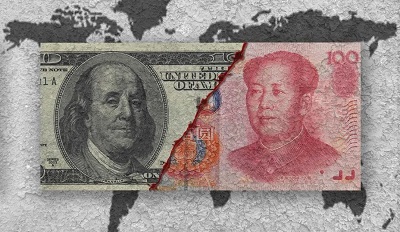
文 | 谢祖墀
2022-05-13
本文是高风咨询CEO谢祖墀博士撰写的文章,此文于2022年5月13日发表在香港《灼见名家》网站。我们可以预见未来几年中国与西方(特别是美国)却可能会有3种情景出现。
自从俄乌战争开始,以及上海新冠疫情爆发以来,许多企业(包括外资和内资)以及投资人都在问同样一个问题:中国与西方在贸易和商业方面的关系在将来会在哪些方面产生改变,而这些改变又将会对他们企业产生什么影响?今天,我们来探讨一下这个话题。
中美角力持续 世界风云变幻
大家都知道,今天的世界风云变幻,充满着极大的不确定性。而这些不确定在很大程度上涉及了中国(全球最大的贸易国、在众多行业和产品中最大的市场之一、重要的供应链枢纽)和以美国为首的西方国家。
自从中美贸易战开始以来,中国与美国在经贸关系已经产生了根本性的变化。同时亦基本结束了自从1990年代以来发展的全球化进程。与当年美国和苏联的冷战不一样,经历了30多年的全球化发展之后,中美两国,以及中国与西方国家在许多方面已经进行了高度的融合,可以说是「你中有我,我中有你」。
但是这种高度融合的情况并未阻止某些人提出「脱钩」的言论。具体表现在对高端芯片的停供、对一系列中国科技公司的制裁和「清洁网络」等各种举措。
但在同时,中国对外的贸易额却不断攀升。在这次疫情之前,2021年中国的货物贸易进出口总值达到39.1万亿元,同比增长21.4%。而中国的外国直接投资亦破了记录,2021全年为1734.8亿美元,超越美国成为世界第一大外资流入国。
加强中国与西方脱钩的正负因素
有人说,这是由于中国的韧性所在。我们首先分析一下有什么因素将会加强中国与西方脱钩,而又有什么因素将会让双方的关系继续增强,至少不会恶化。
从负面因素上来看,地缘政治肯定是一个重要的影响因素,其原因不言而喻。俄乌战争将加剧西方对他们认为是非盟友的高度怀疑。西方给予俄罗斯的制裁将不单只对俄罗斯产生直接的影响,对中国无论在直接方面或是间接方面的影响亦在所难免。自从疫情爆发以来,以中国为中心的供应链亦受到严重的中断,许多产品的供应都受到了影响。对某些行业来说,「脱钩」已经形成。比如众所周知的是高端芯片的供应。在智能汽车方面,中美双方在智能基建方面的投入和理念不一样──实际上,在智能以及自动驾驶方面,中美已经基本走上了不同的路。
根据于5月刚发表的上海美商会的调查,56%的受访者表示供应链中断对他们的业务产生了负面影响。有68%的受访者表示目前可以部分复工,但其中一半都认为供应链中断是他们目前面临的最大挑战。
至于正面因素,中国市场就许多行业和产品而言正处于世界领先地位。同时,中国亦是许多产品的全球供应链中心,特别那些依赖庞大供应网络集群和高效人力资源的行业。同时,中国在不同领域中亦体现了强大的创新能力,无论在数字经济、新能源、人工智能或者5G技术等领域,中国已经形成了强势的创新动力和生态系统。
不少跨国公司认为他们必须要处于中国,以便他们通过市场中的实践来吸收中国创新的真髓,从而在中国以及中国以外的其他市场学以致用。中国的创新正在从过去跟随别人所定下的规则去进行创新,逐渐在某些领域变成新标准的制定者,不但为自己,亦为他人制定新的标准。
从更高的视角来看,在这次国际地缘政治开始大变之前,事实上人类不但已经充分接受了全球化的理念,认为它是能为全人类带来整体好处的;而且在科技驱动之下,人类一直期望着一个「互联互通」的世界可以出现,而人与人之间的关系可以透过一个「向善的网络」来进行更多、更直接的沟通。
未来中国与西方的3种情景
不过这样的理想在今天的局势看来不一定可以在短时间内出现。而从更实际的角度来说,我们可以预见未来几年中国与西方(特别是美国)却可能会有3种情景出现:
第一种情景可以形容为「一个世界,两个体系」:世界变成了两个集团,一个由美国领导,一个则由中国发挥关键作用。这两个不同且高度割裂的中心,使得全球的贸易投资、供应链、人才流动等受阻,而基于这种情景,亦会形成多个独立的跨境金融支付系统。
从另外一个极端来看,我们可能迎来「全球化2.0」,在这第二种情境下,中国将继续作为向西方供应产品的主要来源,同时也将成为需求来源,形成国内国际双循环。RCEP等区域贸易集团亦将加强中国的贸易和供应链地位。虽然SWIFT仍是主要国际支付系统,中国的CIPS亦将成为一个有影响力的支付系统。中美关系的演变,亦可能进入一种折衷的情景:「错综复杂的关系」。
在这种情景下,中美之间部分「脱钩」、部分「重新挂钩」、亦可能部分「新的脱钩」。中国作为全球供应链枢纽的作用虽仍然重要,但是有一定程度的供应链会「回流」到西方/美国,一些新的制造业亦将在西方/美国建立,以及一些「区域化」和「本地化」现象亦会出现。此种情景下,虽然SWIFT仍然是主要的支付系统,但其他系统亦将会涌现。
当然,这些情景在很大程度上将会取决于企业所处的行业。对于一些敏感度比较高的行业,如高科技,某种程度的脱钩完全有可能;相反来说,敏感度较低的行业,如快消品、零售、食品等,「全球化2.0」的情景则最有可能实现。而对于大部分其他行业而言,「错综复杂的关系」是最有可能出现的情景。
随着时间的发展,这些情景将会怎样演变?许多跨国企业和中国企业的管理层人员、智库及研究机构亦曾与我交流过。可以说,大家的观点各不相同,众说纷纭,都自觉是有理有据的。
而我个人则倾向认为,总的来说在主体经济上,中国与西方将会逐渐转移到「全球化2.0」的情景。但这需要一定时间和某些「有定义性的时刻」(defining moments)出现。
对未来的发展做出清醒和客观的判断将是制定具体战略的最基本输入。
灼见名家 | 谢祖墀:新CPU应当超越旧CPU
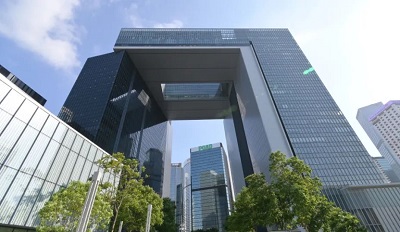
文 | 谢祖墀
2022-05-05
本文是高风咨询CEO谢祖墀博士撰写的文章,此文于2022年5月5日发表在香港《灼见名家》网站。下一届的香港特区政府要建立的并不是一个「旧的CPU」,而是一个具有整体和超越过去眼界和视野的能力,加上能协调强大执行力的新战略规划能力部门。
我在4月20日「灼见名家」上发表了一篇名为〈新香港特区政府必须建立战略规划能力〉一文。在4月29日,李先生在宣读他的政纲时提到,他将会「强化政策研究和统筹能力」。有报道说,李先生是要重新建立中央政策组(CPU)。
国家主席习近平多次提到,我们现在已经进入了「百年未有之大变局」。正如他说的那样,受快速变化的地缘政治、新冠肺炎疫情、气候问题、科技以及俄乌战争的影响,香港面临着诸多不确定性,分裂与融合同时存在。在香港内部,人们仍然需要面对2019年修例风波的后果、疫情困扰,以及长期存在的住房、教育、社会向上流动性不足等问题。
中国经济模式 重在不断试验
自2020年起,香港开始将自己的规划和目标与中国大陆的国家规划相互结合。中国具备在中央和地方两级,都可以良好运作的规划体系和能力,然而香港在这方面没有可以与之对应的政府部门或组织。
某些评论者们不断声称,这种国家层面的战略规划是「计划经济」,并批评它并没有以市场为导向。但这是错误的观点。虽然中国这种规划方法起源于前苏联,但它已经演变成另一种非常不同的体制。与苏联不同,中国孕育了大批的企业家和民营企业,他们通常会根据市场经济的原则,以及透过了解国家政策进行投资和经营。地方政府亦与中央政府的政策保持一致,来支援当地民营企业的发展。许多跨国公司也从这种模式中受益。
在过去40多年的中国政治开放中,按照「有中国特色的3层经济发展模式」揉合了政府规划和市场力量的优势,中国在经济市场方面取得的成绩有目共睹。除了政府和市场、企业的揉合之外,这种做法关键在它能容许不断的实验和按实验结果来进行调整。这是「以结果为导向」的一个恰当的范例。
香港规划须考虑中国及世界格局
CPU成立于1989年英国统治香港时期。1997年香港回归后,CPU仍然保留了下来。在董建华先生当特首的期间,我曾担任CPU的非全职顾问。当时的CPU非常注重从香港的普通民众那里获得对政府政策的反馈。虽然达不到应有的战略高度,但它还是能够从政府以外的专业人士那里,收集到一定程度和水准的战略思考。今天,如果仅仅只是简单地复制旧CPU的模式,将并不能满足香港今天和未来的战略需要。「新CPU」应该涵盖更广泛的、更具有战略性的香港特区议题。
下一届香港特区政府的当务之急,是重塑战略规划能力,打破各部门之间的壁垒,并且应该在规划香港特区自身战略的过程中,将中国内地,以及全球宏观的背景影响考虑在内。特区政府还不应只进行短期、以政策局为主导的规划,而应该同时解决跨职能边界、复杂的长期问题。
战略规划既是一门科学,也是一门艺术,更是一项专业能力。战略规划始于对问题的明确定义,以及对需要做出选择的来龙去脉的深入理解。下一届香港特区政府应当建立起一个恰当的战略规划组织,并招纳能够胜任这份工作的人才。这个小组需要与中国内地有关部门(特别是国家发改委)以及香港特区政府的主要官员建立紧密合作关系。
另一方面,由于与公众的互动是了解社会动态的重要来源之一,因而,这个战略规划的团队应当深入到当地的社区与基层中。同时,它亦需要与本地、内地以及全球的关键意见领袖、智库保持密切联系。因此,这个团队的关键人物不仅需要在战略思维和战略分析方面训练有素,而且需要能够巧妙地用其他人可以理解且欣赏的语言,来表达复杂而且更有深度的见解,特别是面对国际上有影响的机构或个人。
地方政府须扮演积极角色
事实上,尽管香港回归已经快25年了,香港特区官员对于中国内地的治理体制,特别在产业发展规划方面的了解甚为乏善足陈。许多官员以为,在内地任何事情都是「阿爷话事」,仿佛在上面一个人或一小撮人便能令所有事情发生。
内地的产业规划虽然往往是内地中央政府制定大方向,但地方政府却扮演着重要的角色。积极的地方政府会扮演引导投资者的角色,往往透过地方引导基金投资于初创企业,向它们进行孵化,透过当地政府成立的生态系统,协助初创企业快速成长,并于适当的时候退出投资。
深圳在这方面是佼佼者,据立法会议员洪雯女士的研究,深创投是深圳市政府和社会资本共同出资,于1999年成立的。深创投采取市场为导向的经营方式,积极引导资本培训初创企业。截至2022年3月,深创投已投1440个项目,居内地创投行业之首。深圳市政府在2004年出资成立深投控,属国有资本投资公司,并以科技金融、科技园区、科技产业为投资目标。2020年成为深圳市售价国企世界500强企业。
而洪女士亦建议政府化被动为主动,拨出未来基金中的一定份额,设立一个由香港政府直接参与的创投机构。在资本构成方面,可纳入部分「香港增长组合」及其之下的「策略性创科基金」和「大湾区投资基金」。若采用混合所有权模式,可以邀请国内、国际顶尖投资机构战略合作,力求股权结构多元化、管理团队国际化。
在投资标的方面,应该聚焦对香港长远发展具战略价值的创科产业、制造业及其他能丰富本地经济结构的新兴产业,覆盖从初创期到成长期的企业全生命周期,既孵化本和培育本港优秀企业,也吸引境外企业来港,为香港经济开拓新的增长点。
这是一个很好的建议。不过,在做这方面的决定前,相关政府必须对该议题进行详细的研究和分析,以及提供详细的可行方案。没有类似「新CPU」的规划机构,是很难有效、及时做到应有的设计和决定的。
新CPU须建立自身的生态系统
从更宏观的角度来看,在现在(和过去)的相关特区政府团队里,实际上放了多少精力去分析和了解,更不要做出预判,中国的发展和国际局势对于香港本身的发展有什么影响,以及我们的发展和应变战略应该是什么?
过去数年间,中国推出了一些非常重要的政策,这些政策将会指导中国在未来的发展、它和国际,特别是区域伙伴的关系。我们有没有研究过,共同富裕、双循环经济政策、科技创新、乡村振兴、绿色经济/碳中和、全国统一大市场等重要政策对香港的含义是什么?还有「一带一路」、RCEP(区域全面经济伙伴协定)和CPTPP(跨太平洋伙伴全面进步协定)等区域性甚至跨大洲的倡议或协议,对香港有什么影响?
从全球局势来看,俄乌战争、新冠疫情、中美博弈、战后世界新秩序的可能场景,香港又应如何事前作出适当的部署呢?特别是地缘政治的瞬息万变,错综复杂的关系之间的演变,将会对香港以及中国有什么影响?
政府必须深思熟虑,有一班人全职地去观察、思考、研究和不断地作出对香港、大湾区乃至中国最恰当的判断。这是一份全职和专业的工作,需要透过多类渠道收集信息和进行分析与沟通。换句话说,这组织部门必须建立它本身的「生态系统」。
下一届的香港特区政府要建立的并不是一个「旧的CPU」,而是一个具有整体和超越过去眼界和视野的能力,加上能协调强大执行力的新战略规划能力部门。
中国的规划演变的历史是市场与政府边界调整的历史。香港拥有有效的市场,过去缺的是有为的政府,但政府如何有为,需要从大历史、大的体系去考虑,香港需要大格局。
香港市民对新一届的特区政府抱有很高的期望。因而,建立一个能够超越旧CPU战略规划能力的新CPU应该成为目前的重中之重。
灼见名家 | 谢祖墀:新香港特区政府必须建立战略规划能力

文 | 谢祖墀
2022-4-20
本文是高风咨询CEO谢祖墀博士撰写的文章,此文于2022年4月20日发表在香港《灼见名家》网站。下一届香港特区政府应该建立(或重振)在战略规划方面的能力和相关组织部门。从根本的工作本质来说,这部门应该要比以往的CPU更加战略性;相对政策局来说,更有驾驭的权力。
自从英国殖民地时代的财政司郭伯伟所提出的「不干预政策」,自上世纪六十年代起一直被奉为香港经济政策的核心价值,到今天已过了50年。这种今天看来极端自由放任(laissez-faire)的方针,一直被认为是香港经济政策的金科玉律,而同时主导了香港政府体系内受训练出来的政务官(AO)的思维和做事方式。
这种情况尽管于回归之后,依然某种程度上影响着特区政府,在做出政策时的思维方法。
港府缺乏战略观点
尽管「不干预政策」于港英时代被奉为主要的决策依据,港英政府于1989年设立了中央政策组(CPU),目的是为港府三位主要官员研究复杂的政策问题(特别是那些涉及政府多个决策范围的政策问题),分析各项可供选择的方案,以及提出切实可行的对策。
自从香港回归之后,CPU一直延续下来。我亦曾于董建华时代担任了CPU的兼职成员,对它的运作有一点了解。严格上,CPU(起码我在任的时候)工作主要在几方面:第一,通过成员们吸收社会对香港政府的某些政策的反应;第二,让各政策局局级官员在推出新政策之前,来进行预演,听取成员的回馈;以及第三,定时进行民意调查,对香港人对政府方面的意见进行调查和分析。
感觉上,尽管有了CPU的存在,香港特区政府在主要的大战略和大观点方面依然缺乏;起码从外界来看,不是很清楚。而香港尽管回归之后经历了几位特首,他们之间对战略的认知和执行有相当大的差异,从最本质上依然延续着过去的思路,主导着香港的政策。
到林郑月娥年代,她甚至取消了CPU,连最低限度的跨职能规划能力都被消除了。政策变得更为困囿于不同政策局的个别范围之内,观点集中于纵向思维,而对较宏观和跨越既定纵向边界的横向思考和考虑并不足够,特别在需要充分了解世界与中国发展的全局观、地缘政治、科技发展、全球企业动态等方面是非常不足够的。特别是在2020年之后,香港特区政府需要开始积极融入中国国家发展大局之中,这方面能力上的缺口更加明显。
中国战略规划优点
众所周知,中国政府的战略规划能力在国家发展过程中扮演着重要的角色。国家发展和改革委员会(发改委)在其中扮演着最关键的角色。它的主要职责是拟订并组织实施国民经济和社会发展战略、中长期规划和年度计划,同时牵头组织统一规划体系建设。此外,发改委负责国家级专项规划、区域规划、空间规划与国家发展规划的统筹衔接,以及起草国民经济和社会发展、经济体制改革和对外开放的有关法律法规草案,制定部门规章等。
中国的重要规划主要体现于它的5年规划,而这些规划从中央到地方政府进行层层分解,令全国都可以按规划来进行适当的部署和执行。尽管有不少人认为这种「从上而下」的规划方法违反了以市场为主要资源配置的原则,而事实并不如此。而且总的来说,中国在过去3、40年的高速经济发展证明了从国家层面作出适当的规划,是可以相当有效的。
客观来讲,中国的体制揉合了国家规划的优势和市场经济的活力。它的有效性同时取决于其他两个因素,第一是企业,特别是民营企业的高度参与。第二是地方政府作为中央政府和民间(包括本地和外资)资本(和国有资本)之间的纽带,让国家政策可以透过与企业合作在地方层面有效执行。
事实上,不少国家和地区政府在推动当地经济时一直扮演着重要的角色。东亚国家如日本,韩国,新加坡等,在他们最高速发展的时候,政府都一直扮演着重要的引导角色。台湾地区在发展最快速的阶段时,政府亦起了关键的带头作用。
美国于罗斯福总统年代执行的「新政」,主要条件亦是政府大力参与经济建设,让美国可以从大萧条时代快速走出来。今天我们看美国总统拜登的「重建美好未来」(Build Back Better)新政,实际上亦涉及了不少政府的直接参与。
战略规划日趋重要
今天香港面临的问题、机遇和挑战日趋复杂、多变和不确定。许多问题是不容易从某种既有的方式来对待和分析的,因为许多事物的边界正在不断的转移,同时新的事物亦经常出现。假如我们只凭过去的眼光来观察和进行分析,往往连最低程度的problem definition(问题的定义)都可能弄不清楚。从时间方面来看,同一议题可以穿越时空而所延伸,简单地把问题分成「短期」和「长期」往往不足以完全掌握议题的核心和解决的方法。
其实不单在政府里面,在企业里面特别是那些大型的跨国企业,他们一般都会设有战略部门,因为这些企业都知道,他们在做营运的同时,必须具备一定的战略分析能力来协助企业的CEO和其他高管作出正确的预判和战略选择。特别是在今天全球瞬息万变,不确定性特别高的环境里,战略部门对跨国企业的重要性日趋重要。
在考虑战略的时候,企业必须清晰知道他们要做的战略部署基本原因是什么?同时他们亦需要对影响公司发展和战略的大局(Context)进行深刻的分析和了解。从最基本面来看,战略主要要回答几个基本问题:1)在哪里玩?2)如何玩?3)什么时候玩什么?和4)我们胜算的理由何在?假如连企业都需要战略部门,比企业复杂得多的政府是否更需要这方面的能力呢?
战略的本质就是要在不确定性情况作出最优选的决定,包括风险的规避,而做此决定的时候必定会面对来自多方面的制约因素和竞争(和合作)态势。战略的核心就是要在这样情况中能够对大局和将来作出客观和合理的分析和抉择。当整体战略出来之后,战略部门会负责将此整体战略进行分解,让整体战略可以分拆到可执行的水准上,以及将分解了的战略单元与相应的绩效衡量指标(KPI)连接起来,让战略和执行可以一气呵成。
战略是一门专业,其中有科学的成分,亦有艺术的成分。负责战略工作的人必须拥有足够的资质和天分,并不是随便找个人来担当就行。
建立内外有效沟通
我认为下一届香港特区政府应该建立(或重振)在战略规划方面的能力和相关组织部门。从根本的工作本质来说,这部门应该要比以往的CPU更加战略性;相对政策局来说,更有驾驭的权力。他必须要与内地重要规划部门,如中央和各地方的发改委保持紧密的联系和工作关系。
当然他应向特首负责,并协助特首和司长们分析和解决,重大和关键的重要战略问题和相关的顶层设计。他必须与各政策局保持紧密的工作关系,让重要战略和局级的政策能够保持一致。
在工作过程中,战略部门对外部环境应该保持高度的联系和紧密的观察。这不仅仅包括香港本身、香港与内地,特别是大湾区之间的关系、同时亦应包括对亚太区域以及全球形势有着密切的观察。这需要战略部门的从业者必须走进社会,与社会各阶层经常接触,能够充分掌握着社会对政府的回馈和意见。
此战略部门还应与全球的政府对口单位和相关智库研究机构,建立和保持紧密的沟通和交流。从对外关系来说,战略部门亦应利用这些对外的关系,积极讲好「中国的故事」和「香港的故事」。有需要时,他们(可以配合内地相关单位)对国际事务作出详细的研究。
能够做好这方面的人必须能够进行战略性思考,有深厚而广泛的知识,能横向思考、拥有丰富、跨国界的人脉关系,以及能够娴熟地利用对方能够明白的语言和语境进行沟通。香港很多人都能够说英语,但能够战略性和复杂性地(sophisticated)表达观点的其实不多。
新的香港特区政府令人期待。新的特首要做的事很多,建立有效战略规划和执行能力将是一重要举措。
CGTN | Boao Forum 2022

CGTN: According to a report published by the Boao Forum for Asia (BFA), vaccines are unfairly distributed among countries. How do you view the BFA’s call for global coordination to close the immunity gap between developed and developing countries?
Edward Tse: So today a big issue that we’re facing is actually the inequality of the degree of vaccination across different countries. And I think, on a global basis, we need to have a coordinated effort – especially from those countries have gone through the vaccination stages already – to try to help those countries who are not really up to speed with vaccinations yet. So I think the BFA this time is a very good forum for different countries to talk about how do we create this kind of coordinated effort so that more countries can benefit from vaccines that were developed by the more developed countries in the world.
So far, different countries have undertaken different approaches to try to contain the pandemic. I say today the world is still very much in the middle of the pandemic. No country really has fully recovered from the epidemic yet. Therefore, trying to contain and to arrest the pandemic as soon as possible is a very urgent and important imperative for all of us on this earth.
CGTN: How do you view multilateralism and international cooperation under the challenge of the COVID-19 pandemic and economic recession?
Tse: Certainly the pandemic is hitting every country in the world. The virus doesn’t really know national borders. If we put arresting, or the containment, of the pandemic as a priority, it would require the collaboration across all the countries in the world. And this requires multilateralism, it requires countries coming together and view containing or fighting the pandemic as the most important purpose. And then countries need to find a way to work together. So, multilateralism and international collaboration are the key to fight the pandemic in my view.
There are countries able to develop vaccines and able to manufacture vaccines and so on. Many other countries are not able to do so, and therefore the countries who are able to manufacture and develop vaccines ought to find a way to work together (so) that they can supply the vaccines to those countries who really need them and really help them with the whole process of taking the vaccine. And in order to do that, there’s a lot of barriers that countries or companies involved would need to overcome.
For example, number one is tariffs… to what extent tariffs should be maintained when vaccines go from one country to another country. Second is that right now – especially with the new types of vaccines because they were relatively new inventions – therefore there’s a pretty high level of intellectual property rights being assigned to these vaccines. To a lot of other countries who are in a much worse economic situation, it is not possible for them to really mass produce these kinds of vaccines if the IP price is significant.
So perhaps there’s also a way for the countries to work together to try to figure out how can they deal with the intellectual property issues and so on. And of course, there’s also supply chain issues. Even if the countries are willing to supply vaccines from their country to other countries, then how do you actually transport supply and also get the vaccines ready for the receiving site. Those all require coordination across different countries.
So I see the international collaboration and multilateralism, as I mentioned, to the key in really trying to fight against this pandemic and to overcome what we call the um “vaccination divide” across different countries.
CGTN: What kind of opportunities do you think the BFA 2022 will bring to the companies and countries in the Asia-Pacific region and beyond?
Tse: I think the theme for BFA this time is to read each other and to enhance the collaboration of countries as well as companies across the board to try to fight the pandemic as quickly as possible. So, from that end, there’s a lot that we can work together. I think one of the biggest challenges that we’re now facing is the general economic conditions that’s being affected by the pandemic for over two years.
For this time for the BFA, representatives from different countries are gonna be together and perhaps there’s also quite a number of executives of companies. When they come together, they can talk about mutually how they can help each other to try to address some of the issues that they see; for example, on supply chain, in how the post-pandemic economy would look like, and how companies can work together to try to benefit each other in a new world order after the pandemic. The BFA will play a pivotal role for countries as well as companies who will come together during this occasion.
The world is now facing with a lot of uncertainty, a lot of volatility, partly because of the pandemic, partly because of the geopolitical conditions and perhaps in the extreme case with the war in Europe. A lot of governments, a lot of companies are in a very uncertain stage. A forum like BFA is a great opportunity for a country’s delegates and company delegates to come together to really talk it through, despite there may be differences in opinions and perspective on different things, there’s also an opportunity for people to come together and talk about issues that are all relevant, and also people can share the similar point of view. This kind of occasion is really important to try to break down some of the biases or the misinformation that has been generated so far. I hope the BFA would do a good job and try to help people, to bring the people together so that we can create and share a similar vision of a shared future.
灼见名家 | 谢祖墀:解读中国加快建设全国统一大市场新政

文 | 谢祖墀
2022-04-15
本文是高风咨询CEO谢祖墀博士撰写的文章,此文于2022年4月15日发表在香港《灼见名家》网站。原文英文版于2022年4月13日刊登于《中国日报》网站,此为中译本。
2022年4月10日,中国政府发布了《加快建设全国统一大市场的意见》指导方针,提出打破地方保护和消除市场分割,并破除影响经济增长的障碍,这是在全国范围内推动有效监管、公平竞争和完全开放市场的重要举措之一。
统一准入制度 促进公平竞争
新的指导方针将允许企业家们充分利用中国巨大的国内市场的优势,这亦将加快构建中国高标准的市场生态系统、进一步扩大对外开放,并持续推动中国的深化改革和高品质发展。全国统一大市场的构建将打破地方保护和区域壁垒,可以促进商品、服务等要素在全国范围内更加顺畅的流通。除此之外,统一大市场的构建亦会提高生产和监管效率,从而进一步扩大中国国内市场的规模。
建设全国统一大市场关键举措之一是实施统一的市场准入制度,同时为国内外企业进入市场提供统一的国内生产要素和资源。因此,在促进市场公平竞争的同时,亦可增强市场监管的可预测性和稳定性。事实上,中国政府提出建设全国统一大市场的想法已经有一段时间了,因此,我们必须从整体的角度,来看待官方于近期公布的新政。
中国改革开放40余年,但市场上依然存在许多旧经济体制中遗留下来的问题。市场被分割成多个由当地法律法规管辖的区域,而这些区域受当地政府保护已成为常态。尽管多年来,中国在消除阻碍市场发展的区域壁垒方面取得了进展,但严格来说,中国迄今尚未形成一个统一的大市场。
科技打破壁垒 再思发展战略
随着环境的变化和内部驱动因素的影响,在现在这个时机推出这项新政策是可能的,也是可取的。此外,全球地缘政治、俄乌战争、新冠肺炎疫情等外部因素,对中国在全球商业中的角色产生了重大影响,亦增加了贸易的不确定性。中国为了实现其制定的经济增长目标,需要确保其内部商业和贸易的稳定,即中国政府经常提及的「内循环」。
在复杂严峻的外部环境和全球新冠肺炎疫情带来的压力下,中国正在积极地采取具体措施,从而加快建设高效、基于规则和开放的国内统一市场,并鼓励公平竞争。这亦是国家深化市场化改革,为市场主体注入更多活力,同时推动国内本土企业和外资企业可持续发展的最新举措。
建设强大统一的国内市场,必须消除国内外企业的市场准入壁垒,构建开放的市场体系,促进商品和服务的内外畅通流动。而近年来,随着中国科技的快速进步与发展,现在可以利用大数据、人工智能和区块链等技术打破不同地区之间的利益藩篱和政策壁垒。在这种情况下,企业和地方政府更加需要仔细思考自身的竞争优势,从而设计各自的发展战略,而不是仅仅考虑一些预先具备的(因体制给予的)定位优势。
为了确保统一大市场的建设,中国政府需要确保竞争环境对所有人都是公平的。政府应该鼓励适当与正确的竞争,同时确保规则的公平性与透明性。为此,我们可以期待未来更多的民营企业和跨国公司加入中国市场的竞争,这亦将进一步促进中国的竞争和创新。
跨省市合作区域试点
建立全国统一大市场的想法已经酝酿了一段时间。事实上,许多跨国公司多年来一直有一个疑问,中国是一个全国性的市场还是一系列的地方市场?按照中国的方式,中国政府已于好几年前开始在区域层面,对这一政策进行试验与探索,例如建设长三角一体化示范区、京津冀地区和粤港澳大湾区等跨省市合作区域。亦是这些试点地区的成功经验构成了国家新政策的基础。
建设全国统一大市场的另一个目标是通过促进生产要素的市场化配置,说明商品和服务的流通来降低交易成本。以此为契机,中国将进一步统一基本制度和规则,包括产权保护、市场准入、公平竞争和社会信用。中国需要在不同部门分别建立其基础设施和平台,并实现其在全国范围内的无缝连接,这其中包括物流、交易资讯以及交易平台的共用。而全国统一大市场的建立将为中国经济发展提各种生产要素,这些生产要素包括土地、人力资源、资本、技术、资料和能源。
除此之外,市场将会建立更加统一的商品和服务标准。而为了进一步打破地方保护和区域壁垒,确保公开、公平的竞争,相关的市场监管、法律法规和政府执法亦将变得更加规范。
私企、外资仍是主要参与者
我们曾接触过的一些公司提到,他们并不能完全了解这项新政策的实质内容。从我的观察来看,造成这种情况的一部分原因是政策还未有交代得非常清楚。有些人认为这个新政策会将中国带回「计划经济」模式。但事实上,虽然中国政府在这项新政策中,将发挥更重要的作用,但未来的市场主要参与者,将会是更多的私营企业和外资企业。基于规则的竞争将起着决定性作用,中国经济的整体效益亦将会提高。
总而言之,全国统一大市场的建立对平衡资源配置、促进更公平的竞争环境,以及振兴全国经济增长起着决定性作用。中国政府已采取多方面的努力,不断打造公平的市场环境,如打击垄断和不正当竞争、消除地方保护主义,以及进一步开放不同产业等。
而新政策的提出,将通过采取更加统一和清晰的措施,与其它的政策一起,为本土企业和跨国公司创造一个更加公平的竞争环境。在新政策下所提出的市场开放,不仅将提高中国经济,亦将更近一步改善全球供应链和创新体系,从而进一步促进国际经济发展。
China Daily | Push For ‘Unified National Market’ Gains Pace
Push For ‘Unified National Market’ Gains Pace As New Guidelines Consolidate High-level Opening

By Edward Tse
2022-04-13
A recent article authored by Gao Feng Advisory CEO Dr. Edward Tse was published by China Daily on April 13.
The Chinese government’s recent guidelines for accelerating the building of a unified national market envision discontinuation of local protection and market fragmentation to unblock key sticking points that weigh on the growth of the economy. This is a part of a wide-ranging push for an effectively regulated, competitive and fully open market across the country.
The new guidelines unveiled on April 10 will allow entrepreneurs to fully exploit advantages of China’s ultra-large domestic market, which will not only accelerate the building of a high-standard market ecosystem and expand opening-up to the outside world but shall also push in-depth reforms and high-quality development.
A unified national market will discontinue local protection and facilitate smooth flow of goods and services throughout the country. Moreover, it is expected to enhance efficiency and expand the scale of China’s domestic market.
The key initiatives are implementation of a unified market access system and development of a unified domestic market for productivity factors and resources to provide access to both domestic and foreign businesses, promote fair competition, and enhance predictability and stability of rules governing the market.
The way we understand it, Beijing has been working on such policies for some time, and official announcement of this policy must be viewed from a holistic standpoint.
While China has been undergoing reform and opening-up for more than four decades, many remnants from its old economic system still linger. Fragmentation of the market into many localities governed by local rules and regulations that offer protection for the local has been the norm. While progress has been made over the years in removing bottlenecks that impede growth, China, strictly speaking, has not become a unified market so far.
With the changes in the environment and the readiness of internal drivers, it is now possible and desirable to launch this new policy. Additionally, global geopolitics, the Russia-Ukraine conflict, the pandemic and other external factors have had an impact on China’s role in global business and trade has become somewhat uncertain.
In order to generate the needed growth in its economy, China needs to ensure stability in its internal business and trade, or in the Chinese way of saying, the “internal circulation”.
China is taking concrete steps to accelerate the building of a unified domestic market that is efficient, rules-based and open and encourages fair competition amid pressures emanating from a complicated and grim external environment and COVID-related apprehensions.
This is the country’s latest move to deepen market-oriented reforms and inject more dynamism into market entities, to propel sustainable growth of both domestic and foreign businesses.
In order to build a strong and unified domestic market, it is essential to remove market entry barriers for domestic and foreign companies, build an open market system and promote both internal and external movement of goods and services.
With the fast development of technology in China in recent years, it is now possible to leverage technologies such as big data, artificial intelligence and blockchain technology to break down barriers between local areas of interest.
In this context, companies and localities will need to think about their respective development strategies based on their competitive advantages, and not some pre-defined positional advantages.
For a unified market to take place properly, the government needs to make sure that the playing field is level and fair for all. Competition should be welcome and the rules of the game should be fair and transparent.
To this end, we can expect even larger market access for private-sector and foreign companies. This will foster further competition and innovation in China.
The idea of a unified national market has been in the works for some time. In fact, over the years, many foreign companies have questioned whether China was a national market or a series of local markets.
In the Chinese way, Beijing had begun experimenting with this policy at a regional level, in clusters as the Yangtze River Delta, the Jing-Jin-Ji (Beijing-Tianjin-Hebei) region and the Guangdong-Hong Kong-Macao Greater Bay Area. Experience from these pilot areas formed the basis for the new national policy.
Another goal is to reduce the cost of transactions by facilitating the market-oriented allocation of production factors and helping circulation of goods and services.
China will further unify the basic systems and rules, including those for property rights protection, market access, fair competition and social credit.
Facilities and platforms in different sectors, including logistics, deal information and transaction platforms, should be seamlessly connected across the country. A unified market will be established for various production factors, including land, labor, capital, technology, data and energy.
In addition, unified standards for goods and services will be set up. Supervision, regulation and law enforcement will be more standardized with the aim of breaking down local protection and regional barriers to ensure open and fair competition.
Representatives of some companies we spoke to mentioned that they could not quite get the reasons for and substance of this new policy. This is at least partly due to the way the policy was presented.
Some people thought this new policy is taking China back to its State-planning approach. While the State will certainly play an important role under this new policy, it will be largely the private-sector enterprises and foreign companies who will take part in the new game. Rules-based competition will become more prevalent and the overall efficiency of the entire Chinese economy should improve.
Overall, the building of a unified nationwide market plays a decisive role in balancing resource allocation, promoting a more level playing field and revitalizing growth across the country as a whole.
Along with the recent efforts at cracking down on monopolies, unfair competition, local protectionism and opening-up of industries, the new policy is also expected to create a more level playing field with a more unified and clear approach for both local and foreign players. The guidelines’ call for opening-up will go a long way to improve not only Chinese but also global supply chains and innovation chains for greater international economic activity.
灼见名家 | 谢祖墀:在复杂多变的国内外形势下,中国企业将如何发力?

本文是高风咨询CEO谢祖墀博士撰写的文章,此文于2022年4月6日发表在香港《灼见名家》网站。在复杂多变的环境里,中国企业家必须建立更强的全局观,对主体趋势必须具有更深邃的洞察力,同时对风险有全面的分析和判断,并能建立底线思维。
2022年3月5日,中国国务院总理李克强在第13届全国人民代表大会第5次会议上作出《政府工作报告》。他在《政府工作报告》中指出,2021年是国家历史上具有里程碑意义的一年。过去一年,在防控新冠疫情的同时,中国的经济保持稳步发展,中国的创新能力不断增强。此外,中国亦在持续不断的推进生态文明建设,并取得了显著成果。
李克强总理提出,2022年中国经济发展的目标是国内生产总值增长5.5%左右,这与2021年12月国家主席习近平召开的中央经济工作会议「以经济建设为中心」的基调一致,是结合了现实需要和潜在能力后的综合考虑。
3月16日,副总理刘鹤在研究当前经济形势和资本市场问题的专题会议里,提出中国在当前的复杂形势下,最为关键的仍是坚持以经济建设为中心,保持经济和资本市场平稳运行。
推进科技创新 促进自立自强
中国「十四五」规划中将科技自立自强作为国家发展的战略支撑,李克强总理亦强调了要将创新作为发展的首要战略,尤其是要不断推进科技创新。
在过去的几年,中国在科技创新方面取得了卓越的成果:中国数字经济规模连续多年名列世界前茅,信息通信基础设施、数字消费、数字产业等快速发展。中国亦在多项关键核心技术上取得突破,例如我国新能源汽车产业链已经建立新的赛道,产销量连续5年居世界第一;5G技术领跑,核心专利数世界第一,5G基站建设持续推进并率先实现5G商用。
未来一年,不断提升科技创新能力和促进数字经济发展,依然是国家战略发展的重点,中国政府也为此提供了诸多方向的支持。例如:「东数西算」工程的推进将一步拉动IT基础设备及零部件产业链发展;VR/AR与元宇宙的结合将促进智能硬件的再创新;智慧城市、数字乡村的发展,在促进产业数字化转换的同时,将数字技术与实体经济更好地融合;「重点产业强链补链行动」的开展将为半导体、人工智能、5G等关键产业链国产供应商崛起提供支持,从而增强制造业核心竞争力,并进一步促进高端产业的发展。
除此之外,汽车产业亦是未来国家战略发展聚焦的领域之一。中国将继续支持新能源汽车的消费和制造,包括对税收、供应链,以及对企业自身的支持。在近期开展的「两会」中,多个汽车企业代表提案中表明,要大力发展新能源汽车相关的核心技术、标凖,以及相关设施,以保障供应链的安全和提高国产化水平。国有企业、民营企业和不少外资企业都在积极响应政府的号召,共同推进新能源汽车行业的发展。
建设生态文明 整改无序扩张
自「十八大」以来,生态文明建设与可持续发展成为了中国国家战略中不可或缺的一环。李克强总理亦通过政府报告,再次强调了要持续改善生态环境。中国将继续努力推动能源革命,为实现2030年碳达峰和2060年碳中和的目标,制定切实可行的计划,其中包括煤炭清洁高效利用,煤电节能降碳改造、供热改造,大型风光电基地的规划建设,以及可再生能源发电建设等。
政府正是通过这一系列的计划与措施,加快形成绿色生产生活方式,践行「绿水青山就是金山银山」的理念。可预见,国有企业、民营企业和外资企业们亦均将积极参与到这一过程中来。
近年来,中国平台经济迅速发展,在满足消费者需求等方面作出积极贡献的同时,市场垄断、无序扩张的问题日益突显。应对监管滞后甚至空白这类问题,政府正在作出努力,逐步加强监管,相关部门将通过更加规范与透明的监管要求与手段,对大型平台公司的工作进行整改与治理,从而促进平台经济的健康发展,提高其国际竞争力。
未来全球化将以中国为重心
此外,随着国际事态的复杂多变,地缘政治风险对于中国经济的发展亦有相当影响。此次报告虽未提及地缘政治的影响,但随着最近国际局势紧张,中国经济发展亦增加了不确定性。俄乌冲突引发的黑天鹅事件引起了全球市场的波动,包括股市下跌,原油、天然气、粮食和金属等价格大幅波动和供应链的割裂,一系列的经济变化引起了国际社会,包括对中国的广泛关注。
中国在过去40年中迅速成长为全球第二大经济体、世界上最重要的贸易国和制造国之一,亦是俄罗斯和乌克兰的主要贸易伙伴。许多国际舆论因此认为,未来中国的贸易成本将会提高,而通货膨胀带来的压力,将对中国经济增长带来挑战。
我认为,在国际局势持续紧张之际,俄乌冲突后的新国际秩序中,虽然中国会受到某种程度的影响,但中国将会成为全球经济发展的主要稳定之堡垒,起码相对上而言。尽管逆全球化的力量俨然日趋壮大,全球化的基本驱动因素仍将会存在,并且逐渐将以中国为重心或重心之一。
表面上,某种力量将会驱使某种程度的「脱钩」产生,但中国的经济规模、科技力量和供应链能力,以及逐渐对外开放的政策将让全球化和互联互通的黏力以中国为中心地加强。
特别是在全球金融体系中,军事冲突后的秩序将加速中国在全球金融体系中的重要性。这对一些本来依赖原有的金融体系为生的企业们将是一项威胁,但对一些可依靠新的金融体系而随机崛起的颠覆型企业将会提供极大的机会。
在复杂多变的环境里,中国企业家必须建立更强的全局观,对主体趋势必须具有更深邃的洞察力,同时对风险有全面的分析和判断,并能建立底线思维。
中国经济如今已迈向高质量发展阶段。未来更将以数字赋能产业、城市、生活,更多激发企业的创新能力和新的商业模式,更多的资源亦将向制造业、服务业、科技创新、生态环保、中小微企业等领域倾斜,更加重视科技创新投入。而在这些领域上,中国企业将能找到不少发力的地方。
China Daily | Nation Continues to Offer Promising Opportunities

By Edward Tse
2022-3-15
A recent article authored by Gao Feng Advisory CEO Dr. Edward Tse was published by China Daily on March 15.
Among multinational corporations, a sense of unease with today’s conflicts and sanctions is understandable, as they need to address short-term fluctuations and at the same time take an informed and confident view of the bigger picture.
Because of China’s important role in international affairs as the world’s second-largest economy and potentially the largest market in the world, it is providing an anchor amid global uncertainties.
China is the largest trading partner of many countries and is the epicenter of many global supply chains. It became the largest trading nation in 2013, and its largest trade partners include the European Union and the United States as well as geographical neighbors Southeast Asia, Japan and South Korea.
China is a member of the Regional Comprehensive Economic Partnership, a regional trade agreement with 15 countries that account for 30 percent of the world’s population and 30 percent of its GDP. The RCEP is the world’s largest free-trade agreement.
China’s quickly burgeoning middle-income population has become a substantial consumer of goods and services. According to the nation’s National Development and Reform Commission, China’s middle-income population has exceeded 400 million, with increasing market potential for imports.
China has consistently been opening up market access for foreign companies. The nation’s foreign direct investment inflows are now the largest in the world, and foreign companies are being provided with even wider access. In 2020, as the coronavirus outbreak spread across the world, FDI inflows into China grew to $163 billion, compared with $134 billion into the United States.
China has successfully shed its copycat image and is now viewed for its innovation. It sets its own standards in technology protocol, the creation of new business models and pioneering applications of the central bank digital currency. Its ability to define new lanes of innovation is becoming increasingly profound. Barring extreme unforeseen events, China’s role in global business and commerce is unlikely to diminish.
China’s internal policy focusing on technological innovations should structurally shift the patterns of global business and commerce going forward.
Its effective governance system, well-functioning clusters of industry segments and suppliers, and a general sense of “can do” attitude make global supply chains in China even more important for the world economy.
However, apprehensions of some degree of decoupling and sanctions could complicate global supply chains. In the near future, decoupling, recoupling and new couplings will likely generate new patterns of global supply chains. However, total decoupling is highly inconceivable.
Globalization just may enter a new era. China now strives to ensure that domestic demand and supply reinforce each other, while it continues to pursue external trade. These shifts in emphasis will be the main drivers of globalization going forward.
China is searching for its own form of modernity, with Chinese characteristics. Its modernity combines both the old and the new, Chinese and non-Chinese thought, collectivism and individualism, and ideology and pragmatism. It is inclusive in nature and yet allows for experimentation.
Achieving these goals will take time and require stability, strategic focus and composure. All of these will lead China to play an even larger and more important role in the world economy.
The key to any sound strategy is the ability of leaders to develop a clear and informed view of the future and guide future growth on the basis of synthesis of the past and the present.
Amid the current global turbulence, multinational corporations need to be vigilant and be able to visualize China’s role in the world going forward. A growing number of them are realizing that their global strategy has to have China at its core in the new era.
How Reckitt’s China Business Rose from Fringe to One of the World’s Largest Businesses
Dialogue Review | A New Role for China
灼见名家 | 谢祖墀:为什么战略思维对跨国公司在中国经营那么重要?

文 | 谢祖墀
2022-3-2
本文是高风咨询CEO谢祖墀博士撰写的文章,此文于2022年3月2日发表在香港《灼见名家》网站。原文“Why Strategic Thinking is Important For Global Companies Operating in China?” 于2022年3月1日发表在高风咨询微信公众号,此为中译本。
今天,中国是许多跨国公司的首要市场。尽管存在新冠肺炎疫情蔓延、地缘政治局势紧张、供应链中断和许多其他不确定的影响因素,中国仍然是许多跨国公司业务的中心。2021年1月至7月,中国收到的外国直接投资(FDI)达到1,007.4亿美元,同比增长30.9%,超过了美国,成为了世界上最大的FDI接收国。
除此之外,根据上海美国商会2021年中国商业报告统计,超过80%的受访公司预计它们2021年在中国市场的收入将增加,其增长水准亦将恢复到中美贸易战前的水准。
考虑到变化的规模性、复杂性、速度和强度,以及中国在世界范围内角色的迅速演变,许多跨国公司将目光投向了他们并没有那么熟悉的领域。更为根本的是,不断发展的治理体系,自上而下的国家规划和充满活力的商业领域,通常通过具有能力并且资源丰富的地方政府作为桥梁进行连接,从而建立了一套非常独特的治理方法。
这种治理方法是在历史悠久的文明和文化背景下发展起来,并创造了一个非常独特的环境。因此,很少有跨国公司在刚进入中国市场的时候,便能够完全理解并欣赏这种环境。而中国的治理体系随着时间也在不断发展,今天的中国积极地探索适合自己的现代性,同时在这一探索的过程中解决诸多方面的问题。
不断变化的中国环境
对于很多跨国公司来说,中国给予了他们以前没有接触过的商业环境和格局。当跨国公司初次进入中国时,他们一般会把他们在其他国家的产品或商业模式简单的复制到中国来。在某些情况下,这样的做法是可以达到某种程度的目的的。不过,许多跨国公司很快就开始感受到在中国经营独特的地方,并意识到他们需要作出对应的调整。
中国环境的变化是由政策、科技和需求模式的变动而推动的。中国的政策往往为国家带来新的方向和重点,亦为企业和投资者创造新的机会。如今,科技无处不在,其重要性不言而喻,它亦是企业和企业家创新和发展新商业模式的助推器。而中国的需求模式亦正在迅速变化,它不仅源于新政策或新技术的变化,而且还源于人口结构、生活方式的追求以及品牌偏好的变化。
这些驱动因素通常是多方面的,而且往往以不连续的方式出现。随着市场的扩大,中国本土竞争者全面崛起。在许多情况下,他们甚至是这些跨国公司最大的竞争对手。尤其是在电子商务、线上支付和物流等行业,中国企业已经占据了主导地位。
过去,中国企业仅在少数几个领域占据强势地位,而其中许多是有政策和资源倾斜的国有企业。随着中国不断放松对市场的管制,允许外国公司更多进入,这种现象正在逐渐减少。在更多开放的领域,中国企业表现出的实力和能力,甚至连一些知名的西方跨国公司都难以企及。
造成这种情况的原因有很多。其中一个关键的原因是,中国企业通常比跨国公司更具战略预判的能力。换句话说,相对跨国公司而言,中国企业一般更能在事前能够预判由这些关键驱动因素变化而带来的即将发生的变化和发展。
本土化?什么是本土化?
外国跨国公司很早就意识到了本土化的必要性。在30年前,当我开始为跨国公司提供如何进入中国市场的建议时,跨国公司已经知道他们需要进行本土化。然而,他们当时对本土化的理解仅仅只是雇用一些当地员工,而包括战略在内的主要决策权仍由太过不了解中国背景的经理们掌握。
随着时间的推移,跨国公司对于本土化的理解已经发生了变化。许多跨国公司会雇用一个「中国区负责人」,他通常是具有销售或行销背景的人。他的优先职责是实现全球总部制定的产品和商业模式的销售目标。
另外,一些多业务单位的公司会指定某人为「中国区CEO或主席」,只是他通常没有或很少有业务职责,通常只是公司的一个形象人物。这类「中国区负责人」的工作重点除了作为公司在中国的公众形象外,还要建立和维护与中央和各地方政府以及与中国合资伙伴的关系(如适用)。
在这两种情况下,跨国公司在中国的本土领导力能力都不理想。只是专注于运营的领导者只会专注于根据「已事先定义和制定的内容」来实现公司在中国业务的财务目标。这些管理者通常只重视短期利益,思想是线性的和只关注增量和KPI(关键绩效指标)。
仪式型领导则只是注重公关活动和相关仪式。在业务上他们往往只能扮演边缘的角色,而非核心。跨国公司的总部通常与中国有一段距离,对中国的情况谈不上熟悉,甚至可以说是缺乏了解。
虽然许多跨国公司在中国雇用了当地员工,也从世界其他地方调来了他们的员工,但在某些能力方面仍存在差距,特别是解释不断变化的中国环境的能力。许多跨国公司发现他们无法在中国完全发挥其应有的潜力,不仅是在营收或对于供应链的掌控不如预期,而愈来愈多的是从中国的创新中获取知识和灵感的能力。
许多跨国公司亦被新政策、新创新或新竞争对手的出现打到措手不及。过于简单的对本土化的理解和派遣一些外籍人士到中国,不足以让跨国公司充分实现其目的。
尽管战略思考能力是跨国公司在中国的管理人员的一项关键技能,但并没有多少跨国公司能够有效地培养他们当地管理人员这种方面的技能。在普遍不具备足够基本的战略思考能力情况下,企业可能会掉进一些常见的误区。
1. 错过了「不连续」的机会(或威胁)
在中国,机会(和威胁)往往以不连续的方式表现出来,以运营为中心的线性思维和方法往往会错过大机会或威胁。虽然以运营为中心对实现短期结果至关重要,但从战略上预测下一个不连续的出现方式和时间的能力将意味着企业能否掌握下一个新的机会或威胁。
2. 周边视野不充分
上述第1点的一个推论是,为什么以及关注运营的管理者往往忽略了公司业务的边缘可能出现的问题,因为他们只关注业务的核心。在这里,「核心」意味着公司的核心业务或商业模式,而「边缘」意味着在公司业务的边缘或核心之外出现的新情况。但今天的核心业务可能明天变成公司的边缘业务。相反来说,亦很有可能。能够做到这种动态战略的调整需要管理者拥有适当的周边视野和观察。
以产品市场细分为例,许多跨国公司有时倾向于关注中国的高端市场,因为他们认为在世界其他地方作为高端销售的产品在中国也应该服务于高端市场。不过,当他们专注于这样做的时候,往往很快就会出现一个「中端市场」的细分市场。由于跨国公司的管理者们在专注于高端市场的同时,往往忽略了中端市场的出现,而中端市场往往由迅速崛起的本土竞争者占有。有限的周边发展视野往往限制了跨国公司管理者们在中国所能看到的机会和风险。
3. 忽略了新的竞争对手
只专注于经营却缺乏战略思维的跨国公司管理者们通常将在中国的竞争对手,定义为与他们在世界其他地方遇到的竞争对手一样。他们来到中国后,在一段时间内,通常会遇到一些当地的竞争对手。这些本地公司通常来自相同的行业,并且一开始就被知悉。
然而,随着中国环境的发展,新的本地竞争对手往往「不知从何而来」。这些公司可能是较小的本地公司,他们能够看到新的市场机会,并希望从市场上获得一些份额。或者,他们可能是已经在其他相邻领域取得成功的本土企业。当这些本土企业看到机会时,他们可能决定进入你的市场。这些竞争者往往会带来现有玩家可能不具备的生态系统和能力,因此可以改写游戏规则。
4. 需要更好地了解如何建立自己所需要的能力
跨国公司往往把能力看作是他们内部发展和拥有的东西,有时他们会通过兼并和收购,或组建某种合资企业来获得新的能力。尽管如此,跨国公司普遍认为能力应该是他们自己的,由他们自己拥有。这是从「核心竞争力或能力驱动战略」的概念中衍生出来的概念。
在中国这样一个充满活力的市场中,连续跳跃的战略方法往往要求公司在从一个机会跳到另一个机会的过程中,形成协作伙伴关系,以填补能力差距。一般称「生态系统」,这些合作关系的形成和维护正日益成为中国企业战略的一个关键部分,就这一点而言,在中国的世界范围内也是如此。注重运营的跨国公司经理人往往缺乏前瞻性和主动性,未能为其公司建立正确的生态系统。
思想领导力和沟通是关键
跨国公司的中国业务领导人的角色因跨国公司本身的定义而不同。跨国公司(通常是多业务单位)的中国区负责人最原始的角色是一个仪式性的推动者。随着跨国公司本身对这一职位的战略重要性的内化,中国区负责人的角色也会发生变化。作为公司正式的业务领导,中国区负责人必须履行一系列的职责,不仅要负责财务表现,还要负责对思想的领导。
考虑到快速发展的中国环境,以及环境本身如何制定跨国公司在中国应该做什么和如何做,在中国的跨国公司领导人和管理者必须具备一定的战略思维。战略思维的精髓提炼成为「思想领袖」。
近期从美国霍尼韦尔(Honeywell)刚退休的全球高增长地区总裁,也是其中国战略的设计师沉达理(Shane Tedjarati)强调将中国团队视为「思考型团队」并加以对待的重要性。他认为,中国的管理者不能简单地认为「业务如常」,只是执行命令。本土团队必须能够充分理解和认识中国市场的战略动态,并能够向全球总部和业务部门提出可行的解决方案,说明在中国采取什么正确的战略方针。
战略思维能力使本土管理者能够更好地将中国的情况传达给全球总部的相关人员。更多的时候,全球总部的高管并不能密切关注中国错综复杂的发展,也没有足够的背景和知识来充分了解当地的情况。因此,本土管理者的意见是至关重要的。要做到这一点,首先需要本土管理者从战略角度充分掌握中国正在发生的事情,以便他们能够有效地向全球总部传达。但更多的时候,这种沟通出现了一定程度的不足,导致了上述许多常见的误区。
毋庸置疑,对于跨国公司的中国区管理者来说,在中国如何达到运营和财务指标是非常重要的。然而,仅仅关注运营而不具备足够的战略思维,并不足以使任何跨国公司在中国获得可持续的竞争力。两者缺一不可。现在,更多的跨国公司已经意识到这方面的需要,并愿意通过适当的投资来建立这种能力。鉴于中国的重要性和当地人才的可塑性,我相信情况正在发生快速的变化。
灼见名家 | 谢祖墀:中国正在塑造着跨国企业的组织与领导力
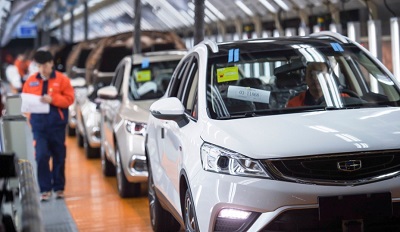
文 | 谢祖墀
2022-2-23
本文是高风咨询CEO谢祖墀博士撰写的文章,此文于2022年2月23日发表在香港《灼见名家》网站。原文英文版于2月8日发表在高风微信公众号。展望未来,中国不仅将引领着跨国公司的商业战略思考和部署,它亦将会主导他们在组织和领导力方面的重塑。
在一个百年未有之大变局的时代中,一些前所未有的干扰及问题, 如新冠肺炎疫情、气候变化、地缘政治、数字经济和数字鸿沟,以及全球化与去全球化之间的拉锯战等,正在严重地影响着全世界。
特别是世界经济格局也发生了重大的变化。大约40年前,相对于与当时毫无疑问是世界遥遥领先的经济体美国相比,中国的GDP可以说是微不足道。今天,中国的GDP已经占有全球总数的大约15%,紧随美国之后。全球经济力量结构上的重大变化为中国发展带来了新的契机,也带来前所未有的未知挑战。
中国汽车行业正快速更迭
汽车行业是一个展示未来可能发展的好例子。中国的汽车行业正在快速更迭的过程中变得智能、互联互通、电动化以及自动化。这意味着软件和电子零部件正成为汽车愈来愈重要的组成部分,而他们的产品生命周期亦正在变得愈来愈短。与此同时,新产品和技术所须的资本投入亦正在大幅增加。
中国是世界上最大的汽车市场,同时也是一个庞大的数字经济体。中国政府鼓励推动新能源汽车的发展,使中国成为了全球汽车行业创新与变革的中心。2021年中国汽车总销售量同比增长3.8%,达到了2628万台。其中新能源汽车的销售量达到了450万台,几乎达到了总销售量的六分之一,并占全球新能源汽车销售总量的50%以上。
随着中国的数字经济的持续发展,智能和互联互通的的交通工具变得愈来愈普遍。而中国的自动驾驶技术方面亦随着世界领先的软件和硬件企业的参与,正在取得可观的进展。这一进展得益于不少中国城市正在建设的数字基础设施,这亦是中国推出智慧城市计划的一部分。
一系列新的新能源汽车玩家已经开始出现,这其中包括国有企业和民营企业。央企如一汽、长安,以及地方国企如上汽、广汽都已进入了新能源汽车领域。其中,广汽集团已经宣布它的电动汽车子公司广汽埃安将会独立运营。民营企业也正在积极参与到新能源汽车市场的竞争中,包括例如吉利、长城、比亚迪、奇瑞等汽车公司。
近10年内创立的电动汽车初创企业,例如小鹏、蔚来、理想等「造车新势力」已经在市场上开辟了新的道路,确定了自己的身份和定位。除此之外,华为、百度、小米这些科技公司也正在参与到这个市场中来。
创新者,而非模仿者
在过去十多年中,中国已经从一个「山寨大国」发展为一个创新型的经济体。透过利用移动互联网作为平台,许多中国科技公司创造了新的数字商业模式来解决了不少社会中的痛点问题。这些公司如阿里巴巴、腾讯、小米、字节跳动、京东、拼多多等,在这段时间都实现了飞速增长,并形成了大型的平台公司。
与此同时,「硬科技」行业的公司如华为、中芯国际、大疆创新、商汤科技、科大讯飞等也以自己的方式为中国的改革创新做出了重大贡献。
这些公司的增长往往遵循着一定的规律。当这些公司的创始人或高管看到其他创业者的成功例子时,他们经常会问「为什么不是我?」「如果别人能成功,为什么我不能?」在这些企业家的领导下,这些公司,尤其是在创业期间,往往能够快速、敏捷的适应市场变化。
他们一般并不介意把他们的想法投入市场做实验,特别是对于消费互联网领域的企业来说经常更是这样。他们俨然都有一种大无畏的精神。
如果我们从近距离观察那些具有代表性的中国民营汽车公司的领导者,我们会发现他们都具有一些类似的特质。这些企业家都是连续创业者,他们不害怕承担风险,在面对多变的环境的时候,他们可以迅速地调整经营策略和敏捷应对市场变化。他们一方面具有竞争的特质,同时亦可以在必要的时候与他人合作。
适时、连续的跳跃战略
企业战略背后的概念在随着时间的推移而发展。30年前,企业高管、咨询公司和学者们喜欢讨论在「多元化」(建立庞大但通常互不相关的业务组合)和「聚焦」(透过公司自己的「核心竞争力」,只在自己的优势领域内经营)之间的比较和取舍。从那时开始,「基于核心竞争力或能力」的战略便成为了商业世界中的主流战略框架,指导着许多大型企业高层们如何做出战略决策,以及支配着资本市场如何衡量公司的价值。
这两个概念都不能完全解释中国企业(和一些美国西岸领先的科技公司)的快速增长,特别是对于那些于2000年代后期,透过使用消费互联网作为平台高速发展起来的一些企业。
在2014年,我提出了一个新的战略框架:即使公司缺乏所有必要的全部能力,他们仍然可以通过「适时、连续的跳跃」,从现有的情况跳跃而获得新的机会。采用这种战略的企业领导层需要经常评估新机会带来的吸引力,对比他们当前的能力。尽管往往企业当前的能力未必能够足以应付新业务中的需要,企业决策者会作出跳或不跳的决定。尽管能力有所不足,不少企业都会从原有的领域跳进新的领域中,然后尽快弥补中间的能力差距。
弥补能力差距可以通过企业的自身建立,亦可通过从与合作伙伴合作中获取,后者即今天许多人所讲的「生态系统」。我称这种战略思考方式为「战略第3条路」,它可以弥补前面提到的两个原有战略框架之间的理论不足之处。因此也可以说,商业生态系统是「第3条路」战略的组织体现。换言之,商业生态系统创建的基本需求,是出于公司在跳跃时希望尽快弥补能力空缺的原因。
通过这种适时、连续的跳跃战略,很多中国的企业,特别是一些互联网企业,通过利用了移动互联网,在有合适时机的时候完成了从一个机会跳到另一个机会的跃进。今天,他们所依赖的科技已经变成人工智能、物联网、5G、区块链和云计算等前沿的科技。放松管制催生新的企业错综关系
中国政府将科技创新作为「十四五」规划的核心。汽车就是有代表性的行业。可以想像,未来中国许多行业将会出现更多颠覆性的变化。
自2022年1月1日起,中国政府取消了所有在中国汽车整车领域对外资的限制。在过去的30多年中,外资汽车生产商必须以合资的形式在中国市场经营,而且外资持股比例不能超过50%。许多评论者在过去一段较长时间中却不断假定在这些中外合资企业中,重要的价值贡献者是外资,而中资大部分只是在占着便宜而已。
但是在这个规定取消之后,外资汽车公司并没有大量取消或调整他们与中方的合资关系,从而建立自己的独资业务,反而是马上出现了许多不同企业与企业之间的新的错综关系。
这些关系包括了多个中国国有企业,民营企业和外国公司的不同排列组合。除了汽车生产商,其他参与者如零部件供应商和软体设计公司也有所参与。这些企业之间的错综关系意味着在新时代竞争需要更多和更新的能力和创造力,而汽车行业的格局将会被进一步颠覆。
作为智慧城市发展计划的一部分,数字和智能的基础设施正在快速和大量兴建。这些建设让更先进设计的新一代汽车以及其他关键零部件如电池等的实现变为更有可能。从更为宏观的角度来看,全球汽车行业正在走向「一个世界,两个系统」(One World, Two Systems),这两个系统的中心分别是中国和美国(或西方世界)。
中国正在塑造跨国企业的组织与领导力
而对着中国的改变与成长,西方跨国公司也不断地在进行反思。最初,他们一般会把他们在其他国家的产品或商业模式复制到中国来,认为这样做便能足够获取中国市场的机会。在某些情况下,这样的做法是可以达到某种程度的目的的。
但在过去20、30年间,中国的政策和社会环境经历了多次的更迭,中国和中国企业已经变得更有创新能力,而在华经营的外国跨国公司通常反而对不断变化的科技创新和商业环境反应较为缓慢。这主要是由于他们自己对中国的观察、理解和内在化的认知能力有所不足所致。
今天,大部分(如果不是全部)在华经营的的跨国公司已经明白并认识到改变的必要性,但他们常常由于多年累积下来的组织惯性不能完全或及时作出适当的改变。但是为了面对环境的改变,他们必须进行调整,能够实现这种改变的领导层变得更加举足轻重。跨国公司要做的是,要了解自己需要改变什么以及如何领导和管理这些改变──不论是在思维方式、战略制定、推动创新,还是在预测消费者或客户偏好等多个方面。
随着中国从「标准追随者」到「标准制定者」身份的转变,不少跨国公司亦已意识到他们的改变需要从更深的层次中思考和着手。中国正从4个方面开始制定新标准。第一是技术协议的设置,主要在5G的部署上体现。第二是创造新颖的商业模型。应用程式TikTok(抖音海外版)就是一个很好的例子,它彻底颠覆了短视频App领域。在2021年,TikTok超越了谷歌成为世界上最多访问的网站。第三方面是中国建立的新的产业赛道,并进行颠覆,例如新能源汽车。第四,中国推出的中央银行数字货币(CBDC)的开创性应用将会对中国以及全球金融产生重大影响。
大多数跨国公司的中国组织都是以前建立的,这其中包括架构、人事、能力、系统和流程,以及企业文化和风格。当时中国的整体情况往往与今天的已经有了很大的改变。每一家跨国公司都需要检验以上这些元素是否仍然适用于今天的新时代。毕竟,中国的振兴不仅仅是技术性质和递增式发展而已,它是凭借着中国悠久而丰富,且具包容性的文明、文化与历史,同时它也是变革性的。
展望未来,中国不仅将引领着跨国公司的商业战略思考和部署,它亦将会主导他们在组织和领导力方面的重塑。
SCMP | Vision for Winning

By Edward Tse
2022-1-28
Originally published by South China Morning Post with title “Apple and Tesla’s Success in China Shows Sino-US Cooperation Can Be a Win-win” on January 28, 2022. All rights reserved.
The Belfer Center at Harvard University’s Kennedy School released a paper in December titled “The Great Tech Rivalry: China vs the US”, analysing the technological status of the two giant economies.
Harvard professor Graham Allison, lead author of the report, and Eric Schmidt, the former Google CEO, also published an op-ed in The Wall Street Journal on the subject. They contend that China has already surpassed the US in areas like artificial intelligence, 5G, quantum information science, semiconductors, biotechnology and green energy.
The study identified China’s “whole-of-society” approach as the differentiator. But how does this accelerate China’s technological development? The US needs a comprehensive understanding of what has driven China’s innovation abilities in general, so policymakers can develop a more strategic response.
China’s five-year plans lay out the country’s priorities and responses to both domestic and external changes. While US policymakers have long scoffed at China’s top-down planning system, these directives have generally delivered good outcomes, particularly in the past couple of decades.
Today Schmidt insists China has surpassed the US in AI and this is, coincidentally, an area China started focusing on over a decade ago.
The recent US sanctions on a range of technology, such as high-end semiconductor chips, have triggered faster domestic development in China. Many in the world expect China to catch up with the West, Taiwan and Korea in high-end chips in the not-so-distant future.
Along the way, the Chinese government has released a report on the digital economy, covering the development of digital infrastructure (especially for big data) and key technologies, and the digital transformation of traditional industries and public services, over the next five years.
Government industrial policy is nothing new. President Franklin Roosevelt revitalised the US economy after the Great Depression with the policy document known as the New Deal. Japan, South Korea, Taiwan and Singapore grew rapidly during the 1970s and 1980s by defining their respective industrial policies and priorities.
While China pursues top-down planning policies, it also nurtures dynamic private-sector enterprises along with state-owned enterprises, creating a unique, dual economic structure.
SOEs provide public goods, often going beyond the narrow definition of economic returns to fulfil their social responsibilities. These public goods and infrastructure in turn support all types of enterprises, foreign and domestic, creating a better ecosystem for businesses in China.
In addition, local governments function as a link between the central government and private enterprises, channelling resources according to Beijing’s priorities while supporting businesses through funding, the incubation of start-ups and public-private partnerships. This layered approach ensures the nation’s resources are used to meet the most critical objectives, providing cohesion and resilience.
Why and how did this come about? Since the end of the First Opium War in 1842, Chinese elites have been in deep reflection about how to rebuild China. They knew that science and technology, among other tools, would be key for revitalising the nation.
China is an ancient civilisation that has developed, fine-tuned and learned from a wide range of philosophies over time. This inclusive nature, coupled with absorption of Western political ideas such as capitalism and Marxism, serves as the backbone to China’s modern thinking.
At the centennial anniversary of the Communist Party of China, President Xi Jinping repeatedly emphasised the theme “To learn from history and build a better future”. As China searches for its modernity with Chinese characteristics, this mindset is manifesting itself in everything it does.
In the face of technology sanctions, China must move to neutralise such threats. Given its clearly stated and justifiable objectives and goals, people and businesses have been willing to go along with the government’s plans and policies.
Western multinational corporations operating in China understand this approach much better than politicians. Doug Guthrie, formerly of Apple University, recently underscored why being in China was so critical for the success of Apple.
As the hub of Apple’s global supply chain, China’s clusters of suppliers, diligent workers and support from local governments created a structure offering unparalleled reliability, optimised cost, quality and timeliness.
Apple and Chinese partners co-created the intellectual property needed for Apple products, leading to a win-win situation. Apple has since become the world’s first business to be valued at over US$3 trillion.
The same can be said for Tesla and Nvidia. When Tesla was having trouble in the US back in 2019, the Chinese government cleared its new gigafactory in Shanghai with a US$1.4 billion loan from several Chinese state-owned banks. That turned Tesla’s fate around.
Today Tesla is the top-selling electric car brand in China and half of Tesla’s global deliveries are from Tesla’s Shanghai plant.
Similarly, US semiconductor company Nvidia benefited immensely from the massive demand for automotive chips in China, the world’s largest automotive market.
Ali Kani, Nvidia’s vice-president, stressed the importance of China’s dynamic electric vehicles sector to the company’s efforts to expand its global automotive business, which has projected revenues of US$8 billion over the next six years.
Many US tech companies have benefited from being part of the Chinese economy and understand the effectiveness of the Chinese approach to governance. These companies share one thing in common: they see working with China as a win-win for both sides.
The same applies at a national level. While the Harvard Belfer study calls the US-China relationship in technology a “rivalry”, perhaps a more constructive way to think about it would be to compete where necessary but collaborate where appropriate.
After all, technology can improve human lives; it should be the intrinsic responsibility of the big powers to advance that cause for the benefit of humanity.
灼见名家 | 谢祖墀:推动中国科技进步的诱因

文 | 谢祖墀
2021-1-26
本文是高风咨询CEO谢祖墀博士撰写的文章,此文于2022年1月26日发表在香港《灼见名家》网站。谢博士解释了中国科技创新发展如此迅速的根本原因。
美国哈佛大学的贝尔弗科学与国际事务研究中心(贝尔弗中心,Belfer center)于2021年12月发布了报告《科技大竞争:中国对美国》(The Great Tech Rivalry: China vs USA),对中美两大经济体的科技技术发展状况做出了详细的分析。
报告作者,来自于哈佛甘迺迪学院的格雷厄姆‧艾利森(Graham Allison),亦与谷歌前总裁埃里克‧施密特(Eric Schmidt)同时在《华尔街日报》上发表了关于这一主题的专栏文章,他们认为中国在人工智能、5G、量子资讯技术、半导体、生物技术和绿色能源等领域已经超过美国。
贝尔弗中心的研究报告用了一句话来概括造成这种差异的原因——「举国体制」(原文用了”whole-of-society”的叫法,但更普遍的叫法应是”whole-of-nation”)。但它是如何推动中国科技的加速发展的?美国政治决策层需要更加全面的了解和研究推动中国技术和创新能力的原因,以便其决策者能够制定更具战略性的应对措施。
中美的「举国体制」差异
中国的「五年规划」的功能是制定国家战略发展的优先事项,以及应对中国未来国内和外部环境变化的战略措施。尽管某些人一直在嘲笑中国自上而下的规划体系,但中国的规划及决策,尽管不是没有瑕疵,但总体上取得了不错的成绩,特别是中国在过去10几年的快速发展显得尤为突出。
最近,美国对中国的高科技产业采取了一系列的制裁措施,例如对高端半导体芯片的制裁,但这种制裁反而促进了中国自身的科技发展和科技独立。芯片业内,世界上许多人都预计在不久的将来,中国的芯片产业在高端领域能赶上台湾、韩国、日本以及欧美国家。
与此同时,中国政府近期发布了数字经济相关发展政策报告,其涵盖了中国未来5年数字基础设施的发展(特别是大数据的发展)、关键传统产业和关键技术的数字转型、以及公共服务的数字化。
政府通过相关政策扶持产业这一举动并不新鲜。富兰克林・罗斯福总统在经济大萧条后,亦是通过「罗斯福新政」振兴了美国经济。日本、韩国、台湾和新加坡亦是在20世纪70年代和80年代,通过确定各自的工业政策和优先战略定位,使其经济快速增长。其他许多国家都经历过不同程度的政府扶持。
但中国在推行自上而下的规划政策的同时,也在让充满活力的民营企业兴起,他们加上原有的国有企业,形成了中国独特的二元经济结构。
国有企业提供如基础设施、公共卫生等公共物品,他们不仅仅以狭义的经济效益作为首要考虑因素,而是更多的来履行其对人民的部分社会责任。这些公共物品亦为中国的所有企业的运营提供了支持,包括外资企业和本土企业,从而进一步为在中国经营的企业创造了一个更有效率的生态系统。
此外,地方政府作为中央政府和民间企业之间的纽带,不断引导资源流向政府规划的优先产业,同时通过融资、孵化初创企业和公私合营等方式,支援其辖区内的企业。这种分层方法确保了国家资源支援实现最为关键的目标,同时提供凝聚力和韧性。
这为什么会发生,又是如何发生的呢?
中国由古至今的战略思考
自1842年第一次鸦片战争结束以来,中国的知识份子一直在深思该如何振兴中国。他们深刻意识到,相较于其他方法,科技将是振兴中国的关键。
随着时间的演变,作为历史悠久的文明古国,中国发展了诸多的思想和哲学,而历代的中国人亦会从中寻找、发展、调整、吸收和学习,并取其精华,去其糟粕。正是这种海纳百川的包容性,加上对西方政治思想如资本主义和马克思主义的吸收,共同构建了成为了中国现代思想的基石。
在中国共产党成立一百周年演讲中,习近平主席多次强调「以史为鉴,展望未来」的意志。在中国寻求具有中国特色的现代性发展道路的过程中,这种包容和瞻前顾后的心态以及方法亦可从现代中国发展过程中所做的一切体现出来。
面对科技制裁等威胁,中国将坚定不移的采取行动去中和这一威胁。在中国政府提出明确和合理目标的大前提下,人民和企业愿意且致力于遵守中国政府制定的计画和政策,并为之而付出努力。
在中国运营的西方跨国公司的企业家们比政客们更了解中国。前苹果大学的顾道格博士(Doug Guthrie)强调了为什么中国对苹果的成功至关重要。作为苹果公司的全球供应链中心,中国的供应商集群、勤劳的工人以及来自当地政府的支援为企业运营创造了一个无与伦比地可靠的,以及成本、品质和时效性都最优化的结构。
苹果公司和其中国合作伙伴共同创造了苹果产品所需的智慧财产权,实现了双赢,苹果亦成为了世界上第一家市值超过3万亿美元的企业。
同样的故事亦发生于特斯拉和英伟达。2019年,当特斯拉在美国经营遇到困难时,中国政府帮助其从几家中国国有银行获得14亿美元贷款,容许了其在上海的超级工厂的建造,并给予土地、基建的支持。这一举动扭转了特斯拉的命运。如今,特斯拉作为中国最畅销的电动乘用车品牌,其在全球的交付量有一半来自于上海的工厂。中国对于特斯拉至关重要。
同样的,中国作为全球最大的汽车市场,美国半导体公司英伟达亦从中国对汽车芯片的巨大需求中获益匪浅。英伟达副总裁阿里‧卡尼(Ali Kani)强调了中国充满活力的电动汽车行业对公司拓展全球汽车业务的重要性,并预计公司未来6年将实现80亿美元的汽车业务收入。
与此同时,许多美国科技公司亦在中国经济中获益,并能够理解中国政府治理模式的有效性。而这些公司都有一个共同点,他们将公司的中国战略视为一种双赢战略,在其战略规划中,他们自己和中国都将是赢家。
这样的战略思考同样适用于国家层面。尽管贝尔弗中心的研究将中美之间的科技关系称为”Rivalry”,意即「有对抗性的竞争」,但更具建设性地思考中美科技发展关系,更应是「在必要时竞争,在适当时合作」。科技,可以帮助改善人类的生活,因此为了人类的共同利益,推进这一发展进程应该是世界上所有大国应该承担的责任。
灼见名家 | 谢祖墀:中国创新新时代引领新的转变

文 | 谢祖墀
2021-1-19
本文是高风咨询CEO谢祖墀博士撰写的文章,此文于2022年1月19日发表在香港《灼见名家》网站。原文英文版于2022年1月16日刊登于《中国日报》网站,此为中译本。
现今不少人都已经认识到中国的创新能力,同时,中国已经成为世界上最大的数位化经济体。自2000年代末以来,许多公司利用了移动互联网在中国日益普及的优势,发展出不少创新的商业模式。随着5G、人工智慧、区块链和云计算等新型颠覆性技术的出现,中国已经进入了一个新的科技创新阶段。
加上政府作为「十四五」规划的一部分宣布的最新政策,科技自给自足已经成为国家的发展重点之一。为此,创新的重点正在从消费互联网驱动转向「硬技术」领域,如:高端半导体晶元、精密和智慧制造、机器人、生命科学和其他领域。在科技金融领域,中央银行数字货币(CBDC)也已成为发展的优先事项。
从技术追随者变为标准制定者
在不久前,中国还经常被认为是一个喜欢抄袭别人的国家。中国公司生产的产品经常被嘲笑为「山寨货」,被认为品质低劣,经常是假冒或模仿的,缺乏创意。很少有人会预料到中国人会如此迅速地转变,凭借自己的力量成为创新者。亦让谷歌前首席执行官艾力‧施密特(Eric Schmidt)感叹地说,「(中国)的技术比西方先进了几代了。」
这一个新时代标志着不仅体现中国在采用了什么技术或在哪些领域进行了创新,更重要的是,中国正在从技术标准追随者逐渐转变为全球标准制定者。
中国人正在以四种方式制定着新的标准:第一个是技术协议设置,目前主要表现为5G的推出;第二是创造创新的商业模式;第三是通过创造全新的产业来对整体行业进行颠覆;还有是中央银行数字货币(CBDC)的开创性应用。
在技术协定制定方面,华为等中国公司一直处于世界领先地位,特别是在5G技术标准制定方面。这项技术对许多加速增长和发展的行业产生了深远的影响。例如,5G正在实现更高级的自动驾驶、远程诊断和操作以及数位孪生。2020年7月,在5G标准竞赛中,华为发明的3GPP 5G技术被国际电信联盟正式宣布为唯一的国际移动通信技术标准。到2023年底,将最终确定30项关键行业标准。
人工智慧驱动 优化用家内容
中国的创新者还开发了不少新的商业模式,为其他企业树立了「标准」做法。例如,主要视频的社交媒体应用如TikTok、淘宝和京东等电子商务应用程式、食品配送应用程式美团等。于2021年,TikTok超越了谷歌成为全球访问次数最多的网站。其巨大的使用者黏性表明该应用程式深受使用者喜爱。
TikTok及其在中国的孪生兄弟抖音,使用人工智慧驱动的演算法,来评估每个使用者的需求,然后在使用者感兴趣的领域推出「订制」内容,从而提高其商品推广的转化率。TikTok和抖音获得巨大成功的关键因素,是它们背后强大的AI演算法,这些演算法可以优化内容的创建、策划和推荐。TikTok的成功令Facebook亦曾经尝试抄袭,但最后并不成功。
TikTok、抖音,以及哔哩哔哩、快手和小红书等其他社交商务应用程式,已经成为消费品的主要销售管道。与此同时,关键意见领袖(KOL)已经彻底改变了现代销售和行销。中国和外国公司都抓住了这一趋势,兰蔻(Lancôme)和雅诗兰黛(Estee Lauder)等化妆品品牌都在中国采用KOL和社交商务此一行销模式。
建设智慧城市 催生协同效应
中国也在重新定义整个行业的标准,汽车和出行行业就是一个很好的例子。互联数字经济开拓方式的发展让汽车制造商公司重新思考其产品,以及孕育了一批全新的出行行业的企业。与此同时,电动汽车技术正在腾飞,从好几年前开始,中国政府就出台了鼓励发展新能源汽车的政策。
而且,中国各地的城市都在为智慧城市建设基础设施,并将智慧成分嵌入其中。这反过来产生了协同效应,导致了新型智慧和互联新能源汽车的出现,而自动驾驶技术亦不断有所发展。随着软体的作用变得至关重要,不仅在车的设计和生产,整个行业的价值链都受到了根本上的颠覆。
外国汽车制造商也已经认识到中国正在发生的创新。大众汽车首席执行官赫伯特‧迪斯(Herbert Diess)宣称「中国是大众汽车在全球最重要的市场」;对福特汽车而言,中国创新计划和智慧技术计划是其「中国2.0」战略的核心部分。
中国是第一个开发和部署中央银行数字货币(CBDC)的主要经济体,CBDC是一个国家官方货币的电子记录。CBDC将会简化跨境支付,以及货币和财政政策的实施,并通过将无银行帐户客户纳入金融体系来促进经济中的金融包容性。虽然一些国家正在开发自己的数字货币,但中国在数位人民币方面无疑处于领先地位。
2020年4月,数位人民币试点专案在四个城市启动。数字货币的首次亮相是中国央行中国人民银行(PBOC)在2014年宣布数字货币、电子支付系统研究开始的6年历程的高潮。如今,数位人民币试点的范围和规模都在快速增长。
数字人民币的使用可以给中国带来巨大的经济和政治利益,这也有助于推动人民币的国际化。这还可能颠覆全球金融体系,因为数字人民币可能成为重新定义全球金融规则的工具,并可能会颠覆该行业现有的参与者。
随着中国逐渐发展成为一个制定更多标准的国家,其创造和定义「创新新赛道」的能力将会变得更加强大。这意味着一个新时代的到来,不仅在中国,逐渐更会影响着世界上其他地区。
China Daily | New Era of Chinese Innovation Marks Its Transition

A recent article authored by Gao Feng Advisory CEO Dr. Edward Tse was published by China Daily on January 16.
Most people now recognize China’s ability to innovate and its status as a top digital economy in the world. Since the late 2000s, many companies have taken advantage of the growing penetration of wireless internet in China to develop innovative business models. With the emergence of newer disruptive technologies such as 5G, AI, blockchain and cloud computing, the nation has entered a new phase of technological innovation.
Coupled with the government’s latest policies announced as part of the 14th Five Year Plan, technological self-sufficiency has become a national imperative for the Chinese. To that end, the focus of innovation is now being shifted from consumer internet-driven to “hard tech” areas such as high-end semiconductor chips, precision and intelligent manufacturing, robotics, life sciences and others. In fintech, the central bank digital currency, or CBDC, has also become a priority.
Not too long ago, products made by Chinese companies were ridiculed as “shanzhai”, portrayed to be of low quality and lacking originality. Few expected the Chinese to turn around so quickly and become innovators in their own right. This has prompted Eric Schmidt, former Google CEO, to say, “(China’s) technology is generations ahead of what is possible in the West.”
This new era is epitomized not only by what technologies are being adopted or in which sectors innovations are happening, but also how China is shifting from being a technology standards follower to one setting global standards.
There are four ways in which the Chinese are beginning to set new standards. The first is in technology protocol setting, manifested currently in 5G rollout. The second is creating new innovative business models previously unseen. The third is transformation of industries by creating completely new sectors. And finally, the pioneering applications of the CBDC.
In technology protocol setting, Chinese companies such as Huawei have been leading the world, particularly in setting the standards for 5G. This technology has had a profound impact on many industries accelerating growth and development. For instance, 5G is enabling more advanced autonomous driving, remote diagnostics and operations, and digital twins.
In July 2020, during the 5G standard competition, the 3GPP 5G technology that Huawei invented was officially declared as the only international mobile communication technology standard by the International Telecommunication Union. By the end of 2023, 30 key industry standards are set to be finalized.
Chinese innovators have also developed new business models that set “standard” practices for others to follow. Examples include Tik Tok, a video-focused social media app; Taobao and JD.com, two major e-commerce players; and Meituan a food delivery app.
In 2021, Tik Tok overtook Google as the world’s most visited website. Its vast following suggests a strong sense of affinity that the app is able to generate with its users. Using AI-driven algorithms, Tik Tok and its domestic China twin Douyin assess users’ needs and push “tailor-made” content in areas that users are interested in, thus increasing the conversion rate for its advertising efforts. The powerful AI algorithms that optimize content creation, curation and recommendation are key factors behind Tik Tok and Douyin’s great success.
Tik Tok and Douyin, along with other social commerce apps such as Bilibili, Kuaishou and Little Red Book, have become major sales channels for consumer products. At the same time, Key Opinion Leaders, or KOLs, have revolutionized modern-day sales and marketing. Chinese as well as foreign companies have caught on to the trend with cosmetics brands such as Lancome and Estee Lauder leveraging KOLs and using social commerce in China.
China is also redefining standards for entire industries. A good example is the auto and mobility sector. The pioneering development of the connected digital economy has resulted in automotive companies rethinking their products, and entirely new breeds of mobility players have emerged. Concurrently, electric vehicle technology has been taking off and from early on, the Chinese government issued policies to encourage the development of new energy vehicles.
Along the way, cities across China were embedding intelligence in the infrastructure they were building for smart cities. This in turn generated synergistic effects which led to emergence of the new breed of smart and connected new energy vehicles that are becoming increasingly autonomous. Not only design and manufacturing, but the entire industry value chain has been disrupted as the role of software has become critical.
Foreign automakers have also recognized the innovation happening in China. For Ford, the China Innovation Plan and Smart Technology Plan are a core part of its “China 2.0 Strategy.”
China is the first major economy to develop and deploy a CBDC, an electronic record of a country’s official currency. CBDC will simplify cross-border payments and implementation of monetary and fiscal policy, and promote financial inclusion in the economy by bringing the unbanked into the financial system. While several countries are developing their own digital currencies, China is well positioned to take the lead with the digital yuan.
In April 2020, digital yuan pilot programs were launched in four cities. The digital currency’s debut was the culmination of a six-year journey that began when China’s central bank, the People’s Bank of China, announced research on a “Digital Currency/Electronic Payment” system in 2014. Today, digital yuan pilots are growing rapidly in scope and size.
The use of digital yuan could bring significant economic and political benefits to China, which could also help drive internationalization of the Chinese currency over time.
As China joins others in setting standards, its ability to create and define “new lanes of innovation” will become even more profound. This signifies the coming of a new era not only in China but also increasingly for the rest of the world.
灼见名家 | 谢祖墀:中国对于全球企业的重要性
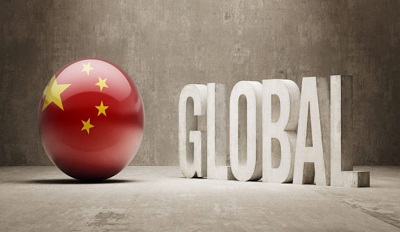
文 | 谢祖墀
2021-12-29
中国在世界经济中的重要性
中国在世界经济中的重要性毋庸置疑。据彭博社报道,未来5年,中国将贡献世界GDP增长总量的1/5以上。2020年,流入中国的外国直接投资(FDI)增长了4%,而流入美国的外国直接投资下降了49%。亦是在2020年,中国首次超过美国,成为了全球外国投资的首选。
同时,最新来自在中国的跨国公司的数据亦表明了类似的趋势。2021年9月,上海美国商会公布的一项调查发现,在2020年,338家被调查企业中有77.1%的企业在华实现盈利,59.5%的企业增加了在华投资。这与中国其他外国商会的调查结果大致一致。
外国公司在中国的经营业绩有喜亦有忧。一些公司在中国业绩表现突出,例如2021年上半年,据德国《经理》杂志报道,大众汽车在华销量占全球销量的49%以上,宝马则超过34%。通用汽车在中国的汽车销量也高于其在美国的销量。
而对于苹果公司来说,其在中国市场的收入占其全球收入的20% 左右,2020年苹果的供应商中,中国供应商数量在其全球供应商中的占比增加到了57%。星巴克和百胜在中国的表现亦不凡。耐克和阿迪达斯,尽管面对竞争力愈来愈强和市场份额不断增加的中国本土运动服装公司,他们仍将中国市场作为其重中之重。
另一方面,在家电领域,没有一家外资企业能够在中国占据主导地位。美的、海尔和格力等本土企业等将继续主导市场,小米亦成为智能家电的主要参与者。美国玩具制造商美泰因业绩不佳而关闭其中国旗舰店。标致、菲亚特和雷诺等汽车制造商在中国却没有取得成功。
出于不同的原因,在过去10年之间,一连串的外国零售品牌或选择离开,或选择将其大部分股份出售给中国的企业家或公司(如家得宝、乐购、马莎百货、家乐福等)。然而,也有一些如山姆会员店和开市客等零售公司在中国继续运营。
在科技领域,谷歌于2010年关闭了其在中国的搜索业务,但其广告业务仍在继续,他们并且在中国成立了人工智能研究中心谷歌大脑(GoogleBrain)。微软和亚马逊云服务在中国的业务发展得不错。
在过去的几十年里,根据当时不同的地缘政治条件,中国正稳步逐步地开放不同领域,允许外国企业与资本的参与。
例如,中国已经开始开放以前相对受限的金融服务业。BlackRock成为首个获批开展独资公募基金业务资产管理公司,PayPal成为中国第一个100%外资持股的第三方支付平台。摩根大通和高盛已于2021年11月获得监管批准,可以完全控制其在中国的投资银行,并正在迅速发展其咨询和资产管理业务。
同时,中国放松了外资汽车建厂限制,取消了外国汽车制造商必须和本地企业建立50:50的合资公司的要求。而特斯拉则迅速利用这一机会,得到了上海政府在土地方面的支持以及来自中国的银行15亿的贷款支持。而宝马将在2022年接管其大部分合资企业,并将持股比例增至75%。大众汽车也同样将其与江淮汽车的合资企业的股份增至75%。
随着中国允许外国公司获得更多市场准入,其自身的市场规模也在不断扩大。而不断增长的国内市场,加上政府的政策支持以及本土企业的创新,共同推动各个行业在中国的市场成为了世界上最具竞争力市场。
例如,在新能源汽车领域,尽管特斯拉作为外资仍然占据主导地位,但五菱、比亚迪、蔚来、小鹏、理想等本土企业在这一领域也极为活跃。而来自相关产业链的其它参与者,如华为、小米、OPPO等也加入了竞争。在电池领域,本土企业宁德时代和比亚迪目前处于领先地位,但韩国LG新能源和一些中国企业都在互相争夺该领域的市场份额。
本土企业自身能力增强
而对于大部分的跨国公司和为他们服务的某些说客、智库等而言,他们无法充分理解快速变化的中国环境。中国的变化是多方面的,其多样性不仅体现在中国的快速发展,亦体现在了快速变化且往往以跨越式方式出现的客户需求模式、加上科技和创新的盛行、由本土竞争者的崛起,和不断创新且巧妙的的企业之间的合作关系带来的更加激烈的竞争环境,以及不断变化的的监管、政策和地缘政治条件。而最重要的是,中国与西方国家在文化、文明,以及历史背景上的差异。
如今,外资跨国公司在高端微芯片及零部件、高端汽车、精密机械、专利药品和奢侈品牌等特定行业仍然享有相对优势。然而,本土企业已经开始在这些领域不断增强自身能力,同时,这些本土企业在电子商务、新能源汽车、移动出行服务、在线支付、快消品、家电、「新零售」、智慧物流等方面已经拥有雄厚的实力。
通过「适时、连续型跳跃」的方式(我称之为「战略的第三条路」),许多本土企业,尤其是消费互联网领域的企业,通过利用无线互联网等技术,从一个行业跳跃到另一个行业,而现在他们也愈来愈多地利用人工智能、互联网物联网、5G、区块链和云计算,在新机会出现时,帮助他们完成跳跃。尽管他们可能不完全具备所有在新的领域探索的能力,但他们会尝试在跳跃过程中不断增强自己的能力。其中一些这样子做的公司已经成为该行业的巨头。
今天,跨国公司逐渐发现并意识到中国极富创新能力,并且有足够的实力在世界的舞台上竞争。领先的跨国公司正在向中国学习,并针对中国市场进行创新,有些甚至将在中国创新的成果带到世界其他地区。
例如,随着如今的汽车行业对于自动驾驶技术要求愈来愈高,且变得愈发智能化和互联互通,汽车制造商需要持续不断地创新。而中国在近几年智能基础设施的建设,为汽车制造商们在中国测试和试验他们最新的产品和服务时,提供了领先且独特的环境和便利。
为了保持竞争力,现有的诸多大型外国汽车制造商通常采用中国特有的产品和服务模式进行创新。大众汽车集团首席执行官赫伯特‧迪斯曾提及:在试驾了中国制造的电动汽车后,他对汽车的质量印象深刻。而相较于10年前中国制造的汽车仍被视为低质量的山寨车,这种进步是无法想像的。
在消费领域,本土企业也在快速地通过社交电商领域进行创新,挑战曾经的快消品巨头宝洁、联合利华和欧莱雅。关键意见领袖(KOL)的出现彻底改变了用户的购物体验,他们通过包括抖音、哔哩哔哩和快手在内的流行应用程序与消费者进行社交互动,促进消费。
外资学习在中国经验发展业务
愈来愈多的跨国公司发现,他们在中国的创新模式在世界其他地区也具有潜力。许多在西方的零售商现正积极研究淘宝和京东推出的,以电子商务驱动的全渠道购物模式。
根据德国杂志《经理》的报道,领先的德国工业企业早已认为中国在数字化方面已经处于世界领先地位。例如,移动支付已在中国非常盛行。2018年,微信支付每天处理12亿笔交易,而Apple Pay仅每月处理10亿笔交易。2019年中国移动应用总支出为54万亿美元,约为美国总支出的551倍。
曾经有美国一家大型工业公司的中国区负责人告诉我, 刚开始时他以为他来中国是来教导中国人的,但过了一段时间,他才意识到自己其实是来中国学习的。另外一位美国大型企业的客户亦提及,他们的董事会指示在中国的团队探索如何利用在中国学到的知识来帮助世界其他地区的业务发展。
如此对中国的认知,为美国大型工业集团霍尼韦尔在中国的成功起到了关键作用。霍尼韦尔在中国的收入从2004 年的3.6 亿美元增长到2020 年的超过60 亿美元,占公司全球收入的1/6。霍尼韦尔的中国战略强调了在利用其全球能力的同时,实现本土化的重要性。
霍尼韦尔将为其业务组合中适合的业务,在中国以适合中国的方式进行创新,实现真正的本土化,而不是简单地沿用西方的方法或做事的方式。此外,该公司设想了一个「从中国走向世界」战略,让其在中国的创新亦能在世界其他地方得到应用。
霍尼韦尔中国战略的制定者、全球高增长地区总裁沉达理(Shane Tedjarati)作为中国业务负责人的时候,他直接向首席执行官高德威( Dave Cote ) 汇报,这种形式简化了内部汇报流程,对中国战略的制定和执行至关重要。
对于许多外国跨国公司来说,中国不仅仅是其供应链的主要市场或枢纽。它正日益成为知识和创新灵感的源泉。一些公司,例如梅赛德斯─奔驰,已将中国称为「第二故乡」,强调其重要性。对许多公司来说,它们在中国的业务对世界其他地区的业务,尤其是其他新兴市场的业务都有影响。领先的外国跨国公司现在意识到,他们需要将最优秀、最聪明的员工派往中国,让他们接触最新的想法,向当地创新者尤其是数字生态系统学习,开阔视野,并将新获得的知识带回家。
长期以来,某些观察者、说客和某些媒体声称,外国跨国公司在中国没有得到公平待遇,因此无法在中国取得成功。他们经常提出的问题包括中国盗取知识产权、缺乏市场准入、市场不公平和缺乏透明度等。尽管这些指控是否全部或局部正确尚有争议,也许其中一部分在某一时刻有可能发生过,但从整体来说,今天这些指控已经不再是决定性因素。
霍尼韦尔的案例已经说明了将自己融入中国社会和文化并开发本地化方法的重要性。同时,公司也需要尽量利用其在全球的能力并始终拥有国际化的视野。许多外资公司都尝试过这样做,但结果却参差不齐。这是为什么呢?
实际上,中国不只是一个「中国」而已。中国有三个商业活动圈:第一个是外国公司和组织(如外国商会)的圈子;第二个是中国政府和国有企业的圈子;第三个则是私营企业的圈子,尤其是与当地正在快速发展并且充满活力的中国企业家们合作。
跨国公司想要充分了解中国的背景,就需要将自己完全、同时融入在这三个商业圈之中。然而,外国跨国公司的高管往往只会参与外国的圈子,他们与其他商业圈中的参与者的联系往往相当有限,而且往往是比较浮于表面的。
这样一来,这些企业便无法深入了解中国的情况,也无法更加深入的了解中国不断变化的环境,并在新的拐点事件出现之前预测它们的发生。这个评价不仅适用于外籍高管,而且同样适用于不少在外资跨国企业工作的华裔经理们。
因此,拥有一支能够全面渗透中国三大商业圈里的,并且有能力的本土团队非常重要,团队需要愿意并且经常谦虚地学习并接受中国文化、历史和社会,并且可以用中文流利的沟通(不是简单的「打个招呼」而已)。同时,他们亦需要具备能够让中国和全球高管都能理解和欣赏的沟通方式,去观察、理解以及综合地看待和讲述中国。
在中国长期经营的外资跨国公司现在开始意识到,中国的增长和韧性在很大程度上是由其内在动力和中国独特且有效的治理方式推动的,还通过国际贸易与世界其他国家及地区拓宽联系,以及拥有构建「人类命运共同体」的理念。
愈来愈多的全球领先的企业们正在经历和理解中国已经成为一个因不断处于创新前沿,而产生思想和知识的泉源。同时,中国的崛起已是不可逆转的事实。而地缘政治、全球问题和科技带来的新挑战正在使整体环境变得愈加复杂。在此背景下,企业正在调整其战略,而他们的全球战略将会更多是以中国为核心。
亚布力观点 | 谢祖墀:2022年的展望
金融30人 | 科技如何加速粤港澳大湾区的互联互通

文 | 谢祖墀
本文是高风咨询CEO谢祖墀博士出席“第五届中国国际金融30人论坛暨深港金融合作与发展论坛”上的主旨发言整理。此文于2021年11月18日发表在香港《灼见名家》网站。
我的工作是做企业战略咨询的,我在这个行业已经做了超过30年的时间,一直专注在中国地区,包括在香港跟很多企业合作。在这个过程里面看到有很大的改变,有很多的原因,但是科技的发展应该是驱动了很多企业的发展,包括了地区发展很大的驱动力,所以今天我用大概10分钟的时间,跟各位分享一下我们在这方面的一些观察。
现在已经进入一个科技赋能的时代,这个时代跟十几年前互联网为主的科技发展阶段在本质上有很大的不一样。当然移动互联网创造创造了很多独角兽,和对中国很有影响的企业。但是这个游戏差不多快要结束了,新的游戏正在开始,这个新的游戏主要是由几个大的科技创新组成,特别是AI、5G、区块链,我们在和企业合作的过程中发现,这些科技能带来很多本质不一样的创新,对大湾区,特别是深圳、香港来说有什么含义呢?我们认为有几方面值得关注。
其实大湾区这个区域比较特别,这里包括三个不同的管辖区,这三个管辖区里面有着物理的边界,这样对大湾区之间的互联互通产生了很多障碍,以及有很大程度上影响了过去整个大湾区的发展,在整体的融合方面形成了不少的障碍。这些障碍在其它很多的湾区,包括旧金山湾区、东京湾区是不存在的,所以这个问题究竟怎么解决,我认为科技这在里面会扮演重要角色。
在我们跟客户合作的过程中,我们发现在不同的领域都已经因为新科技的发展形成了一些新的发展趋势。尤其体现在几个比较活跃的领域例如自动驾驶、智能制造、大健康、金融科技。因为科技的发展,每一个领域都正在经历一轮转折,在良好发展的过程中也存在一些挑战和问题。
举例来说,在自动驾驶出租车方面,大湾区内的广州、深圳的发展在全国以及全球都是走在前沿的,这是一个很好的基础。我个人认为对于整个大湾区的融合,包括对香港来讲,商用车比乘用车的发展机会更多。因为在物流方面,无论是货物运输,还是建立智能的物流基地,大湾区现在在科技方面是存在条件的。
在智能制造方面,深圳、东莞、佛山、广州都做得不错,这方面肯定比香港做得好一点。现在一个新的发展机会,就是透过新的科技,透过工业互联网的发展,整个智能制造的做法已经会形成一些根本的改变,跟以前的传统制造很不一样的,主要是在智能方面,在分布式的制造方面,现在有可能做得到。这是什么含义呢?香港特区政府一直在讲,我们要再工业化,但是究竟是什么再工业化,我想香港很多人都搞不清楚,因为在香港很多人的概念里面,可能他在想工业化就是以前香港的工业,后来这些工业转移到内地,香港的工业就空心化了,很多人以为再工业化就是把以前的那些工业制造在香港再重新建立,其实不是这样的。在新的科技的引导下,制造环节将会有新的业态出现,它会有更清楚的分工,在不同的地方可能有不同的分工,香港跟深圳,以及大湾区其城市究竟怎么分工,这是值得大家研究的问题,我们也认为这是一个很有潜力的发展趋势。
大健康这个领域大家都很清楚,现在经常在讨论这个问题,在以前大湾区相互融合的问题,香港人愿不愿意到大湾区生活、工作,其实健康问题是很困扰香港人的。随着新的科技,特别是5G、AI的发展,还有微型机器人科技的发展,现在以远程互联网为基础的医疗方法已经得到了很快速的发展,我们可以预测到在很快的未来,远程的诊断、远程医疗都有可能,甚至于应该说很快就会出现,对于整个大湾区的人员流动将会是很大的帮助。
金融科技方面,大家对区块链、数字人民币在政府大湾区的使用,包括香港跨境使用,大家对这个问题非常感兴趣,而且他们愿意继续去研究。
刚才就是我讲的几个简单的行业,其实还有一些行业,但是今天因为时间关系,不可能每个行业都讲。我们认为智慧城市的概念不单只是一个智慧城市,可能最后会变成一个智慧的区域。智慧的区域应该包括香港、澳门,不单只是广东省的这几个城市,这个去年互联互通,需要科技的发展。在国内的城市,在这方面发展的比香港快很多,走得更前沿一点,这方面我感觉澳门、香港都需要跟国内的这几个城市,特别是跟深圳更多的合作。
数据安全法和个人信息保护法这两个法规的问题,是大家比较关心的,同时也会影响到互联互通的问题。因为互联互通需要做很多的数据交流,如何在新的法规框架下解决和处理,这是很值得大家研究的,希望能在大湾区做出试点的项目。
How Technology Can Enhance Connectivity Across the GBA

By Edward Tse
A recent article authored by Gao Feng Advisory CEO Dr. Edward Tse will be published by China Daily in December 2021.
The Guangdong-Hong Kong-Macao Greater Bay Area (GBA) is a national level strategic imperative. It aims to deepen cooperation among the 11 cities in the region, leveraging comparative advantages of each while facilitating integration of the region’s economic development.
The GBA is unique as it includes three jurisdictions that are separated by physical borders. The connectivity for the flow of people, goods, capital and information, is critical for the functioning of the Greater Bay Area.
Financial services are one area where increased connectivity is all too evident. A series of programs instituted over the last several years have enabled investments across borders within the area. The Stock Connect and Bond Connect schemes were launched in 2014 and 2017 respectively, facilitating the flow of investment between Hong Kong and the mainland in stock and bond markets. Following the success of these programs, Wealth Management Connect, the first cross border scheme focused solely on the Greater Bay Area has been launched in October 2021, further opening up the mainland’s financial market while promoting economic integration in the region.
As China has now entered the new era powered by new technologies such as artificial intelligence (AI), 5G, blockchain and cloud computing, the GBA is leading the way in developing applications of these new technologies. Emerging innovations will further enable connectivity beyond what has been possible hitherto. During and after the pandemic, new patterns of business models have emerged along the way. These would span areas such as the next generation of smart cities and digitalization of traditionally offline industries such as healthcare.
The GBA has also become a hotspot for fintech innovation. Using blockchain enabled distributed ledger technology (DLT), integration of multiple services is now possible. One example is iShenZhen, a digital identity verification system in Shenzhen, which leverages DLT, big data and AI, to offer financial systems designed to function seamlessly across borders, furthering the goal of a synergized region.
China is also at the forefront of central bank digital currency (CBDC) research and application. The GBA is among the first to test China’s new digital currency. In October 2020, Shenzhen launched a digital currency trial, releasing virtual red packets to the public totaling 10 million yuan (US$1.47 million). These pilots continue to strengthen the GBA’s fintech infrastructure, while also preparing the region for adopting digital currencies and reap the key benefits of transparency and convenience.
Business models across the GBA are also being transformed. In healthcare, “Internet + Healthcare” platforms such as WeDoctor are helping GBA residents obtain online and offline one-stop “remote-diagnosis, treatment, and post-treatment” services through various channels conveniently. With the accelerated interconnectivity of health information, digital healthcare operations and cooperation in the region will become increasingly prevalent.
For people and goods movement, physical infrastructure (bridges and highways) and institutional infrastructure (systems and information) continue to integrate. The opening of the Hong Kong-Zhuhai-Macao Bridge and the comprehensive upgrade of other transportation infrastructure (airports, highways and high-speed rail networks) have helped further connect cities within the GBA. Meanwhile, autonomous driving players like AutoX, We Ride and Baidu’s Apollo are making headway in transforming transportation in cities such as Guangzhou and Shenzhen, making it more intelligent and autonomous, and paving the way for smart transportation systems throughout the GBA. Similar potential exists in the intelligent, connected and increasingly autonomous commercial vehicle sector.
In manufacturing, the GBA is navigating the road towards becoming an intelligent, connected, and distributed manufacturing hub. By 2022, increasingly, technologies in digital and automation aspects as well as data and cloud computing will re-define how manufacturing happens. As Hong Kong capitalizes on the opportunity to further its “re-industrialization” initiative, it will have the opportunity to leapfrog into a new manufacturing set-up and ecosystem where not everything needs to be physically located in Hong Kong, i.e., much can be in other GBA cities. Connectivity through technology will accelerate Hong Kong’s ability to re-build its position in manufacturing, and that will manifest in a new form.
Cities within the GBA are also becoming smarter, with the application of new technologies laying the foundation of digital infrastructure. Guangzhou, for example, is building a “digital twin city” covering key features of situational awareness, operations monitoring and real-time management. As cities become smarter, their ability to provide support in connecting key urban functions such as epidemic prevention and control is getting enhanced.
However, with greater connectivity come new challenges. The massive amounts of data being generated need comprehensive data security measures. The newly issued Data Security Law (DSL) and the Personal Information Protection Law (PIPL) are the first steps toward building legal support for the digital economy’s development. Cross-border data should be treated as a high priority for the GBA’s integrated development. Regulatory bodies across the borders must collaborate to form the rules and mechanisms for cross-border data management and security standards. Pilot programs for allowing cross-border data flows should be encouraged and undertaken.
Enhancing the connectivity within the GBA will be the key to it becoming a world leading region. Connectivity across multiple areas such as smart cities, manufacturing hubs, mobility and health care delivery boosts economic productivity and living standards. The GBA’s unique positioning makes it a role model to be adapted across China and potentially other parts of the world.
灼见名家 | 谢祖墀:上海大步迈向数字新时代

文 | 谢祖墀
2021-12-08
本文是高风咨询CEO谢祖墀博士撰写的文章,此文于2021年12月8日发表在香港《灼见名家》网站。上海包容的数字发展环境,吸引了许多中外企业共同参与建设。不论是央企、地方国企,还是外资企业和民营企业,都在积极探索特色的数字化转型道路,并在转型的进程中不断培养企业知识化、品质型和数位孪生的特征。
30年前,我开始在上海开展我在中国战略咨询的工作,亲身经历了上海乃至全中国内地在数十年中发展的过程,印象深刻。特别是作为一个曾经留学美国的香港人和长时间先后在数家顶级国际咨询公司工作(故此常态地与全球商业精英们工作和沟通),亲身体验着不同地方之间的此起彼落,不同体制下产生的不同结果,感受良多。
特别是曾经被委任为上海市政府的特聘专家顾问,对上海市政府的发展思考有近距离的观察。自从2014年起,我亦担任着上海国际智库高峰论坛的顾问,每年都给予上海市政府一些建议,见证着上海在这些年的发展。我认为在全国发展的框架和纲领下,上海正在进入一个新数字建设阶段。
良好的数位化转型基础
上海作为中国城市的创新先驱,正在深入贯彻数位中国、智慧社会的重要思想和全面推进城市数字化转型。早在「十三五」时期,上海就推进智慧城市建设实施了一系列举措,并卓有成效。于2020年,上海成为首个获得「世界智慧城市大奖」的中国城市。展望未来,上海可以在哪些方面建设并引领城市数位化转型发展?
上海先进的基础建设主要体现在以下两方面:在数位基建方面,上海不断宽频网路、5G基站等建设,并与交通设施进行跨界融合。除此之外,上海亦致力于推进绿色高端数据中心建设:截至2020年,建成面向公众服务的互联网数据中心103个,机柜总量近14万架,建设30余种智慧感终端近60万个。
在数据资源利用方面,上海着力推进公共数据资源的开发和利用,以不断推动普惠金融、商业服务、智慧交通等多个产业试点建设。上海亦不断开放公共数据开放平台,致力于实现更多的跨部门、跨层级的高效数据交换。
整体联动发展,推动全面数字化转型
上海政府为数位化在多个领域的发展与落地提供了大力支援。在经济领域,特别是金融科技方面,上海市金融局从数位人民币为切入点,落地了包括钱包交易、白名单客户等场景。在制造领域,上海市经信委建成了26个工业互联网标杆平台。
而在科技创新方面,上海市以科学大数据为核心建造了世界级数位产业集群。目前,上海是国内领先的积体电路产业发展城市,2020年销售规模达2070亿元,同比增长21.4%。在上海,有700余家相关企业正在蓬勃发展,吸引了全国近40%的相关产业人才,其中不乏知名晶元企业如英特尔、英飞凌等。
领先企业带动了一批本土的初创企业成长为国内的独角兽企业甚至是龙头企业。在人工智慧产业方面,上海集聚包括商汤科技、依图等在内的1000余家核心企业,相关产业重大项目纷纷在上海立项推进。
在生活领域,数位化重塑了许多行业的服务模式,大大提高了效率与便捷性。以智慧医疗与智慧出行为例,上海市政府与理疗体系围绕医护建立了诊疗知识库,在全国率先实现市级医院号源池统一,而利用「互联网+」医疗,上海致力于实现医疗机构间的资讯互通,特别是各种检查种类和相关要求的互通。
在智慧交通方面,打通城、车、人的数据互通。未来,从出家门到目的地,实现车随人需、无缝衔接的新体验,极有可能颠覆交通工具的功能和形态。
在治理领域领域,上海市政府打造了更为精准、智慧的「数治」城市新范式。「随申码」、「一网通办」等平台使诸多民生服务完成数字化转型,提高了政府公共服务供给能力。
企业是上海数字化转型发展的中坚力量
上海包容的数字发展环境,吸引了许多中外企业共同参与建设。不论是央企、地方国企,还是外资企业和民营企业,都在积极探索特色的数字化转型道路,并在转型的进程中不断培养企业知识化、品质型和数位孪生的特征。
领先的外企发挥了示范作用。汽车制造业中大众、特斯拉、凯迪拉克等企业在上海打造超级工厂;制造业中ABB的示范工厂高度实现机器人行业高度柔性和自动化生产;GE医疗打造「爱迪生医疗」平台生态,在中国推动医疗器械100%国产化;还有数位化解决方案供应商,例如埃森哲、普华永道、IBM、西门子、SAP等一直致力于帮助企业实现数字化转型。
重点民企也发挥主力军作用,推动了大企业建平台、中小企业上平台。其中,正泰集团打造的「一云两网」是能源行业的标杆,该系统管理200多个大型光伏地面电站,有效使平均发电量提升3%、降本5%,能源利用效率提升8%。
云汉芯城基于工业互联网平台,连结超40万电子产业开发者、超过6万家电子元器件供应厂商,协同全国10余个电子产业服务平台,实现设计、制造、服务云化。企业的不断创新与投入,为上海未来的数字化发展奠定了良好的基础。
构建高效网路安全治理体系极关键
随着数位经济建设的不断发展,多维度融合的复杂系统也将面对前所未有的挑战。而国家最近颁布的《数据安全法》和《个人信息保护法》,为海量数据的安全治理提供了第一步的法律支援。
在制度方面,上海积极推进《上海数据条例》的立法工作,以保护个人资讯安全。在技术方面,上海不断探索个人资讯和数据脱敏与保护。在制度方面,大数据中心正着眼于从机制上解决系统小而散、数据共用难等问题。
聚焦上海最新的发展
随着愈来愈多的创新科技将不断深入,人们已经开始勾画对未来的更多想像。例如量子计算、脑机介面技术(Brain–machine interface,BMI)、元宇宙(Metaverse)等在民生、医疗、政府治理等层面的应用。
未来,元宇宙的概念也许会真的实现,并能进一步赋能上海在经济、生活、治理上的成就。元宇宙为使用者创造了过去无法想像的交互体验,即在一个数位化的世界里进行内容创造。元宇宙必须是即时的,并提供与现实世界的交互。由于其跨平台、跨虚实的特性,任何人都可以在元宇宙共用、分享、创建、改造及运营相关内容。
届时,人们的生活将会更加便捷,政府的治理也将更加高效。我们认为,欧美国家的元宇宙发展将以企业和个体消费者为中心,而中国元宇宙的技术将更多会被适用于社会发展方面。到时,不仅是上海,各地方政府将面临关于数据安全与治理,个人和集体行为管理等方面的全新挑战。
同时,它亦将会创造一个新的产业链和相关供应链族群。无论在硬体抑或是软体,都很有可能创造新的业态。
展望未来,上海将在「十四五」时期加速迈入数位新时代。让我们拭目以待,上海在成为具有世界影响力的国际数位之都的征程上继续前进。
【今日语录】12月3日

随着中国大环境的不断变化,外国人在中国的形象亦发生着变化。那些带来核心科技和创新的外国友人,他们为中国的发展做出了贡献并受益于此。同时,中国还将为他们提供世界领先的实验室,让他们取得超越本土国家所能实现的进步并且创造双赢,外国友人亦将受到尊重。
【今日语录】November 22nd

As the China context continues to evolve, the profile of the foreigner in China will also evolve. Those who will contribute to and benefit from China’s development will be those who bring hard-core knowledge on science, technology and innovation. And China will offer the world’s leading laboratory for these people to make progress perhaps beyond what they could have in their home countries. It will create win-wins. These foreigners will be respected.
China Daily | 5G is Enabling More Innovations

By Edward Tse
2021-11-25
A recent article authored by Gao Feng Advisory CEO Dr. Edward Tse was published by China Daily on November 25.
The world in general, and China in particular, is entering into a new era of technological innovations enabled by not only 5G technology, but also artificial intelligence, blockchain and cloud computing.
Though 5G is still at the early stage of commercialization, the momentum and investments being made by industry players and governments around the globe are truly massive.
Over the next few years, the process of digital transformation is expected to undergo a new wave of innovation and significant acceleration because of 5G, AI, blockchain, cloud computing and other technologies.
According to the latest report by the Global Mobile Suppliers Association, 169 operators in 70 countries and territories have already launched 5G services. Total deployment of 5G base stations globally exceeded 1.02 million as of December 2020, and this number is expected to double to 2.1 million by the end of this year.
In the meantime, according to research by J.P. Morgan, the total number of 5G users in the world had exceeded 225 million as of the end of 2020. The number is expected to reach 3 billion by 2025.
China is at the forefront of development and adoption of 5G. China had 718,000 5G base stations as of December last year, almost six times the number of stations compared with runner-up South Korea.
At the same time, the number of 5G users in China has exceeded 200 million, versus a global total of 225 million, with a third of all 5G patents owned by China, according to Nikkei Asia.
5G will enable a wide range of applications in the context of “all-scenario intelligent connectivity” or simply an “all-scenario internet”.This means the emergence of ubiquitous intelligent connectivity across people, devices and machines. 5G will also play a role in driving development in areas like augmented reality, remote medical care, internet-of-things and “vehicle-and-road cooperation”.
Applications of 5G are also spreading in the industrial sector, where flexible production and smart manufacturing is taking place, in the healthcare sector where remote monitoring, remote consultation and instruction as well as remote operations are now possible, and in the pan-entertainment sector, in which cloud gaming and high-definition video services are becoming a reality.
As China embarks on its 14th Five-Year Plan (2021-25), in which technological innovation is the key goal, and as it starts to implement key policies such as common prosperity, rural vitalization, carbon neutrality and dual circulation, 5G applications will play crucial roles in helping to drive these policies and implementations.
A very hot topic now is the quick development of the “metaverse”, which is a collective virtual shared space, created by convergence of virtually enhanced physical reality and physically persistent virtual space.
It mixes technologies such as augmented reality, virtual reality, mixed reality and brain-computer interface to create immersive and interactive experiences for the users, and functions that were unimaginable in the past.
The technology is nascent. However, a large number of leading companies have already expressed strong interest in getting into this space. Facebook CEO Mark Zuckerberg announced that his company will imminently be changing its name to Meta to indicate its growing focus on the metaverse.
Other leading tech companies such as Microsoft, Nvidia, and Roblox have all announced their new focus on the metaverse space.
5G and AI are the key enablers of the commercialization of the metaverse. In order to connect to the metaverse, people will need connectivity speeds running into the hundreds of megabits per second that only 5G can deliver.
In the future, 5G could remove the need for devices’ heat-generating components and bring down the cooling and power needs.
On the consumer side, 5G could also stimulate new demand. The gradual enrichment of consumption patterns will promote major changes in user experience requirements and may further lead to new industries or new business models.
Like many other aspects of businesses these days, commercialization of 5G will be somewhat affected by geopolitics as well as issues such as sovereign regulation of data security. These aspects could complicate commercialization of 5G to some extent, as the pursuit of connectivity continues. As such, companies need to incorporate these considerations into the formulation of their business strategies going forward.
5G, along with other technologies, has created a new inflection point in innovations. It will breed major opportunities for innovation across a wide range of sectors.
It will also require much more customer support along its entire value chain, all the way from R&D and design to manufacturing and support and services. Very exciting times are ahead as we see a totally new game being created.
灼见名家 | 深圳:中国经济发展的成功故事
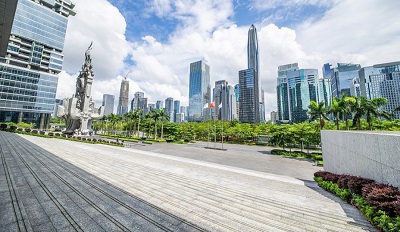
文 | 谢祖墀、胡瑞淇、林宇倩
2021-11-24
本文是高风咨询CEO谢祖墀博士与高风咨询高级顾问胡瑞淇、林宇倩共同撰写的文章,此文于2021年11月24日发表在香港《灼见名家》网站。原文名为Shenzhen: China’s Success Story, 此为中译本。
过去40年以来,深圳成为中国改革开放的里程碑与标志性城市。华为、腾讯、平安、比亚迪等中国知名企业均在此落地深耕,深圳的GDP超过2.7万亿人民币(约4200亿美元),如果与某个国家比,深圳城市GDP仅次于挪威,可排在世界第31位。
深圳已然从一个朴素的小渔村,成功蜕变成为了中国乃至世界领先的科技中心。如今,不少世界各地区和城市都希望借鉴并复制深圳的发展经验。
在全球产业价值链中跃升
深圳的故事经历了几个阶段。上世纪80年代初,中国开启改革开放,深圳被指定为首批经济特区之一。这意味着它可以尝试新的发展方式,而不必严格参照国内其他地区的做法。在此期间,深圳成为了主要面向西方市场的劳动密集型产品的出口基地。
由于深圳毗邻香港,不少香港和其他海外华人的资金,为此类专案提供了足够便利且资金充足的启动平台。由香港和其他海外华人公司主导的工业活动让不少深圳的本土企业,亦逐渐成长起来。而随着时间的推移,深圳除了在服装、鞋类和玩具等行业保持持续增长的同时,其消费电子行业亦开始脱颖而出,并逐渐将业务边界从美国拓宽至其他亚洲和西方国家。
这些企业被经济特区的政策所吸引,而这些政策亦确保了深圳低成本的营商环境、工业化的迅速发展以及基础设施的建设。廉价工作力也从中国其他城市不断涌入深圳。
在这一时期的深圳发展中,两项政策起到了至关重要的作用。首先,深圳政府开始向房地产开发商出售(或长期租赁)土地,这是从香港学来的创收方法。通过这种方式,深圳积累了大量财政收入,并快速投入到基础设施建设中,例如城市交通与电信系统,而这成为了深圳工业化的重要推手。
积极寻求发展与重新置放
大约在2010年代的早期至中期,深圳由于人力成本的上升削弱了其竞争力,于是劳动密集型产业开始向中国其他地方或亚洲国家转移。当地政府深刻意识到深圳亟需改变,开始为深圳的下一阶段发展做起了准备。新阶段发展的重点领域聚焦高科技产业,并成功取得了诸多科技上的进步和突破,其中许多专案亦是中国在该领域的首次尝试。
随之而来的,是大力推进工业发展园区的发展建设。深圳优良的营商环境和正在进行重塑的全球先进电子产品产业价值链,助推了新一轮的资本加持和对技术密集型制造业的投资浪潮。这使得深圳在全球产业价值链中,尤其是在电子产业,走在了世界前列。不得不提的是,深圳原先打造的传统电子制造产业基础,亦为今日的成功奠定了良好的基础。
国内外企业在深圳的大规模投资,大大推动了先进电子制造、物流和金融服务领域的本土创新。一个拥有先进电子产品供应链网路和由设计师、工程师、零部件供应商、制造商和测试商共同构成的生态系统的深圳应运而生。一个通过硬体赋能的快速反覆运算的环境应运而生。
其中,一个众所周知的例子便是手机产业。从2000年代初期的诺基亚、摩托罗拉和三星,到后来苹果推出的智能手机,都选择在深圳生产部分零件。在深圳,手机可以以低成本实现快捷的生产,且其产品与功能已被不断反覆运算与改进。正是在这种环境下,华为、OPPO、Vivo(均是在深圳地区诞生的公司)都开始对新的手机产品不断创新。
政府的策略引导与积极参与
在深圳的发展过程中,政府为许多特定领域的初创企业设立了政府引导基金。起初的重点是扶持与发展已经建立优势的消费电子产品,此后其范围又扩展到新能源、汽车和生物技术等多个领域。作为最早推出政府引导基金(包括公募资本的投资基金)的政府之一,深圳不仅推动了地方创新,也快速推动了私募股权和风险投资市场在深圳的发展。
如今,深圳已成为中国经济发展的中心。2020年,深圳出口总值高达1.7万亿元人民币(2650亿美元),连续20多年位居全国前列。深圳不仅是制造基地,也逐渐蓬勃发展成为颠覆性的技术创新和中心,并不断在全球产业价值链中高附加值的部分发挥作用。
深圳,亦是一些国内外知名公司的所在地,它吸引了来自中国和世界其他地区的人才和投资。IBM、康柏、施乐、杜邦等一大批领先的外资跨国企业纷纷在深圳开展业务,他们为深圳带来了更多的资金、技术和人力资源。而华为、腾讯、比亚迪、TCL、平安科技、大疆创新、商汤科技等本土龙头企业也纷纷落户于此。
深圳,在粤港澳大湾区的发展中占据着重要的战略地位,因此,其亦在中国的整体发展中也扮演着更加重要的角色。正如2019年2月发布的《粤港澳大湾区发展规划纲要》中提到的,深圳将与其他城市共同合作,推进科技的创新与发展,并在此过程中,充分利用其自身竞争优势,发挥潜力。
例如,作为电池和汽车制造商的领先企业比亚迪,其总部位于深圳,但电池工厂位于惠州,而其在香港的实验室中所实现的创新突破,往往在深圳落地,实现商业化。
什么造就了深圳奇迹?
多种因素的推动成就了现在的深圳奇迹,使得深圳实现了跨越式的发展。首当其冲的一点是中国独特的治理结构,深圳的迅速发展正是国家治理结构的微观缩影。这种独特的治理结构确保了地方政府和中央政府目标的一致性,从而使地方政府能够最大程度地激发当地民营企业家的创新。
此外,中国国有企业和私营企业的二元经济结构,确保了国有企业对公共产品及服务发展的提供,如基础设施的建设,通常不是为了狭义上的经济回报,而是为了更广泛的造福社会。而包括本土企业和外国企业在内的私营企业的成功,亦受益于此类业务的展开。
这种治理方式最初来源于由邓小平在80年代初期领导下提出的中国的改革开放,计划逐步从计划经济转变为市场经济。而中国在探索计划经济与市场经济的平衡的同时,亦在探索政府自上而下的政府治理,与企业自下而上的创业追求之间的平衡,二者同步进行并协调发展,从而确保其能适应中国不断变化的环境。
从更广泛的角度来看,这种治理方法本质上极具包容性,因为它可以在适当的时机,接受并容纳新思想的出现。因此,它亦与历史上中国文化的包容性一致,多种思想流派以有意义的方式融合在一起。
深圳对中国治理的启示
深圳也从多个方面为其发展提供了诸多支援。自1990年代以来,深圳建立了多个高新技术产业园区,以支援高新技术产业的不断发展壮大,并将通过公共和私人来源所筹措的资金,不断投入发展中最需要的地方。
同时,深圳不断深化人才引进战略,完善人才储备。从1984年成立人才交流服务中心,到2010年每年投入不少于10亿元用以培育和引进高层次人才及团体,都是其人才战略的一部分。此外,地方政府亦不断激发民营企业活力和创造力,从而促进创新。
当然,深圳在其发展过程中亦遇到了诸多问题,如不断上涨的房价和经济发展能否保持高速等。但尽管如此,深圳已成为中国治理体系和治理能力的现代化纪实,以及在推动城市发展中,深圳政府在与企业合作过程中所扮演的角色和发挥的作用亦成为学习的典范。
深圳成功的故事值得其他国家与政府学习与借鉴,并根据各自的情况加以调整。展望未来,我们期待深圳在粤港澳大湾区的发展中,发挥更加重要的作用,亦为其进一步发展奠定基础。
灼见名家 | 谢祖墀:科技如何进一步促进粤港澳大湾区的互联互通

文 | 谢祖墀
2021-11-18
本文是高风咨询CEO谢祖墀博士撰写的文章,此文于2021年11月18日发表在香港《灼见名家》网站。多个领域如智慧城市、制造、移动出行和医疗服务等之间的互联互通,将提高城市的经济活力和人民的生活水准,令粤港澳大湾区独特的定位成为中国乃至世界的榜样。
粤港澳大湾区的建设已成为国家重大发展战略,其旨在深化大湾区内11个城市之间的合作,发挥各自的竞争优势,同时促进区域经济一体化的融合发展。
大湾区的独特性在于其包括三个不同的司法管辖区。在这样的背景下,人流、物流、资金流和资讯流的互联互通对大湾区的运行起了至关重要的作用。
金融科技发展 加速互联互通
近年来,粤港澳大湾区在金融服务领域的互联互通明显增强。一系列专案在大湾区的成功实施证明了其跨境投资的无限潜力。分别于2014年和2017年启动的「港股通」和「债券通」,亦积极促进了资本在香港与内地的股票市场和债券市场之间的流动。继上述专案取得顺利开展后,首个以大湾区为重点的跨境财富管理互联互通计划(「跨境理财通」)于2021年10月启动,从而进一步开放了内地金融市场,促进区域经济一体化。
中国现在已经进入了一个以5G、AI、区块链和云计算等新的颠覆性技术为代表的新技术时代,大湾区在开发这些创新技术的应用方面,处于领先地位。新兴的创新技术,亦将前所未有地加速互联互通的发展。尤其是在新冠疫情期间以及后疫情时代,新的商业模式随之出现,亦将在未来赋能下一代智慧城市和诸多传统行业的数位化转型建设,例如医疗健康领域将迎来新的浪潮。
粤港澳大湾区亦是金融科技创新的聚集地。区块链所支持的分散式账本技术使得协同多种服务成为可能。举例来说,「i深圳」是深圳统一的数位身份验证系统,它利用分散式账本技术、大数据及人工智慧,帮助实现跨境无缝的金融系统运作,且该技术将持续推进各区域之间的协同发展。
中国亦处于中央银行数字货币(CBDC)研究和应用的前沿。粤港澳大湾区是中国首批开展数位人民币试点的区域。于2020年10月,深圳政府联合央行开展数位人民币红包试点,面向公众发放总额高达1000万的红包。诸多的试点不仅加强了大湾区内金融科技基础设施的建设,更进一步扩大了数位人民币测试的应用场景,展现出它极具透明性的特征,亦将为数字经济生活带来更多便利。
科技重新定义 香港再工业化
粤港澳大湾区内的商业模式也在逐渐转变与升级。例如,在医疗健康领域,「微医」(WeDoctor)等「互联网+」的医疗平台正说明大湾区居民通过不同管道,更加便捷地享受线上和线下一站式「远程诊断、治疗和覆诊」的服务。展望未来,随着大湾区内病人医疗资讯的加速互通,数位医疗运营和合作将会愈来愈普遍。
为了进一步实现湾区内人员、货物的持续流动,城市物理基础设施(如桥梁和高速公路)和制度基础设施(如系统和资讯)亦在不断融合。如港珠澳大桥的开通和其他交通基础设施(机场、高速公路和高铁网路)的全面升级,大大促进了大湾区城市之间的联系。
与此同时,安途(AutoX)、文远知行(We Ride)、百度阿波罗(Apollo)等在自动驾驶领域的领先企业,也在广州、深圳等城市交通转型中取得进展,为未来大湾区智慧交通的建设添砖加瓦。日益自动化、智慧化和加速互联的商用车领域也颇具潜力。
在制造业方面,粤港澳大湾区向着成为智慧化、互联化和多中心化的的制造中心升级。到2022年,愈来愈多的数位化和自动化方面的技术,以及大数据分析和云计算,将重新定义制造的方式。香港抓住这个机会,并借此提出了再工业化的倡议,因而香港将有机会进入一个新的制造业体系和生态系统。
在这个生态系统中,并非所有环节都需要在香港进行,亦可在大湾区其他城市完成。科技带来的互联互通,将加速香港在制造业的能力,重建其中心地位,并以新的形式表现出来。
推进智慧城市 须加强数据安全
随着新科技技术的应用完善了数位基础设施的建设,大湾区内的城市也变得更加智慧。例如,广州正在建设涵盖态势感知、运行监测、决策支撑的「数位孪生城市」。而随着城市进一步智慧化,它们对城市重点功能的衔接提供的支持愈来愈强,如对新冠疫情的防护与控制。
然而,随着粤港澳大湾区内更为广泛的互联互通,新的挑战也随之而来。我们需要更加全面的安全措施,去保护这一过程中所产生的海量数据。而最近颁布的《数据安全法》和《个人信息保护法》,为数位经济发展的提供了第一步的法律支援。
跨境数据应作为大湾区综合发展的重中之重,跨境监管机构必须合作制订跨境数据管理的规则、机制,以及跨境数据的安全标准;同时,应鼓励和开展允许跨境数据流动的试点计划。
加强粤港澳大湾区内的互联互通,是将其建设成为世界级城市群的关键。多个领域如智慧城市、制造、移动出行和医疗服务等之间的互联互通,亦将提高城市的经济活力和人民的生活水准。粤港澳大湾区独特的定位使其成为中国乃至世界的榜样。
【今日语录】11月15日

历经十多年在无线互联网上的不断创新,中国现在已经进入了一个以5G、AI、区块链和云计算等新的颠覆性技术为代表的新技术时代。再加上政策和法规的不断变化以及需求模式的变化,我们预期会出现更多的技术创新。新的玩家将在此过程中涌现,包括外国和本地的企业,它们将共同创造更多的竞争和合作的机会。因此,我们可以期待一代又一代更具创造力和竞争力的参与者在适当的时候出现,从而进一步发挥中国未来作为创新中心的角色。
灼见名家 | 谢祖墀:数据安全已成为企业的核心问题

文 | 谢祖墀
2021-11-02
本文是高风咨询CEO谢祖墀博士撰写的文章,此文于2021年11月2日发表在香港《灼见名家》网站。展望未来,人类将会追求一个更为互联互通、虚实共存的世界。同时,由于各个国家在数据主权上的要求,跨国企业的商业模式将变得愈来愈复杂。
众所周知,中国已逐渐发展成为世界主要的数字经济体。截止至2020年底,中国互联网用户数量已经接近10亿人。
同样在2020年,微信的每月活跃用户数已超过12亿,抖音的每日活跃用户已超过6亿,而拼多多作为成长最快的电商平台,每月有超过7 亿的访问用户。阿里巴巴旗下的支付宝和腾讯旗下的微信支付,借助其二维码支付的技术优势,共处理了中国约95% 的数字支付。
暴风式增长的中国数据市场
在中国,数据生成的速率可谓是暴风式增长。根据中国信息通信研究院的数据,在中国产生的数据总量从2017 年的2.3 泽字节(1泽字节=270字节)上升到2019 年的3.9 泽字节,并且还在持续增长。
早在2015年,阿里巴巴集团创始人马云就曾表示:「我们正在进入一个新的能源的时代,这个时代核心资源不是石油,而是数据。」自从互联网进入中国,中国企业家便迅速利用互联网创业,建立了围绕数据收集和使用的商业模式。这种商业模式为中国孵化了许多世界闻名的科技公司, 如阿里巴巴、腾讯,以及字节跳动等等。
这些公司通常会构建由数据支持的,多支柱的商业模式。首先,它们通过大量数据与用户建立全方位联系,这些大型平台公司旗下的APP均拥有大量的活跃用户。其次,他们可以通过用户过去的数据记录,利用大数据及算法,聚焦到每一个具体的用户。
而许多科技公司之所以能够快速增长,也恰好是因为中国在过去没有太多数据安全相关的法律法规。进取的中国创业者在致力于解决中国社会存在的诸多痛点的过程中,公司得以快速扩张。而其中不乏一些「指数型组织」,其增长速度以指数型方式出现。
数据安全问题引发社会事件
随着时间的推移,与数据安全相关的问题开始逐渐显现,主要体现在以下三个方面。首先,从数据的产生或创建,到数据的使用、编译、筛选、结构化、重新格式化、扩展、分析,再到数据的销售和购买,会有多个利益相关者声称他们对数据拥有所有权。
其次是 保护个人数据和敏感信息的安全是至关重要的。但有时,公司和监管机构会很难界定哪些数据是私人的,哪些数据可以共享,以及哪些数据不能共享的。第三是 互联网公司往往拥有数百万或更多用户的个人数据,他们可以通过复杂的算法,利用这些数据谋利,如何把握其中的尺度也是一个显著的问题。
最近就有一些因为数据问题引发诸多争议的社会案件。2020年8月,中国银行保险监督管理委员会由于招商银行和交通银行未能保护信用卡用户的个人数据,对这两家大型国有银行开出巨额罚单。2021年7月,滴滴出行作为中国最大的网约车平台,赴美上市后,受到中国监管部门的网络安全审查。
审查期间滴滴被要求停止新用户注册,并且在IPO两天后,其App被中国网信办要求下架。随着监管的收紧,许多计划赴海外上市的公司也面临很多不确定性,如中国健身应用平台Keep、中国最大播客平台喜马拉雅等公司近期均取消了赴美IPO计划。
中国颁布数据相关法规法令
目前, 中国颁布了三部数据相关的法律法规,它们为解决数据安全问题奠定了基石。2017年6月,中国实施了《网络安全法》作为维护网络安全的纲领。该法律要求公司数据需存储在中国境内,并提出相关组织和网络运营商必须接受政府对于数据的安全检查。
为了进一步保护国家数据安全和公共利益,自2021年9月1日起实施的《数据安全法》,则要求中国所有企业根据数据的重要程度进行分类,并实行更加严格的管理制度。2021年8月20日,中国还通过了《个人信息保护法》,该法将于2021年11月1日生效。
《个人信息保护法》将对个人信息的数据收集和保护提出更严格的要求,并突破传统法律的属地管辖原则,强化了数据法的域外效力。待生效,个人信息保护法将与《网络安全法》 和《数据安全法》共同建立系统的监管架构,以保护中国的网络安全和数据隐私。
在这样的背景下,在中国运营的国内外公司需要关注诸多问题。对跨国公司而言,他们需要关注如何有效管理在中国和在其本土的数据,以及他们应该如何应对新的法律监管下的跨境数据传输。而对想要在海外上市的国内公司而言,他们需要制定以遵守数据法规为基础的战略计划。对于所有公司而言,他们都需要了解如何利用数据来产生竞争优势,以及远离「红线」。
数据规管对跨国企业的影响
在遵循新的数据法规的同时,公司亦会面临不同的影响。对于跨国公司而言,尤其是依赖于云基础设施,对数据进行集中控制的跨国公司,他们更需要评估其实践操作是否符合相关法律。许多国际科技公司,为了确保公司数据获取的过程是安全、可控的,以及该过程获得用户同意,可能会做一些有争议的决策。而国内企业在处理数据时,可以选择将数据外包给专业机构或聘请相关合规人员。这样,企业才能更好地保护国家数据安全和公共利益。
同时这些数据安全的法律法规,将促使跨国公司在中国设立更多的研发和创新中心。对跨国公司而言,在全球地缘政治发生重大变化后,他们在中国经营的方式也发生了很大变化,他们需要面对来自各个方面的问题:从数据安全到地缘政治问题。
他们已无法忽视中国的重要性,中国不仅仅只是一个重要的市场或供应链枢纽而已。中国展现出来的创新能力,使其日益成为全球知识和创新的主要来源。而其中一个关键因素,是中国正在建设的数字基础设施的速度、强度和复杂程度远超世界其他地区。
如果从战略的角度来看,未来几年会发生什么?《数据安全法》和《个人信息保护法》将会驱使企业在某种程度方面调整它们运营的方式,同时,亦会带来公司对管理系统和流程以及组织架构的改变。而各个公司应对的方法会根据行业进行调整,因为每个行业本质上都是有所不同的。
问题的核心往往是:数据应该存储在哪里?如何有效保护数据?哪些数据可以共享?而哪些是数据管理的「红线」?
展望未来,人类将会追求一个更为互联互通、虚实共存的世界。同时,由于各个国家在数据主权上的要求,跨国企业的商业模式将变得越来越复杂。对于那能更好更快理解新规则的公司,他们会在这个过程中发展出和拥有新的竞争优势。而来自世界各地的企业高管和战略家都需要不断思考,以应对新的挑战。
Caixin | Data Security Becomes a Core Issue
Opinion: Data Security Becomes a Core Issue for Doing Business in China

By Edward Tse
2021-11-03
Originally published by Caixin Global on November 3, 2021.
As many people know, China is now a major digital economy. By the end of 2020, almost a billion people had access to the internet in China. WeChat, China’s largest social media platform, surpassed 1.2 billion monthly active users in 2020, and Douyin, the Chinese twin of TikTok, now has over 600 million daily active users.
Meanwhile, over 700 million monthly users now visit e-commerce platform Pinduoduo. Alibaba-affiliated Alipay and Tencent’s WeChat Pay — the domestic e-payments giants that pioneered new payment technologies using QR codes — currently process about 95% of the digital payments market in China.
Data is being generated in China at a whirlwind pace. According to the China Academy of Information and Communications Technology, the total amount of data generated in the country went up from 2.3 zettabytes in 2017 to 3.9 zettabytes in 2019, and it is continuing to grow.
Back in 2015, Jack Ma, co-founder and then-executive chairman of Alibaba proclaimed: “We are entering a new energy era. In this era, the core resource is no longer oil, but data.” Since the wireless internet was first introduced in China, entrepreneurs have been quick to leverage it to build business models that rest on the gathering and usage of data. To this end, quite a number of successful tech platforms have emerged. Some like Alibaba Group Holding Ltd., Tencent Holding Ltd. and Bytedance Inc. have made it to the big league on a global basis.
These companies typically build their business models on a number of pillars enabled by data. The first is their ubiquity in connecting to their users through vast amounts of data. Apps such as the ones mentioned above have very large numbers of frequent users. Second is their ability to focus on each user on the data set on a “segment-of-one” basis using their algorithms. Many of these companies were able to expand very fast mainly because China didn’t have many regulations on data gathering and usage. The ingenuity of the entrepreneurs coupled with the prevalence of pain points in Chinese society allowed many of these companies to grow. Some of them were able to become “exponential organizations.”
Over time, issues related to data security began to surface in several areas. One typical question regulators and companies are asking is related to the ownership of the data. Usually, there are multiple stakeholders involved in the data value cycle, all of which might attempt to claim ownership of the data because, for instance, they created or generated data, or because they use, compile, select, structure, re-format, enrich, analyze, purchase, or add value to the data.
The second is data privacy. Keeping private data and sensitive information safe is paramount. But it is difficult to identify what data is considered private, what data can be shared and what data cannot be shared. And the third is data monopoly. Internet companies possess the personal data of millions of users, but to what extent they can actually manipulate the data by using sophisticated algorithms for their benefit is still a grey area.
Along the way, several events have exemplified the severity of these issues. In August 2020, the China Banking and Insurance Regulatory Commission (CBIRC) fined two of the country’s biggest state-owned banks, China Merchants Bank Co. Ltd. and Bank of Communications Co. Ltd., for failing to protect the personal data of their credit card customers. In order to prevent risks regarding national data security, China’s internet regulator has also ordered Didi Chuxing Technology Co. Ltd., a leading ride-hailing company in China, to stop signing up new users. Didi’s apps were forced off major app stores for two days after its IPO in July 2021. With China’s continuing cybersecurity reviews, rules for overseas listings have been tightened, and companies like the ones behind Keep, a Chinese sports-oriented social platform, and Ximalaya FM, the largest podcast platform in China, have recently canceled plans for U.S. IPOs.
Three major pieces of legislation in China have set the cornerstones for addressing issues related to data security. In June 2017, China implemented the Cybersecurity Law (CSL), which acts as the baseline for maintaining network security. The law requires that data be stored within China and that organizations and network operators submit to government-conducted security checks. In order to further protect national data security and the public interest, the Data Security Law (DSL), which took effect on Sept. 1, requires all companies in China to classify the data they handle into different categories and prescribes how such data is to be stored and transferred to other parties. On Aug. 20, China also passed the Personal Information Protection Law (PIPL), which took effect on Nov. 1. This new law imposes restraints on data collection and the transfer of personal information, and has an extraterritorial effect for companies both inside and outside of China. Once effective, the PIPL will work together with the CSL and the DSL to establish a broader regulatory architecture governing cybersecurity and data privacy protection in China.
Against this backdrop, companies are concerned about a number of key questions. Foreign-owned multinational corporations (MNC) are concerned about how to manage data across different regions, both in their home countries and in China, as well as cross-border data transfers, in compliance with the new data laws. For domestic companies planning to list overseas, strategic plans need to be put in place to comply with data security regulations. Both need to figure out how to use data to generate competitive advantages while staying away from the “red lines.”
These regulations are driving MNCs to set up research and development or innovation centers at their headquarters, increasingly in China. For MNCs, the way to operate in China has evolved quite a bit, particularly since global geopolitics started to undergo a significant shift. Data security has become a key issue that they are often not well prepared for. China has become not only a market or supply chain hub, but also a source of knowledge and inspiration because of intensive innovation. A key enabler of this is the increasing divergence in the speed, intensity and degree of sophistication of the digital infrastructure that China is building compared with other parts of the world.
Looking from a strategic standpoint, what could happen in the next few years? The big questions are where the data should be stored and secured, and where and with whom can they be shared with for the benefit of the company? Where do you draw the line? The DSL and PIPL will change how companies think about running a business in China. A lot of changes for management systems and processes as well as organizational structure will likely take place.
Looking forward, humanity expects to be even more connected. At the same time, local requirements for data sovereignty will also come to the fore. Business models will become more complicated. Those who can figure out the new game faster and better than others will likely generate new sources of competitive advantages along the way. These realities are challenging the minds of corporate executives and strategists the world over.
灼见名家 | 谢祖墀:5G将引领更多创新的出现

文 | 谢祖墀
2021-10-28
本文是高风咨询CEO谢祖墀博士撰写的文章,此文于2021年10月28日发表在香港《灼见名家》网站。5G与其他颠覆性技术带来了创新的新拐点,5G将通过创新为更多的行业带来重大机遇,也将重塑从研发到设计到制造、售后和服务的整个价值链的多个环节。新的篇章正在悄然开启,而中国在其中扮演的角色将极为重要。
5G在全球范围内的发展可谓是如火如荼。尽管我们还处在5G商用化的早期阶段,但我们可以看到各个国家政府与相关企业已经对5G相关产业倾注大量的投资。在未来几年,5G与人工智慧(AI)、区块链、云计算等颠覆性技术将催生更多创新的火花,亦会加速各行业数字化转型之路。
中国处于5G发展的前沿
根据全球行动供应商协会(GSA)的最新报告,全球范围内70个国家(与领土)中的169个行动营运商已经推出了5G服务。截至2020年12月,全球范围内5G基站的部署已经超过100万个,并且预期会在2021年底超过210万个。与此同时,根据摩根大通的调查研究,全球范围内5G的用户数量在2020年12月已经超过2.25亿,预计在2025年将跃升到30亿。
众所周知,中国一直处于5G发展的前沿。全球移动供应商协会报告显示,截至2020年12月中国5G基站的数量超过了71.8万个,几乎是第二名韩国5G基站数量的6倍,占所有5G基站数量的70%。中国的5G用户数量也是遥遥领先,全球2.25亿使用者中有约2亿来自中国。与此同时,中国企业在5G的研究上亦遥遥领先,据日经亚洲(Nikkei Asia)的调查显示,世界上1/3的5G专利来自于中国。
得益于5G与其它颠覆性科技如人工智慧、区块链和云计算等技术的发展,许多国家,特别是中国,正在进入技术创新的新时代。我们正处于经历创新与颠覆的重要拐点,会有更多创新的公司甚至是颠覆者出现。
未来可望实现全场景互联网
5G的应用其实在我们生活中随处可见。由于5G具有低延迟、大频宽和超高速率的特点,它被广泛应用于诸多生活场景,如覆盖面广阔的集体运输如高铁和地铁,人口密集地区的住宅和办公楼,需要低功耗且有多种场景连接的智慧城市和智慧农业,以及需要低延迟网路的的自动驾驶和数字孪生。
其中,5G赋能物联网(IoT)、「车路协同」、远端医疗和工业互联网一直以来是社会广泛关注的话题。在物联网领域,5G被大量应用于智慧手机、智慧家具、自动驾驶的车辆、可穿戴设备等终端设备上,伴随着愈来愈多设备之间的无缝对接,未来亦会实现全场景互联网。
在汽车行业中,5G是推动该行业进入「智慧出行」时代的关键,在这个时代中,车辆变得更加智慧化与互联化,随着时间的推移,亦可实现车辆的自动驾驶。5G也加强了许多车载功能与体验,如车载娱乐、即时定位和导航系统、车联网(V2X)和自动驾驶等。
在工业领域中,5G加强了柔性生产和智慧制造的能力;在医疗领域中,5G加速了远端监控、远端咨询与指导,以及使远端手术变为可能;在泛娱乐领域中,5G使得云游戏和高清视频服务正在成为现实。
在中国,尤其是以科技创新为核心的「十四五」规划,与实施不久的共同富裕、乡村振兴、碳中和、双回圈等关键政策,5G赋能的应用将在驱动这些政策和规划方面起到关键的助推作用。
在此过程中,我们将看到产业融合和转型的加速,5G将使更多行业间的合作和资讯无缝交换,并可能引发下一代工业革命。
多间科企投身「元宇宙」
近年来一个非常热门的话题是快速发展的「元宇宙」(Metaverse),简单来说,它是多人在线游戏、可编辑的世界、经济系统、社交系统和去中心化认证系统,以及现实元素等众多因素的集合。它融合了增强现实(AR)、虚拟实境(VR)、混合现实(MR)和脑机介面(BRI)等技术,为使用者创造了过去无法想像的交互体验。
虽然对于元宇宙的研究仍处于非常初级的阶段,许多知名的公司已经表达出进入这一领域的强烈兴趣。Facebook首席执行官马克·朱克伯格(Mark Zuckerberg)表示希望在未来五年内将Facebook转变为一家元宇宙公司。据外媒The Verge 10月19日报道,Facebook计划重新命名公司,以突出元宇宙的概念。微软(Microsoft)、英伟达(Nvidia)和Roblox等其他领先的科技公司亦宣布,它们将持续关注与投资元宇宙领域。
5G与人工智慧,是推动元宇宙实现商业化的关键因素。元宇宙对网速的要求高达100Mbps,目前所有网路中只有5G网路才能实现。5G可以使人们在进入元宇宙之前,将大量体验场景下载到本地设备。
此外,5G网路的延迟小于10毫秒,这将更好地维持远端渲染(remote rendering)。畅想未来,连接元宇宙所需要的设备也将变得更加迷你,因为使用5G可以将场景直接传输到耳机或其它设备,这将减少对当前设备的大部分发热元件的需求,并同时降低了冷却和电源需求。
5G将会带来什么商业模式?
对于消费者来说,5G同样可以创造新的使用者需求。5G时代下,愈加丰富的使用者沟通与用户体验将催生新的产业以及新的商业模式。
与当今其他的产业相似,5G的商业化将在一定程度上受到地缘政治以及数据安全主权等问题的影响。这将会在一定程度上使5G的商业化更为复杂。同时,人类却在不断追求更多的互联互通。因此,公司需要将这些考虑因素纳入其未来业务战略的制定中。
5G与其他颠覆性技术带来了创新的新拐点,5G将通过创新为更多的行业带来重大机遇,也将重塑从研发到设计到制造、售后和服务的整个价值链的多个环节。新的篇章正在悄然开启,而中国在其中扮演的角色将极为重要。
China Daily | China, US to Play Key Roles in New Era
China, US to Play Key Roles in New Era of Globalization
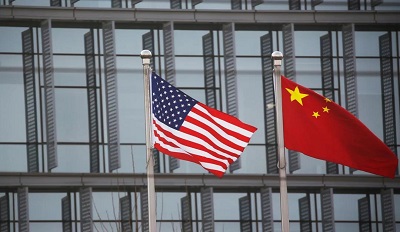
By Edward Tse
2021-10-27
A recent article authored by Gao Feng Advisory CEO Dr. Edward Tse was published by China Daily on October 27.
US Trade Representative Katherine Tai, in a speech on Oct 4, said that instead of the decoupling of the United States and China, perhaps people can start thinking about “recoupling”, indicating that the notion of decoupling is either over or losing relevance.
The administration of former US president Donald Trump imposed or threatened to impose a range of measures that some viewed as precursory to the two countries decoupling in terms of economy, trade and technology. These measures included putting a number of Chinese tech companies, such as Huawei, SenseTime and Hikvision, on an “entity list” and limiting their business with the US.
This was intended to bar Chinese participation in the US communications network and threatened the US operations of Chinese companies such as TikTok, WeChat and Xiaomi.
At the height of the COVID-19 outbreak in China in early 2020, many expected a large number of foreign companies, particularly US companies, to leave China in droves. These people called this expected phenomenon “de-Sinicization”.
However, a media report said US-China bilateral trade reached $630 billion in 2020, a 16.4 percent year-on-year increase. In the first six months of 2021, it grew 45.7 percent year-on-year to $341 billion.
In a survey by the Shanghai American Chamber of Commerce released in September, 72 percent of 125 respondents with manufacturing operations in China said they had no plans to move any production out of China in the next three years.
Separately, Samantha Vortherms, assistant professor of political science at the University of California, Irvine, and Jiakun Jack Zhang, assistant professor of East Asian politics at the University of Kansas, found that the US-China trade war had not prompted US businesses to leave the Chinese market.
The record foreign direct investment flow into China in 2020 indicates that businesses in both countries remain deeply integrated with each other. “The degree of decoupling, measured by foreign direct investment, has been greater in the minds of politicians and pundits than the reality of firms in China,” the Shanghai American Chamber of Commerce said in its annual China Business Report.
Moreover, various sectors have reacted to the driving forces in very different ways.
While the US has restrained Huawei from participating in the building of the 5G communications network in its domestic market, US tech companies can still work with Huawei in international 5G standards development activities.
In the semiconductor industry, both the Chinese mainland and the US are trying to strengthen their own semiconductor value chains, with key players such as Taiwan’s TSMC and South Korea’s Samsung setting up new manufacturing plants outside of their home bases. Key parts and components producers are looking at new strategies because of the quickly shifting global landscape.
Global automakers need to consider two systems-one China-centric and one US-centric-as the speed, intensity and sophistication of smart infrastructure being built by China and the US continue to diverge.
However, in industries such as agriculture and food, globalization will likely expand. China’s growing middle-income group means increasing demand and higher requirements for nutritious food. This demand would have to be met partially with sourcing from abroad.
While the past three decades of globalization have greatly reshaped the world, the fundamental nature of globalization is changing in major ways.
In the first era of globalization, the West was the major center of demand, and China was the major source of supply for a wide range of products.
While this continued in globalization’s next phase, China’s rapidly growing middle-income group and the drive for upgrading business capabilities are making it a center of demand as well as supply.
Hence, the “dual circulation” paradigm-in which the domestic market is the mainstay and the domestic and foreign markets reinforce each other-is emerging, consistent with the new economic policy. Regional trade agreements such as the Regional Comprehensive Economic Partnership will expand the “internal circulation”.
While these will probably be the key themes going forward, a certain amount of regionalization or localization of supply chains could also take place, and perhaps a certain degree of “re-shoring” of manufacturing to the US.
Will any decoupling between the US and China occur?
As long as US sanctions on some of the Chinese tech companies remain, some degree of decoupling will continue.
Data security is increasingly viewed as a national security issue. As such, the US and China will expect businesses operating in their respective jurisdictions to comply with their internal regulations, leading to some degree of decoupling.
In addition, the increasing divergence of the intensity and sophistication of the two countries’ digital infrastructures would mean some companies will have to follow different strategies.
However, the world is being driven into a new era of globalization, in which both the US and China, the world’s top two economies, will play critical roles, collaborating in some cases and competing in others.
As humanity searches for greater interconnectivity, decoupling would not be fully aligned with that trend. In many aspects, there never really was any decoupling, so there is no need for recoupling.
In some specific cases, decoupling or partial decoupling did happen, and as US Trade Representative Tai said, perhaps it is now time for recoupling.
In the increasingly interconnected world, a simplistic notion of decoupling does not make much sense, and it will not happen. Going forward, the US-China relationship will become much more intricate and sophisticated, and win-win cooperation will be optimal.
灼见名家 | 谢祖墀:脱钩还是再挂钩 日益错综复杂的中美关系
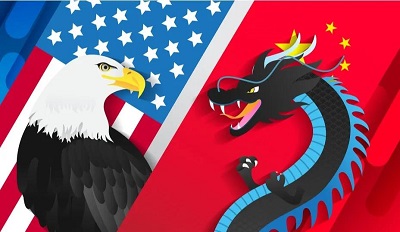
文 | 谢祖墀
2021-10-20
本文是高风咨询CEO谢祖墀博士撰写的文章,此文于2021年10月20日发表在香港《灼见名家》网站。原文英文版于2021年10月14日刊登于《中国日报》网站,此为中译本。
美国贸易代表戴琪在10月4日的一次讲话中表示,与其继续说中美脱钩(de-coupling),人们不如开始思考中美之间的再挂钩(re-coupling),她的言下之意即是所谓的脱钩已经(或应该)成为过去,或者说脱钩已经失去了意义。
她的言论是否准确?再挂钩是否真的发生?如果是的话,它将会如何发生呢?而它对于商业的启示又将是什么呢?
美国公司成群结队离开中国?
一般人认为,特朗普政府实施的一系列对华干预措施,是造成中美两国在经济、贸易和科技方面脱钩的重要原因。这些措施包括将华为、商汤科技和海康威视等一系列中国科技公司列入他们的「实体名单」,限制着这些公司在美国开展业务。
此外,他们还计划开展「清洁网络」行动,该计划目的在于排除中国企业和它们的科技存在于美国通讯网络之中,同时亦尝试限制TikTok、微信和小米等一些中国公司在美国的业务。在2020年初中国新冠疫情爆发的高峰期间,不少人预计大量外国公司,尤其是美国公司,将成群结队地离开中国。这些人将这种他们预测的现象称为「去中国化」。
让我们来审视一下从那时之后都发生了什么。
据《金融时报》近期报道,流入中国的资金创下历史新高。累计外国直接投资(FDI)从2010年的5870亿美元增加到2020年的1.9万亿美元。尽管全球外国直接投资在去年下降了35%至1万亿美元,但流入中国的外国直接投资仍然有所增加,从1410亿美元增加到1490亿美元。
在中美双边贸易方面,2020年中美双边贸易额达到6300亿美元,较2019年增长16.4%。这个数字在2021年前六个月达到了3410亿美元,同比增长45.7%。
上海美国商会在今年9月发布了一项调查报告,125家在中国有制造业务的企业之中,有72%的企业表示他们没有计划在未来三年内将任何生产迁出中国。
另外,加州大学尔湾(Irvine)分校的Samantha Vertherms教授和堪萨斯大学的张嘉琨教授发现,中美贸易战并没有促使大量美国企业离开中国市场。而从2020年流入中国的FDI创纪录的行为表明,两国之间的生意仍然「深度融合」。他们写道:「只有政客和『专家』们将脱钩看得比事实更为重要。我们几乎没有发现任何证据表明美国(的跨国公司)因为爱国而在大国竞争中放弃中国。」
全新的全球秩序正在出现
在特朗普政府对中国采取一系列制裁措施之前,大多数人都会认为人类正在进入一个由互联网、人工智能和先进网络技术所共同搭建出的万物互联时代。世界各国、多边机构、企业和个人也都普遍认为这是未来发展的趋势。
然而,随着特朗普政府对中国不断采取的贸易、经济、科技和企业层面上的措施,以及随后爆发的新冠疫情,这一局面发生了极大的改变。令世界上的两个超级大国之间的差异愈发突显。在这一背景下,不同行业采取了截然不同的方式应对这些变化。
尽管美国限制华为参与其国内5G通讯网络的建设,但美国科技公司仍然可以与华为合作开展有关国际5G标准的制定。
对于半导体行业而言,因其所需的巨大资源投入和不确定性,在过去30年间,它的发展是基于全球分工所构建的,但现在正在受到地缘政治和各个国家政策的影响和制约,以致其全球格局正在产生巨大的变化。中美两国都在努力提高自己在半导体价值链中的竞争力,因此,如台湾的台积电和韩国的三星等主要厂商均开始在本国以外建造新的工厂。而由于全球格局的快速变化,关键零部件生产商亦在寻找新的应对策略。
对于有跨国业务的汽车厂商而言,随着中美两国在建设的智能基础设施的速度、强度和复杂程度方面的有所不同,一个「一个世界,两个系统」(一个以中国为中心,一个以美国为中心)的新全球秩序正在产生,并正在对于愈来愈多的配备自动驾驶能力的智能互联车辆的设计和商业模式产生愈来愈大的影响。
全球化本质正发生重大变化
然而,一些行业在某种程度上,全球化可能会更加扩大。以农业和食品行业为例,随着中国的中产阶级不断壮大,人们对于食物的营养要求愈来愈多和愈来愈高,而其中部分需求则必须通过国外(全球)采购来满足。
全球化在过去30年极大地重塑了世界的同时,其基本性质也正在发生重大变化。
约30年前开始的全球化时代(我们称之为「全球化1.0」),西方国家是主要的需求中心,而中国则是许多产品的主要供应方。尽管这一趋势在全球化的下一阶段(「全球化2.0」)仍在继续,但中国迅速增长的中产阶级和不断提升的商业能力,将会让它成为一个新的需求中心。
因此中国正在形成以需求牵引供给、供给创造需求、国际国内互促的「双循环」发展的新格局。这也符合其新的经济政策。同时,区域全面经济伙伴关系协定(RCEP)的区域贸易协定将进一步扩大中国名义上的「内循环」经济。
同时,一部分制造业在某种程度亦很可能会回流到美国去(或直接在美国建立),相当程度的某些产品的供应链区域化或本地化亦可能会发生。
中美之间不存在简单的脱钩
那么,中美之间会发生脱钩吗?
只要美国继续对一些中国科技公司实施制裁,某种程度的脱钩就会继续发生。
数据安全愈来愈被视为国家安全的一部分。因此,美国和中国会要求在各自司法管辖区运营的企业遵守其相关法规,从数据存储和使用方面会导致一定程度的脱钩。此外,两国的数字基建建设的强度和复杂程度将会形成较大的差异,这意味着公司们将不得不在中美两地采取不同的数据策略。
然而,世界正在进入一个新的全球化的新时代,美国和中国将在其中发挥极为关键的作用。这将会导致中美会在一些特定情况下合作,但在另外一些特定情况下进行竞争。
随着人类寻求更多的互联互通,脱钩不会完全符合这一趋势。事实上,在很多方面,中美从来就没有真正地脱过钩,所以没有任何再挂钩的必要。
在某些特定情况下,却确实发生了脱钩或部分脱钩,正如戴琪女士所言,也许现在是再挂钩的时候了。
在这个越发日益互联的世界中,简单的脱钩概念并没有太大意义,也不会发生。放眼未来,中美两国关系将会变得更加错综复杂,能够达成双赢的合作将是最好的结局。
China Daily | Decoupling vs Recoupling
Decoupling vs Recoupling: US-China Ties to Become More Intricate and Interconnected
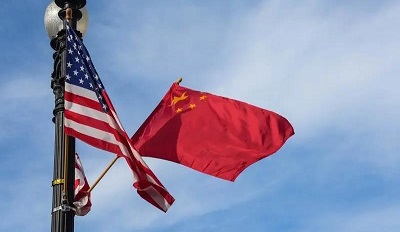
By Edward Tse
2021-10-14
A recent article authored by Gao Feng Advisory CEO Dr. Edward Tse was published by China Daily on October 14.
US Trade Representative Katherine Tai, in a speech on Oct 4, said that instead of the decoupling of the United States and China, perhaps people can start thinking about “recoupling”, indicating that the notion of decoupling is either over or is losing relevance.
Is she right? Did decoupling ever happen? If so, to what extent and will it continue to happen in the future? What are the implications for businesses?
The Trump administration imposed or threatened to impose a range of measures that some viewed as precursory to the two countries decoupling in economic, trade and technology terms. These measures included putting a number of Chinese tech companies, such as Huawei, SenseTime and Hikvision, on an “entity list” and imposing restraints on them in doing business with the US.
Besides, there was the threat of “cleaning the network” – barring Chinese participation in the US communications network, threatening US operations of some Chinese firms such as TikTok, WeChat and Xiaomi.
At the height of the COVID-19 outbreak in China in the beginning of 2020, many expected a large number of foreign companies, particularly US companies, to leave China in droves. These people called this expected phenomenon “de-sinicization”.
Let us examine what has happened since then.
According to a recent Financial Times report, inflow of funds to China has reached a new record. Cumulative foreign direct investment has risen from $587 billion in 2010 to $1.9 trillion in 2020. Although global FDI flows fell 35 percent to $1 trillion last year, FDI inflows into China still rose from $141 billion to $149 billion.
Similarly, US-China bilateral trade reached $630 billion in 2020, a 16.4 percent increase over 2019. In the first six months of 2021, it grew 45.7 percent year-on-year to $341 billion.
In a survey by Shanghai American Chamber of Commerce released in September, 72 percent of 125 respondents with manufacturing operations in China said they had no plans to move any production out of China in the next three years.
Separately, Professors Samantha Vertherms of the University of California, Irvine and Jiakun Jack Zhang of the University of Kansas have found that the US-China trade war has not prompted American businesses to leave the Chinese market.
The record FDI flow into China in 2020 indicates that businesses in both countries remain “deeply integrated” with each other. The authors wrote, “Decoupling… has been greater in the minds of politicians and pundits than the reality of true businesses in China, we find little evidence that US (multinationals) are playing their part in the great power rivalry by patriotically abandoning China.”
Before the Trump administration took specific measures against China, most thought humanity was entering an era of ubiquitous connectivity aided by the internet, artificial intelligence and advancing network technology. Countries, multilateral institutions, businesses and individuals were assuming the continuation of that scenario into the future.
The measures of the Trump administration and the subsequent outbreak of the pandemic changed that picture significantly, leading to greater clarity about differences in agendas of the two strongest powers in the world.
Against this backdrop, various sectors have been reacting to these driving forces in very different ways.
While the US has restrained Huawei from participating in the building of the 5G communications network in its domestic market, US tech firms can still work with Huawei in international 5G standards development activities.
In the semiconductor industry, while earlier it was structured on the basis of global division of labor, it is now being subjected to new realities of geopolitics and individual country policies.
Both China and the US are trying to strengthen their own semiconductor value chains, with key players such as Taiwan’s TSMC and Korea’s Samsung setting up new manufacturing plants outside of their home countries. Key parts and components producers are now looking at new strategies because of the quickly shifting global landscape.
International automakers now need to consider the “One World, Two Systems” (One China-centric and one US-centric) as the speed, intensity and sophistication of smart infrastructure being built by China and the US continue to diverge.
This has direct implications for design and business models of intelligent and connected vehicles that are increasingly being equipped with autonomous driving capabilities.
However, in industries such as agriculture and food, globalization will likely expand. China’s growing middle class means increasing demand and higher requirements of nutritious food. This demand would have to be met partially with sourcing from abroad.
While the last three decades of globalization have greatly reshaped the world, its fundamental nature is changing in major ways.
In the first era of globalization (let’s call it “Globalization 1.0”), the West was the major center of demand and China was the major source of supply for a large range of products.
While this continues in globalization’s next phase (“Globalization 2.0’), China’s rapidly growing middle class and the drive for upgrading business capabilities is making it a center of demand also, in addition to supply.
Hence a “dual circulation” of both domestic and international supply and demand is emerging, consistent with the new economic policy. Regional trade agreements such as Regional Comprehensive Economic Partnership (RCEP) would expand the “internal circulation”.
While these would probably be the key themes going forward, a certain amount of “regionalization” or “localization” of supply chains could also take place, besides perhaps a certain degree of “re-shoring” of manufacturing to the US.
So, will any decoupling between the US and China be happening?
As long as US sanctions on some of the Chinese tech companies remain, some degree of decoupling would continue to happen.
Data security is increasingly viewed as a national security issue. As such, the US and China will expect businesses operating in their respective jurisdictions to comply with their internal regulations, leading to some degree of decoupling.
Also, the increasing divergence between the intensity and sophistication of digital infrastructures of the two countries would mean some companies shall have to follow different strategies.
However, the world is being driven into a new era of globalization in which both the US and China will play critical roles, collaborating in some cases and competing in some.
As humanity searches for greater interconnectivity, decoupling would not be fully aligned with that trend. In fact, in many aspects there was never really any decoupling and so there is no need for “recoupling.”
In some specific cases, decoupling or partial decoupling did happen and as Tai said, perhaps it is now time for recoupling.
In the increasingly interconnected world, a simplistic notion of decoupling does not make much sense and it will not happen. Going forward, the US-China relationship would become much more intricate and sophisticated and win-win cooperation will be optimal.
灼见名家 | 谢祖墀:中国汽车行业进入新战国时代

文 | 谢祖墀
2021-9-29
本文是高风咨询CEO谢祖墀博士撰写的文章,此文于2021年9月29日发表在香港《灼见名家》网站。中国的汽车行业在五年后肯定会变得截然不同。势必会有一些玩家(可能是传统车企或新进入者)在市场的竞争中脱颖而出,他们将会变得非常有价值,但另一些则会被边缘化甚至被市场淘汰。
中国的汽车行业在新政策、新技术和需求模式变化等因素的驱动下,正在经历着巨大的变革。同时由于各种不同类型的行业玩家,包括一些传统车企和一些新进入者,正在以不同的方式进行竞争和合作,使得竞争愈来愈激烈,也进而创造了一个大规模、新兴而且日益复杂的竞争格局。
而这种竞争将推动更多创新的发展,以及市场玩家能力的提高,从而提升整个行业的品质水准。
政策正驱使汽车行业转变
中国政府分别于2018年和2020年宣布取消对新能源汽车和商用车生产制造的外资持股比例限制,并预计于2022年将取消乘用车的外资持股比例限制。在此之前,外国整车厂只能通过成立中外合资企业在中国进行经营,且最多只能拥有合资企业50%的股份。
随着政策的开放,许多最初的中外合资企业都进行了重组。例如,大众汽车重组了与江淮汽车集团的合资企业,从而拥有75%的股份;现代汽车通过对四川现代的收购,将其转变为一家外商独资企业,即中国第一家外商独资的商用车企业。此外,宝马已宣布计划将其在与华晨中国汽车的合资公司──华晨宝马中的持股比例从50%增加到75%,而这项交易将于2022年完成,届时中国政府将解除外国车企对合资企业的所有权上限规定。
新竞争格局正在形成
除了在中国汽车市场上深耕了几十年的传统国有汽车制造商和老牌外企之外,在过去10到20年里,中国市场中出现了一系列「新一代玩家」,其中大部分是中国的民营企业。而在此之中,长城、吉利、比亚迪等公司已成为市场上的强大竞争对手。
而随着新能源汽车和智慧网联汽车的兴起,其他新玩家也加入了游戏,包括特斯拉、以蔚来、小鹏、理想为代表的中国「新势力」;以华为为代表的科技公司;以阿里巴巴、百度为代表的互联网公司;以小马智行(Pony.ai),安途(AutoX),文远知行(WeRide)为代表的新晋自动驾驶初创公司,以及最近加入战团的小米。中国汽车市场上的竞争正变得愈来愈激烈,并且表现在远超于以前想像的更多的维度上。
例如,中国智慧手机和物联网领域的领先企业小米已决定进入新能源汽车市场,并正在构建一种不同于传统商业模式的新模式。小米旗下每月拥有超过一亿活跃用户的,AI语音交互引擎「小爱同学」,可直接应用于其未来的汽车产品,从而将车辆与具有相同AI引擎的所有其他物联网连接起来。而通过招募语音识别和人工智慧领域的国际知名科学家丹尼尔·波维(Daniel Povey)等方式,小米正在积极的提高其在这一方面的技术创新能力。
新的合纵连横正在企业间出现
随着公司在日益加剧的新竞争中不断寻找自己新的能力,因此,许多公司已经建立了与其他企业的新关系和新的合作模式,而这些新关系超越了原有的公司所有权类别简单的划分──国有企业、民营企业和外资企业。
因此,企业之间的关系迅速发展,企业之间新的合作模式也变得多样化并变得更加复杂。互联网巨头之一百度与中国最大的本土汽车制造商之一吉利汽车共同成立了一家电动汽车合资企业──集度汽车。集度汽车将充分利用百度的人工智慧技术和地图技术、Apollo的自动驾驶技术和吉利的浩瀚智慧进化体验架构。
与此同时,另一家互联网巨头阿里巴巴将与大型国有汽车制造商上海汽车合作,共同推出一个新的电动车品牌──智己汽车(IM智己)。智己汽车将充分利用阿里巴巴在大数据与人工智慧上的技术优势,与上海汽车在汽车生产上的丰富经验,其首款车型预计将于2021年底下线。
除此之外,宝马与长城汽车也已经成立了一家各持股50%的电动车合资企业。中国三大国有汽车制造商一汽集团、东风汽车和长安汽车已经成立了一家名为T3出行的合资企业,致力于提供汽车共用出行服务。
一个新的战国时代已经出现
中国汽车行业的结构在政府的政策主导下将继续保持动态发展。工业和信息化部部长肖亚庆在最近的一次讲话中作出警告,中国现在有「太多」电动汽车制造商,政府将鼓励电动汽车的行业整合。根据江苏省政府提交给国家发展和改革委员会的一份报告,2020年全国汽车产能利用率平均仅有53%。
中国的汽车行业在5年后肯定会变得截然不同。势必会有一些玩家(可能是传统车企或新进入者)在市场的竞争中脱颖而出,他们将会变得非常有价值,但另一些则会被边缘化甚至被市场淘汰。最终答案在很大程度上取决于这些公司今天决定做什么。
中国的汽车行业正在进入一个新的战国时代,群雄正在「逐鹿中原」。正如历史上的战国时代一样,不少新的理念(无论是技术、战略、管理方法等)将会因此而催生,百家争鸣,合纵连横。参与者将会有胜有负,留下来的将是一个灿烂的时代。
SCMP | New Model For Business

By Edward Tse
2021-9-16
Originally published by South China Morning Post with title “Foreign Firms Will Have to Adapt to China’s Common Prosperity” on September 16, 2021. All rights reserved.
On August 17, President Xi Jinping explained the concept of “common prosperity” as a key requirement of socialism and a major feature of Chinese-style modernisation. Major policies are in for a sea of changes.
These range from reforming income distribution to more equal opportunities in education, health care, pensions and housing; to addressing monopolistic behaviour; and to extending boundaries of common prosperity from physical wants to mental fulfilment. Reducing income inequality through primary, secondary and tertiary wealth redistribution will be a key focus.
The major objective of common prosperity is to recast the socioeconomic pyramid into an oval-shaped structure, with the widest part representing the middle class. With this change, average income is expected to continue to increase.
Common prosperity will favour more collective interests, but that does not mean it will be done at the cost of legitimate individual interests. Companies should continue to pursue profit but will also need to be conscious of the new “red lines” redefining monopolistic behaviour, data security and societal values to provide a more equitable environment for the younger generation, better basic welfare for employees and the like.
As policies, technology and demands change, all companies need to adapt. The impact of common prosperity on foreign-owned multinational corporations will range from basic and universal to sophisticated and specific.
At the basic level, it means businesses will need to take better care of their employees, providing more benefits with reasonable working hours. Multinationals will need to assess their contributions as corporate citizens in China.
Their impact on and contribution to society will become increasingly important considerations. Environmental, social and corporate governance responsibilities are more important than ever.
In a way, this is akin to what almost 200 American CEOs jointly proclaimed in 2019, stating their intent to serve the interests of all stakeholders, including customers, employees, suppliers and communities as well as shareholders. The difference is that the government is driving this change in China whereas it was socially conscious businesses in the United States.
The focus of growth will also shift. From the consumer internet and the mega platforms that have generated so much buzz in China in the past decade, the focus is likely to move to areas such as “hard tech”, manufacturing, life sciences, new energy, the environment, sustainability, industrial internet, agriculture and others. Services for the burgeoning middle class will expand and be more innovative.
Common prosperity must be viewed as part of other key policy initiatives, including pursuit of the “dual circulation” economic policy, technological self-sufficiency, a central bank digital currency, carbon neutrality by 2060 and others. Together, they form China’s pursuit of its own “modernity with Chinese characteristics”.
Players in the semiconductor sector, for example, will need to reposition themselves because of the changing global industry structure shaped by geopolitics and policies. Foreign carmakers need to consider “one world, two systems”, one China-centric, the other US-centric, as Chinese cities are building comprehensive smart infrastructure that will directly affect design and business models.
In segments recently opened to foreign investors such as asset management, wealth management products might need to correspond with China’s new societal structure. Critically, foreign companies that generate and capture data in China must satisfy both the new data security law and their home country’s requirements.
Smart cities serving the public agenda and business models of a range of industries will need to integrate with public infrastructure. Private businesses in the affected sectors may no longer be able to define strategic and operational parameters by themselves. Close coordination with the public sector will become necessary.
More new ventures could take the form of public-private partnerships, and new ecosystems of government, state-owned enterprises, private-sector companies as well as foreign multinationals will come into being. Foreign multinationals will have to critically examine their partnerships in China.
Perennial concerns of multinationals and their lobbyists have been in areas such as intellectual property, indigenous innovation, local champions, uneven playing fields and so on. While each issue still needs to be addressed individually, the new context means that, collectively, these might no longer be the make-or-break issues for multinationals. Rather, the issue is increasingly whether they can leverage China as a platform to become more innovative and competitive.
Common prosperity is a huge social undertaking and will be a game-changer in many ways. Done right, it will set the foundation for more balanced and sustainable growth, and that could have a major impact on the rest of the world.
At a minimum, companies will need to comply with new policies and regulations. At the other end of the scale, even the fundamental nature of some businesses could be redefined. For many sectors and businesses, China’s importance will continue to increase, not only as a market and a major supply chain hub but also as an epicentre of innovation.
Along the way, China will continue to open up to foreign-owned multinationals. Vice-Premier Hu Chunhua has pledged support for those that operate in China, recognising their contributions and underscoring that China looks forward to more investment from them.
Foreign multinationals need to understand the implications of the new policy landscape for their businesses in China and, for that matter, the impact of China on the rest of the world.
灼见名家 | 谢祖墀:共同富裕政策对企业的意义
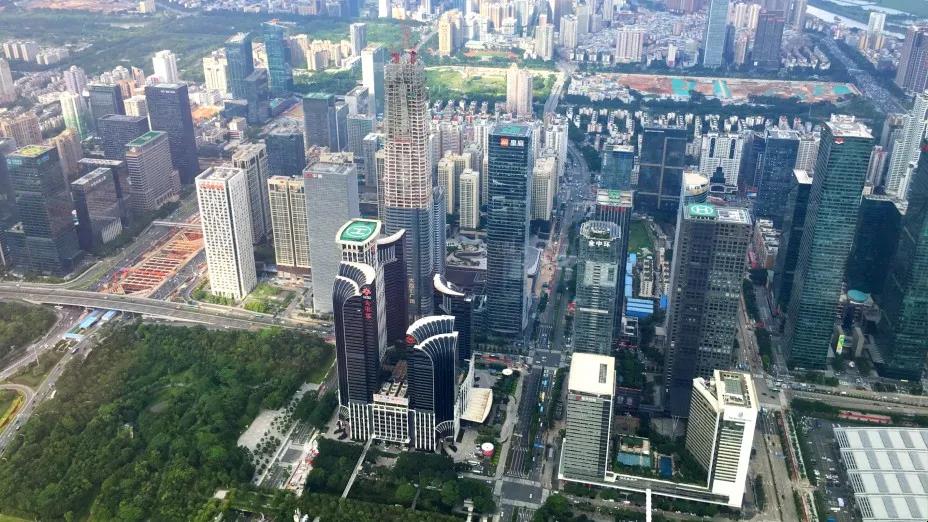
文 | 谢祖墀
2021-9-15
本文是高风咨询CEO谢祖墀博士撰写的文章,此文于2021年9月15日发表在香港《灼见名家》网站。原文英文版于2021年9月7日刊登于《财新全球》网站,此为中译本。
2021年8月17日,国家主席习近平在召开中央财经委员会第十次会议中提出促进「共同富裕」问题。他在会上强调,共同富裕是社会主义的本质要求,是中国式现代化的重要特征,要坚持以人民为中心的发展思想,在高质量发展中促进共同富裕。
这是一个明确的信号,表明相关政策正在发生巨变,从改革收入分配,推进教育、医疗、养老、住房等基本公共服务均等化,到反垄断和强调资本发展的规范性,以及将共同富裕的范围从物质扩展到精神领域。当前的重点可能是通过改革收入分配来加强民生建设,如初次分配的劳动者保护、再分配政策的社会保障问题、三次分配体系的建设都将继续推进。
共同富裕的新投资机遇
许多人都在讨论共同富裕新政策的影响,特别是对投资领域的影响。中信建投证券发布的「共同富裕系列报告」提出,共同富裕带来的新投资机遇在以下几个方面:
1. 国家将更多资源倾斜于贫困地区、落后地区的基础设施建设和升级,重点关注互联网硬件软件以及数字经济;
2. 为高端制造业和专精特新中小企业创造更多增长机会,尤其是信息技术、新能源、生物医药等科技产业;
3. 为人民提供更多优质的教育、医疗、养老等公共服务;
4. 增加人民的收入渠道,通过包括三次分配、促进基金会、慈善机构的发展,以及更多长期的财富管理方式,为资本市场带来长期增量资金,从而有利于股债和券商、保险等行业;
5. 升级消费水平,促进具备品质改善的消费品,以及文化、传媒、体育、休闲等服务业的增长机会。
显然,这些新政策将会改变许多企业的经营环境,并且要求本地公司和外国公司正确地评估是否需要指定以及如何制订新战略来应对这些变化。
共同富裕的关键目标是将社会结构从金字塔形结构重塑为「中间大、两头小」的橄榄型分配结构。在这种分配结构中,中产阶级群体占比最多。这也意味着平均收入将会持续增加。人们亦可预见,对于许多产品和服务的需求将持续增长,从而使得人民迎来更好的健康保障和更高品质的生活方式。
企业策略必须考虑社会影响力
随着共同富裕的提出,集体利益的重要性亦将会提高,尽管它不一定会超过合法的个人利益。因此,企业在继续追求个体利益的同时,也必须注意重新划定的「红线」,即防止过度垄断市场行为、违反数据安全法、扭曲某些社会价值观,从而为年轻一代提供更均衡的发展环境,为员工实现其基本福利等。
追求共同富裕,从最根本的层面来说,就是希望所有企业都能更好地照顾员工,提供更多的福利和更合理的工作时间。为此,汽车制造商吉利已经提出计划向员工发行3.5亿股新股(占总股本的3.56%)。
社会影响力与贡献值将成为对企业来说越发重要的考虑因素。企业和投资者必须更加重视ESG(环境、社会、公司治理)和社会责任。
企业的增长重心也将转移。虽然消费互联网以及大型平台过去十年在中国创造了巨大的影响,但中国的发展重点将会转移到「硬科技」、制造业、生命科学、新能源、环境、可持续发展、工业互联网、农业等领域。除此之外,为新兴中产阶级提供的服务将变得更加普遍,可以预期这些领域在适当的时机会有更多的创新。同时,履行新的数据安全法亦将至关重要。
共建具中国特色的现代性
共同富裕政策与其他关键政策举措事实上是一致的,包括「双循环」经济政策、努力实现自主技术创新、建设区域性城市群和振兴乡村、启动中央银行数字货币、到2060年实现碳中和等。它们共同构成了中国对「有中国特色的现代性」(Modernity with Chinese Characteristics)的追求。
因此,许多行业的公司都需要解决一些基础的问题。例如,跨国制造企业需要决定他们的制造和供应链环节中有多少应转移到中国或从中国转移出去?中国应在多大程度上保持其供应链的核心地位?例如,半导体行业正在受到地缘政治和各国政策变化的影响,需要决定如何在新的全球产业结构中进行重新定位。在中国创造和收集数据的外国公司必须要采取满足中国数据安全法的方式,同时亦满足他们本身国家的数据安全要求。
还有一些更深刻的影响,一些业务的本质将在一定程度上发生改变。随着服务于公共领域的智慧城市在中国各地陆续开展,诸多行业的商业模式将需要与公共数字基础设施进一步深度融合。对某些行业来说,私营企业将不再能够简单地自行确定战略和运营策略。他们将需要与公共部门紧密协调和合作。智能网联车、移动出行、数字健康、智慧能源和现代农业等可能会属于这一类。
我们将看到更多公私合营(PPP)的模式涌现,更多包括政府、国有企业和私营企业的生态系统将被建立。企业必须认真审视他们现有在中国与其合作伙伴的关系和决定需不需要进行重构。
中国追求共同富裕的目标是一项巨大的社会事业,这亦将在许多方面改变游戏规则。如果做得好,这将意味着,随着时间的推移,为更平衡和可持续的增长奠定基础,并创造可能对世界其他地区产生重大影响的变革。而这将对在中国经营的各种类型的企业均产生影响。
至少他们需要遵守新的政策和法规。更有甚者,某些业务的基本属性也将被重新定义。正因如此,企业需要从根本上重新考虑他们的战略,而对于那些跨国企业来说,这也可能对其在世界其他地区的运营产生着深远的影响。
【今日语录】9月13日

战略第三条路,我称之为「适时的连续跳跃」。中国不少企业,包括西方后来比较成功的企业,亚马逊、谷歌等等,他们并没有按照上述的理论的一或二去做,而是走上了战略的第三条路,即在机会出现与自己能力之间做一个比较与博弈。一开始的时候进入某个行业建设了某一些能力,当新的机会出现,你可能没有足够能力进入新的行业,但你会判断这个机会值不值得跳过去,尽管我没有足够的能力。
How Common Prosperity Will Affect China’s Private Sector

By Edward Tse
2021-9-7
A recent article authored by Gao Feng Advisory CEO Dr. Edward Tse was published by Caixin Global on September 7.
On August 17, 2021, President Xi Jinping explained the concept of “common prosperity” at the Central Finance Committee Meeting. He said, “common prosperity is a key requirement of socialism and a major feature of Chinese-style modernization.”
This is a clear signal that policies are in for a sea of changes, from reforming income distribution and providing more equal opportunities in education, healthcare, pension and housing to addressing monopolistic behaviors and extending boundaries of prosperity from material needs to spiritual satisfaction. The immediate focus might be put on reducing income inequality through the so-called “primary, secondary and tertiary wealth distribution.”
Many have commented on the implications of the new policy, especially for new areas of investment.
A report by China Securities says new investment opportunities will emerge in the following areas:
1) More resources for infrastructure building and upgrading in underdeveloped areas, with focus on hardware and software for the digital economy;
2) Enhanced growth opportunities for manufacturing and disruptive small and midsize enterprises in information technology, new energy and biomedical industries;
3) Better education, medical and elderly care services;
4) Expansion of channels for citizens to earn higher incomes, including “tertiary distribution” of wealth, promotion of charity foundations, and more long-term wealth management methods. This means additional capital flows into the securities market benefitting brokerages and insurance sectors;
5) Consumption upgrade to enhance growth opportunities in consumer goods, as well as services such as cultural, media, sports and entertainment.
The new policy will obviously change the operating environment, requiring local and foreign companies to evaluate if and how they should develop new strategies to address these changes.
The key objective of common prosperity is to reshape the societal structure from a pyramid-shaped structure to an oval-shaped one with the widest part representing the middle class. It also means that average income should continue to increase. One can expect continued growth in demand for a wide range of products and services leading to better healthcare and an improved lifestyle.
The importance of collective interests will heighten, though it may not outweigh legitimate individual interests. So, while companies will continue to pursue individual interests, they will have to be mindful of the redrawn “red lines” that will define excessive monopolistic market behavior, violation of data security law, distortion of certain societal values, a more balanced developmental environment for the younger generation, fulfillment of basic welfare for employees, and the like.
The pursuit of common prosperity means that at the most fundamental level, all businesses would be expected to take better care of their employees, with more benefits and more reasonable working hours. To this end, automaker Geely has already proposed a program to offer 350 million new shares (3.56% of total equity) to employees.
Societal impact and contributions will have to be increasingly important considerations for companies. “ESG” (environment, society and governance) and corporate social responsibilities will have to be assigned greater importance by companies and investors.
Focus of growth will also shift. While the consumer internet (and the mega-platforms) has generated much buzz in China over the last decade, focus will likely shift to areas such as “hard tech,” manufacturing, life sciences, new energy, environment, sustainability, industrial internet, agriculture and others. Also, services for the burgeoning middle class will become more prevalent. More innovations can be expected in these areas in due course.
Additionally, the practice of some internet companies using sophisticated algorithms to track individuals ubiquitously will be subject to restraints, at least to ensure it isn’t blatant. Fulfilling the new data security law will be essential going forward.
The common prosperity policy must be viewed as part and parcel of other key policy initiatives including pursuing “dual circulation” economic policy, targeting technological self-sufficiency, adopting the dual approach of building major regional city clusters while revitalizing rural areas, launching central bank digital currency, achieving carbon neutrality by 2060 and others. Together, they form China’s pursuit of its own “modernity with Chinese characteristics.”
In this vein, companies across many sectors will need to address some fundamental questions. For instance, global manufacturing companies need to decide how much of their manufacturing and supply chain they should shift into, or out of, China. To what extent should China remain the hub of their supply chains? Industries such as the semiconductor industry are being disrupted by changing geopolitics and individual country policies, and need to decide how to reposition themselves in the new global industrial structure. Foreign companies that generate and capture data in China must find ways to satisfy China’s data security law while also meeting their home country’s data security requirements.
More profoundly, the fundamental nature of some of the businesses will change to some extent. As smart cities which serve the public agenda come up all over China, business models of a range of industries will need to integrate significantly with public infrastructure. In these cases, private sector businesses will no longer be able to define strategic and operational parameters simply by themselves. Close coordination and collaboration with the public sector will become necessary. Sectors such as intelligent and connected vehicles, mobility-as-a-service, digital health, smart energy and modern agriculture are areas that come to mind.
We will likely see more new ventures take the form of public-private partnerships (PPP) and new ecosystems of government, state-owned enterprises and private sector companies will be formed. Companies will have to critically examine the continued vitality of their partnerships in China.
China’s pursuit of common prosperity is a huge social undertaking and this will be a game changer in many ways. When done right, it will mean setting a foundation for more balanced and sustainable growth over time, and creating change that may have major impact on the rest of the world. It will have implications for all kinds of businesses operating in China. At the minimum, companies will need to comply with new policies and regulations. At the maximum, even the fundamental nature of some businesses will be re-defined. As such, companies need to fundamentally re-think their strategies, and for those who have global presence, this may have severe implications for their operations in the rest of the world, too.
灼见名家 | 谢祖墀:大变局时代的企业战略思考

文 | 谢祖墀
2021-9-9
本文是高风咨询CEO谢祖墀博士撰写的文章,此文于2021年9月9日发表在香港《灼见名家》网站。文章节选于8月11日香港大学专业进修学院企业研究院第25期蓝海智见直播间讲课内容。
在今天的「百年未有的大变局」之中,企业的生存以及未来都具有很大的不确定性,企业家们必须具备怎样的战略思考?
从过去几年美国政府给予一些中国企业的遭遇来看,国家安全的问题是悬在企业头上的达摩克利斯之剑。TikTok(抖音的海外版)在美国事件的出现代表数据安全、数据主权的问题对企业来说已经是不可避免。同时,也让很多中国企业意识到当他们「走出去」的时候,他们除了需要对当地法规合规之外,他们还需要对地缘政治拥有更深刻的理解。
三大因素驱动中国企业发展
从企业战略层面来看,驱动中国发展的主要力量是什么?我归纳了三个主要的因素:政府的政策、科技的发展、需求端的变化。
从政策来讲,「十四五」规划将科技创新以及双回圈这两个战略作为发展重点,「中国制造2025」从高科技制造方面不断提高中国的竞争力,2060年要达到碳中和,以及要致力达到「共同富裕」。
从科技来讲,在过去十几年间,不少中国创业家通过移动互联网平台,在电子商务、社交媒体、大数据等领域做了大量的工作,而且也造就了不少创新企业。今天,我们正在进入一个新的科技时代,主要颠覆性的科技包括IoT/物联网、5G、大数据、人工智慧(AI)、区块链等。这亦代表一个新的创新阶段正在来临。
从需求端来讲,因疫情关系,在大健康、远端工作和娱乐、自动化、智慧出行等领域涌现不少新的商业模式。随着智慧城市的发展,以后特别是跟公共议程相关的问题都会逐渐透过智慧城市的方式来处理。这亦将会创造不少新的创新,公私合营合作(public-private partnership)将更会普遍。
地缘政治问题突显,全球化2.0时代来临
因国际形势的转变,地缘政治对企业的影响正在变得愈来愈大。
在地缘政治问题突显的今天,中国在世界中的定位将会是怎样?有一派的观点认为中国将会崩溃或者将会被孤立,全球化时代将会结束;另外一种观点则认为世界将会进入一个新的全球化2.0的时代,中国的角色日益重要。
在全球化1.0时代里,通过全球分工,中国主要是作为一个供应端,西方发达国家作为需求端。经过30年的发展,全球化将会进入2.0的时代,中国除了仍然作为主要的供应端之外,同时也将是重要的需求端。
全球化2.0的发展跟「双循环经济战略」不谋而合,RCEP签署后,中国与亚太地区国家,以及澳大利亚、纽西兰将逐渐成为单一的贸易区,在全球化2.0的发展中,亦将成为主要的组成部分。当然,在全球化2.0的时代,一部分区域化和本土化亦将会出现。
在这样的场景下,每个行业所面对的挑战、机遇都不一样,格局的发展亦将有所不同。例如半导体是一个高投资、高风险的行业,所以它特别适应全球化1.0,全球分工这样的做法。当时,中国在晶片设计、制造方面并没有花很多精力去做,反而台积电的代工,欧洲的光刻机,德国、日韩的高端零部件都做得特别好。
不过,以前纯粹的分工现在被地缘政治逐渐打破了。为了不被「卡脖子」,中国正在努力发展高端晶元行业,但同时中国的制造业还是会继续发展下去,一般制造和先进位造会共同存在。
另外一案例是农业和食品。这个行业将会继续全球化。中国的中产阶级不断壮大,他们对于食物的营养、蛋白质的要求愈来愈多。一方面国内可以提供一部分,但国外也有很优质资源,未来可以通过适当的管道来获取相关产品。
跨国公司在中国发展的范式也在改变。以前跨国公司把西方的产品和商业模型简单地从西方移植到中国来,但是他们逐渐发现中国不只是一个庞大的市场,它更是许多创新的来源。中国的很多创新可以影响到西方产品和商业模型的设计。「以中国为核心」变成了很多跨国企业新的发展方式。
尽管世界正在处于一个巨大变局之中,在某些方向中国正在面临更大的挑战,但总体来说,中国在全球发展的角色应该将是愈来愈重要。从某些角度来看,外资、内资的边界将会愈来愈模糊,企业需要拥有全球视野,甚至将自己作为全球的企业来看待。
企业战略第三条路:适时跳跃,调整边界
长时间以来,西方的主流咨询公司和管理学术界认为企业战略只有两种,一种是多元化,什么都做愈大愈好,先做大再做强。第二种就是以企业自身的核心竞争力为出发点,以企业能力为主的战略。能力是企业内生发展出来的结果。经历了30多年后,这种思考方式到今天在西方还算是主流思想,特别是美国。在过去十多、20年间,在中国不少人亦提出了很多新的概念,如互联网思维、平台战略等。
在百年未有之大变局的情况下,很多战略的问题靠这些简单的思考方式还是不能完全解决的,甚至不可能解决。很多问题是非连续性的形式出现,包括疫情的发生、政策的变化。企业过去不需要考虑的一些问题,在今天往往不得不考虑。大格局正在变化,企业战略的思考需要更为复杂。
战略第三条路,我称之为「适时的连续跳跃」。中国不少企业,包括西方后来比较成功的企业,亚马逊、谷歌等等,他们并没有按照上述的理论的一或二去做,而是走上了战略的第三条路,即在机会出现与自己能力之间做一个比较与博弈。一开始的时候进入某个行业建设了某一些能力,当新的机会出现,你可能没有足够能力进入新的行业,但你会判断这个机会值不值得跳过去,尽管我没有足够的能力。
在快速发展的不确定环境中,企业业务的边界是机会和能力的比较与博弈的结果。假如在原有的业务里,有新机会出现,你可以决定不跳,维持着原有的状态;或者你决定跳过去,你的边界就会扩张或调整。
适时、连续跳跃并不代表企业不需要把业务做到极致,在今天竞争激烈的状态下,不做到极致是很难成功的。
变局中生存,企业须练好基本功
在百年未有之大变局里,企业应该怎么生存下去?一些基本的工作还是要做的,无论是建立能力、竞争力、创新、相关的转型,把你的组织架构做好或者重组机构,更好的激励与吸引人才等等。但就算你做了这些基本的工作,在面对新的挑战时,往往还是不完全足够的。
在大变局中,企业领导者的视野、胸襟和领导力非常重要。领导人的能力往往是影响企业能否「活下去」的最关键因素。我对这方面的总结有以下几点:
第一,领导者应该要有很强大的忧患意识,同时又有很强的奋斗意识。
第二,同时,他要避免整个企业陷入「负面的集体潜意识」。
第三,企业家需要拥有通过积累知识对未来判断的能力,包括对全球的发展、地缘政治、政策方面等方面的知识。
第四,所有公司都需要有全球的视野。企业必须要有宏观的眼光,同时也要有微观的手段。
Dialogue Review | Why China Works
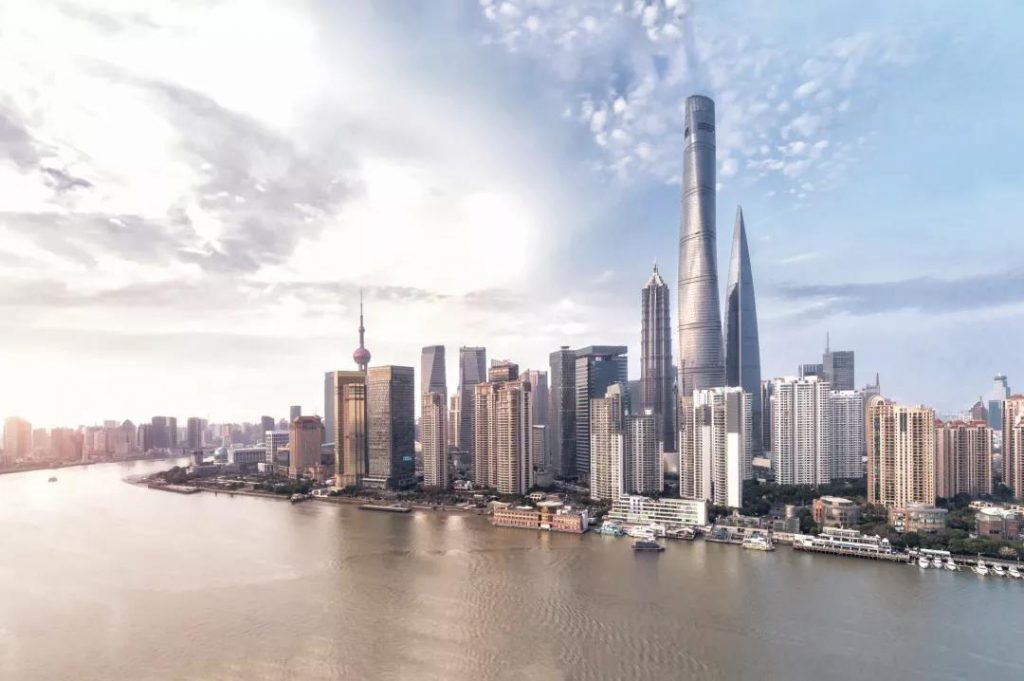
By Edward Tse
2021-8-24
On August 24, a recent article authored by Dr. Tse was published on Dialogue Review, a leading publication associated with Duke Executive Education, USA.
Few countries demand the attention of global companies’ senior executives quite like China. Its market size, its continued growth and its importance to global supply chains make it hard to ignore. Its GDP growth of 2.3% in 2020 (as reported by the International Monetary Fund, April 2021) indicates a strong post-pandemic recovery – a performance which is all the more remarkable when compared with the negative growth experienced by the rest of the world in 2020. In the first quarter of 2021, China’s GDP grew by a record 18.3% in comparison to the same period the year before.
China has come a long way since the start of its reform and ‘opening up’ policies some four decades ago; in fact, its GDP has grown over 200 times across this period. It is set to overtake the US as the largest economy in the world before the end of this decade. Despite this, many people over the years have cast doubts on whether China’s growth is sustainable. Perhaps the most quoted narrative has been that of a 2001 book, The Coming Collapse of China, which predicted that China would collapse in the “near future.”
Yet China has delivered continued economic growth without showing any signs of imminent collapse, despite a rather challenging geopolitical environment and a pandemic. Why has this been possible? The answer lies in a three-layered system of economic development which has guided government and enterprise over many years. It’s time for global businesses to truly understand why China works – and to assess how geopolitical developments may shape its future role in the global economy.
China’s development approach
After a rather tumultuous first three decades, the People’s Republic of China (PRC) began its reform under Deng Xiaoping at the end of the 1970s. While retaining key aspects of the state planning system, Deng began to experiment with elements of a market economy to create “capitalism with Chinese characteristics”. This included allowing the return of entrepreneurship, which has become a key component of China’s economy and the most important source of commercially applied innovation. The central government continues to play a significant role in steering the economy and helping the country to develop at a sustainable pace, but China is no longer just a state economy: the private sector has become increasingly significant.
That is especially true in today’s digital economy. For instance, the government has allowed two private companies – Tencent and Alibaba – to create and dominate the country’s online payment system. China’s third-party payment transactions have reached ¥280 trillion (about US$44 trillion), of which over 80% are paid through Alipay and Tenpay. It is an example of the central government’s willingness to coordinate with private businesses to put much-needed innovations to work for the country. Collaboration with private enterprises will continue to be essential as the government prepares to launch its central bank digital currency (CBDC).
Local governments also play an important role in the Chinese system. They often function as a bridge between central government and entrepreneurs: they frequently provide funding for businesses, and select strategic positions commensurate with the directions set by the central government. Many have built their digital and smart infrastructure to support ‘smart cities’ initiatives driven by the central government.
The interaction of central government, local governments and the private sector amounts to a three-layered model for China’s economic development
In addition to this three-layered structure, China has a unique dual economic structure, comprising state-owned enterprises (SOEs) and privately-owned enterprises (POEs). While there are sometimes conflicts between companies from these two sectors, they also co-exist in symbiotic relationships, with SOEs providing public goods, such as infrastructure and environment-improvement measures. A good example is the development of the world’s most extensive high-speed railway network, built from practically nothing, in just over a decade. Such achievements are possible because these enterprises do not evaluate mission-critical infrastructure projects only on narrow economic viability. Both Chinese people and businesses, including foreign companies, benefit from such infrastructure.
We call this system a ‘three-layered duality’. It is an approach which requires constant juggling of various components to make it work. It is experimental by nature and therefore requires a strong degree of overall orchestration, plus shared vision and values from those who participate. As a result, it has an innate ability to self-adjust over time – as seen in the emergence of China’s innovative private sector.
Key achievements
China has developed a strong reputation for innovation. Broadly speaking, there are two strands of innovation. One is technological innovation which is primarily driven by the government. This includes programmes such as space missions (including lunar and Mars probes), deep sea exploration, developments in quantum computing and many others. The other strand is tech-enabled innovation in commercial applications. Prime examples are found in e-commerce, online payment and smart logistics, as well as in the automotive and mobility sectors. Private businesses play a major role in this sort of innovation, often in collaboration with local governments.
The three-layered interplay between central and local governments and both SOEs and POEs is evident in many fields. For instance, with the US government’s sanctions on high-end semiconductor chips hitting Chinese manufacturers, China has launched a major initiative to develop self-sufficiency in high-end chip supplies. The central government, many local governments, and various SOEs and POEs are involved in various ventures aiming at creating breakthroughs.
The Covid-19 response provided another very visible example. During the lockdown of Wuhan city in early 2020, two emergency hospitals were built in as little as ten days. China was able to achieve this because as soon as the central and local governments decided that the hospitals were necessary, a large number of SOEs – together with POEs and even foreign companies – quickly collaborated. The commitment to a common goal and sharing of a vision were key motivators. To simply equate this with a simplistic ‘authoritarian’ narrative does not assign enough credit to all those who participated.
This is sometimes termed a ‘whole-of-nation approach’ – one that can mobilize resources across the entire country against a certain objective and purpose. It is based on a pragmatic balance between a sense of collective responsibility and individualism by all involved. It is a balance that has driven the unprecedented intensity and pace of China’s innovation and development, as well as its resilience. Small wonder, perhaps, that a recent survey carried out by Canada’s York University found an overwhelming 98% of Chinese citizens indicated that their trust in the national government had increased since the pandemic. The notion of the “coming collapse of China” has little chance of materializing any time soon.
Global businesses in China
Global businesses who have operated in China for some time may understand the reasons for the country’s success, although many multinationals are yet to fully grasp the impact of Chinese innovation. Some, though, are beginning to recognize what they can learn from China. One large US client told me their board of directors instructed the China team to think about how to leverage Chinese knowledge to help businesses in other parts of the world. BMW has taken its Munich-based Startup Garage programme to China to gain exposure to innovative new technologies, while Herbert Diess, chairman and chief executive of Volkswagen, said at the 2021 Davos online summit that China was “moving in the right direction” – with it now being easier for foreign multinationals to invest in China than for Chinese businesses to invest in countries such as Germany.
As Diess also noted, there is a strong relationship of dependency: “they are depending on the West, we are depending on China”. Indeed, China’s role in the world is becoming ever more important. Its internally driven development approach is moving the country towards a new era of high-quality growth that will be epitomized by more innovation and greater sustainability. However, the external environment is becoming more complicated – and it doesn’t look like this will get better anytime soon.
Three geopolitical scenarios
In determining their strategic approach to China, global companies must evaluate how the evolution of geopolitics could affect their positions. As a global power, China’s relationship with many parts of the world will be critical in the years ahead – but its most important geopolitical relationship is likely to remain that with the US.
We believe there are three potential scenarios related to geopolitics and macroeconomics which will affect global businesses, especially US businesses. The first is ‘regionalized isolation’. In this scenario, Chinese companies will be forced out of the US market, with the Chinese government retaliating by virtually blocking US investment in China. The Chinese tech industry becomes self-sufficient and there is a widespread economic decoupling, with Chinese consumers becoming increasingly hostile towards US brands, shifting instead to local products.
The second scenario is ‘one world, two systems’. The US and China will remain geopolitical rivals with occasional flare-ups on specific issues, but will find agreement on common interests. Intense competition in high-tech areas will continue, though stakeholders will learn to solve disputes through dialogue. Export controls and other policy measures, as well as differences in the sophistication of digital infrastructure, will see China and the US evolve into two distinct tech systems. China will expand market access to foreign firms, but with stringent data and security policies. As intelligence and connectivity become increasingly embedded in Chinese society, consumers will gravitate towards brands that can give them the desired digital experiences, tailored to local tastes, regardless of origin.
The third scenario is one of ‘co-opetition’. The US and China remain geopolitical rivals while collaborating in certain areas of global governance. They both compete and collaborate in high-tech areas. As it grows, China will increase market access for foreign players, while exercising data sovereignty based on recognized principles of global data governance. Again, consumers seek out the brands that can tailor experiences to local tastes, irrespective of origin. In this scenario, companies’ products, services and business models have a better chance of transcending national borders – perhaps with the exception of core technology concerns.
We don’t believe a complete decoupling is likely or even possible. The ‘one world, two systems’ scenario will probably manifest under some specific conditions, while the third scenario of ‘co-opetition’ is probably more likely over the medium term – perhaps with more competition initially, moving towards greater collaboration over time.
Engaging with China
Today, a global company’s China strategy is largely dependent on which of these geopolitical and macroeconomic scenarios it expects to pan out. China’s importance to global companies’ finances and competitive positioning will become more critical going forward, despite the uncertain US-China relationship.
However the geopolitical context develops, China will continue to generate much of its own economic momentum. Its unique and still-evolving three-layered duality development framework – the whole-of-nation approach – will provide it with significant resilience. The country should be able to continue to make major progress.
Making the right bets now on how the world will look in the coming years, and what to do in China, will define the long-term competitiveness of many companies around the world – perhaps even their survival.
灼见名家 | 谢祖墀:如何通过整顿科技公司为未来增长铺路

文 | 谢祖墀
2021-8-25
本文是高风咨询CEO谢祖墀博士撰写的文章,此文于2021年8月25日发表在香港《灼见名家》网站。原文英文版于2021年8月20日刊登于《南华早报》,此为中译本。
近日,中国政府展开了一系列针对科技行业的监管措施,引发各界担忧。从叫停蚂蚁金服IPO到整顿课外教培行业,不少人开始怀疑这些举措是否意味着政府对私营企业态度的突然转变。
监管收紧 因由各异
在过去十几年间,中国企业家频频利用移动互联网创建新的商业模式。在电子商务、「新零售」、移动出行、外卖等领域涌现了不少高价值的公司。
尽管这些对科技公司的监管收紧得很突然,其背后的原因各不相同。蚂蚁集团上市搁浅是因为其商业模式所涉及到的财务杠杆过高,可能引起社会风险;阿里巴巴和美团因坚持商家「二选一」而遭到反垄断处罚;滴滴出行于6月30日在纽约证券交易所上市,但因其并未完全遵守中国对数据安全的监管要求,被责令整改;在美团的个案,为送货人员提供基本福利是一项员工福利措施;整顿校外辅导机构则是出于担心愈发高昂的教育成本,将给新三胎政策和小孩成长带来的负面影响。
许多这些措施其实在西方国家亦会执行,但中国政府解决这些问题的决心和速度是很明显的。正如我之前讲过,中国正在探索「具有中国特色的现代性道路」(modernity with Chinese characteristics),在思考未来时,中国也在回顾其辉煌的过去。
个人集体平衡 一直不断演变
虽然中国有一套传统思想理念,但同时亦会吸纳对马克思主义、资本主义等外来思想。它坚持社会主义原则,同时也拥抱市场经济所给的活力。在聚焦「中华民族伟大复兴」这个目标时,同时也力争推动构建「人类命运共同体」。
中国的文化既有二元性,又有一统性,指引着中华文明超过1000多年的发展。今天,中国政府在促进集体利益的同时,仍允许个人追求他们适当的经济利益。
持续的实验一直是中国改革开放时代的一大特色,集体主义与个人主义之间的微妙平衡一直在不断演变。在改革初期,中国着力引入更多的资本主义,容许私营企业家进行不同的试验。然而,随着某些形式的极端资本主义的涌现,两者之间的平衡自然需要适当地调整。钟摆开始转向集体利益那方面。
与此同时,科技进步和地缘政治也对中国的国家建设产生了重大影响,使诸如跨境数据安全等问题变得尤为重要。曾有的「红线」正在发生变化,而新的「红线」也在不断被划定或出现。
监管行动 早有警告
最近的监管行动并非空穴来风。习近平主席在2018年的一次讲话中,已经警告过校外辅导的负面影响。他说,一些课外辅导机构「增加了家庭负担」、「违背教育规律」、「扰乱了学校正常教育教学秩序」。此外,他亦表示,教育行业「不能变成逐利的产业」。
在今年7月的中国互联网大会的演讲中,重庆前市长黄奇帆批评了互联网平台的商业模式。他说,他发现了四个主要问题:一、拼命烧钱扩大规模,打败对手取得垄断;二、利用人性的弱点来设计产品,打擦边球,扩大流量,吸引眼球;三、利用网路平台垄断地位,采取不对等的措施,采集客户、采集老百姓的资讯,甚至侵犯隐私;以及四、互联网杀熟。「这种类型的商业模式没有产生资源优化配置,在社会总体价值创造上贡献有限,」黄奇帆说。
中国的「十四五」规划强调了技术创新和技术自给自足的重要,这是美国政府对高端半导体晶片等核心技术的制裁所造成的。政府还提出了「双回圈」经济政策,力争在重视国际贸易的同时,更加重视国内供需。这有赖于中国快速壮大的中产阶级,对更高品质产品和服务需求的不断增长。
改善生态 促进创新
展望未来,除了改善整体生态环境外,能多促进创新的「硬科技」,以及能够满足不断壮大的中产阶级和低收入阶层需求的产品和服务将变得更加重要。集体利益将成为投资决策的关键因素,这就是习近平最近在中央财政委员会的讲话中强调的「共同富裕」的本质。
这些突如其来的剧烈调整,对某些人来说可能是相当痛苦的,但它们将为中国未来的增长奠定基础。与此同时,中国也在重新划定新的「红线」。在新的场景之中,有更多工作要做,这需要大量公司和投资者的加入,其中不少可能透过公私合营进行。
只要选择正确的投资赛道,考虑到新的思路,更多的初创企业和投资者将会从新的焦点中受益。对具有中国特色的现代性道路的探索仍在继续。
SCMP | How China’s Tech Crackdown Lays Foundation
How China’s Tech Crackdown Lays Foundation For Future Growth
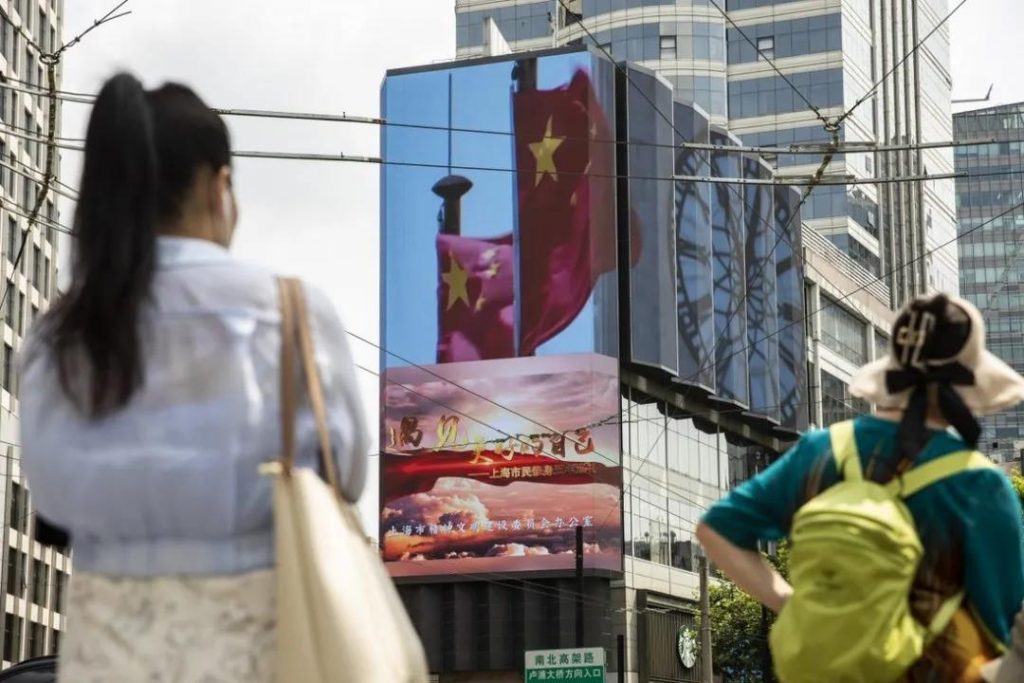
Recent regulatory actions by the Chinese government towards the tech industry have raised concerns for many people. Starting from the postponement of Ant Group’s IPO to the complete overhaul of regulations governing private tutoring and additional regulations on other market leaders, many are wondering whether these steps constitute a sudden change in the government’s attitude towards private enterprise.
In the past decade or so, Chinese entrepreneurs have been quick to leverage the internet to build innovative business models. As a result, e-commerce, “new retail”, mobility services, food delivery and the like have created many highly valued companies.
Though the recent tightening of regulations on tech companies has happened abruptly, the reasons vary. Ant Group’s initial public offering was postponed because of concerns over excessive financial leverage, which implied potential major risks to society. Alibaba and Meituanwere penalised for insisting merchants choose only one platform. Didi Chuxing listed on the New York Stock Exchange on June 30, but did not fully comply with China’s regulatory requirements on data security and is now being told to do so.
For Meituan, the mandate to pay basic benefits to its delivery people is a workers’ welfare measure. And regulations on private tutoring were tightened amid concerns about the increasingly exorbitant costs of children’s education, which could hamper the new, relaxed childbirth policy.
When viewed in the proper context, these measures are not really alarming. Even so, the Chinese government’s determination and speed in addressing these concerns may well be unique.As I wrote earlier, China is in search of “modernity with Chinese characteristics”. When thinking of the future, China also considers its rich past.
China is attached to traditional ways and yet is open to imported ideas such as Marxism and capitalism. It adheres to the principles of socialism, but it also embraces the dynamism of a market economy. Focused on the “great rejuvenation of the Chinese nation”, it also advocates a “shared future for mankind”.
There is an element of duality but also a sense of oneness in Chinese culture, which has shaped Chinese civilisation for more than 1,000 years. Thus, the Chinese government is promoting collective interests while continuing to allow individual pursuits of financial well-being.
Mass experimentation has been a major characteristic of China’s era of reform, with a delicate balance between collectivism and individualism evolving continuously. During the early days of reform, the emphasis was on bringing in more capitalism and allowing private entrepreneurs to experiment. As some forms of extreme capitalism began to emerge, this started to upset the delicate balance.
At the same time, technological advances and geopolitics have influenced China’s nation-building in significant ways, rendering issues such as cross-border data security important. Thus, the pendulum began to swing towards collective interests. While existing “red lines” applicable to corporate and investors are shifting, new ones are also emerging.
The recent regulatory actions did not come out of nowhere. President Xi Jinping had already warned of the negative impact of the overemphasis on out-of-school tutoring in a 2018 speech.
He said some private tutoring institutions had “increased the burden of students and families’ financial burden” and “violated the laws of education”, as well as “disrupted the normal order of education”. In addition, he said the education industry “cannot turn into a profit-driven industry”.
In a speech at the China Internet Conference, former Chongqing mayor Huang Qifan criticised the business models of internet platforms. He said he found four major problems: seeking scale and a monopoly position by “burning money”, designing products that take advantage of human weakness, collecting excessive user data and indulging in unfair practices.
“This type of business model does not produce optimal allocation of resources and has a limited contribution to overall value creation in society,” Huang said.China’s 14th five-year plan has underscored the priority on technological innovations and the need for technological self-sufficiency. One of the drivers for this was the US government’s sanctions on core technologies such as high-end semiconductor chips.
The Chinese government has also put forward a “dual circulation” economic policy that calls for greater emphasis on domestic supply and demand that coexists with international trade. This relies on the continuous increase in demand from China’s fast-growing middle class that desires higher-quality products and services.
Going forward, the “hard tech” that can help the pursuit of innovation, products and services for the growing middle class and lower-income segments of the society, besides bettering the overall environment, will become more prevalent. Along the way, consideration of collective interests will be a key part of investment decisions. That is the essence of “common prosperity”, a concept underscored by Xi in his recent speech at the Central Finance Committee.
These sudden and drastic corrections could be painful for some but they will set the foundation for future growth. In the meantime, the red lines are being repositioned and redefined.
However, there is much more to do and a large range of companies and investors will need to join in. Some of these initiatives are likely to take the form of public-private partnerships.
More start-ups and investors will benefit from the new focus as long as they choose the right path for investment and take into account the new line of thinking. The search for a Chinese version of modernity continues.
灼见名家 | 谢祖墀:探索有中国特色的现代性道路
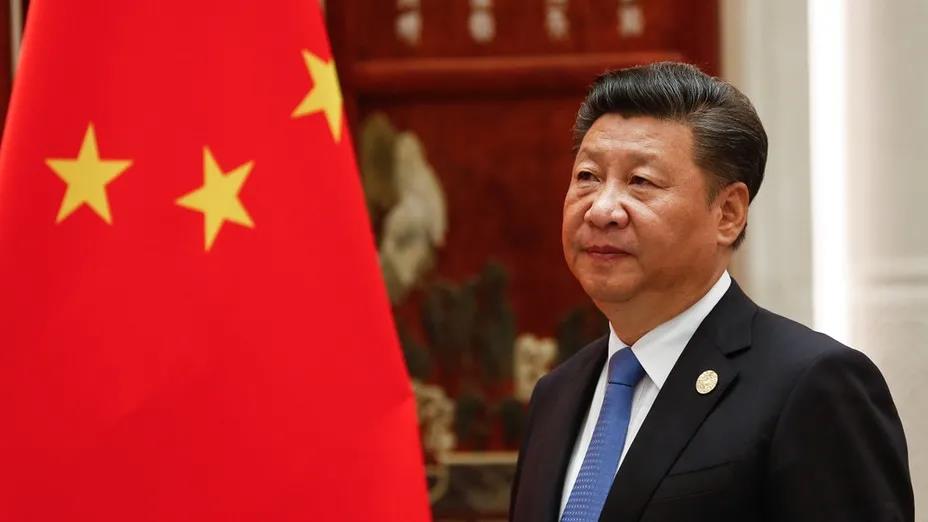
文 | 谢祖墀
2021-8-11
本文是高风咨询CEO谢祖墀博士撰写的文章,此文于2021年8月12日发表在香港《灼见名家》网站。原文英文版于2021年8月1日刊登于《南华早报》网站,此为中译本。
中国正在全面建设具有中国特色的社会主义现代国家。在当前国际环境为背景下,以中国历史经验为借鉴,中国改革开放正在以一种新的范式进行,而这新范式是以创新为主导的。中华民族伟大复兴的目标是建设一个共同富裕、有能力捍卫国家主权和有利于维护世界稳定的现代社会。
中国发展向好GDP或赶超美国
近年来,西方主流的「中国观」发生了很大的转变。它们将中国视为对西方进行所谓的「自由国际秩序」的一种严重的挑战。
在一些激烈的言论中,西方往往将这些挑战视为中国怀有恶意地构成对他们来说的生存威胁,自然另一方亦会产生类似的反应,结果可能成为一个自我应验的预言,从而可能导致发生真正的冲突。为了应对这种竞争,对于西方国家,尤其是美国而言,了解中国的发展目标及其背后潜在驱动力是很重要的。
尽管受到新冠肺炎疫情的影响,2021年上半年中国国内生产总值(GDP)仍然增长了12.7%,两年平均国内生产总值增长率达5.3%。中国的国际贸易和外商直接投资亦在持续增长。今天,中国已经步入「小康社会」,而且消除了绝对贫困。
与此同时,中国人民对其政府的支持率也日益增加。加拿大约克大学最近的一项调查显示,98%接受调查的中国民众表示他们对政府表示信任。
根据日本经济研究中心(Japan Center for Economic Research)的一项最新研究显示,到2028年左右,中国的GDP将超越美国。面对这样的预测,美国(和其他西方国家)将会如何应对一个以中国作为领导者的世界?
政府鼓励万众创新国有民营企业并存
在邓小平的领导下,中国于1970 年代末开启了改革开放的道路。在保留其国有经济主要特点的同时,邓小平开始尝试融入市场经济的一些要素,其中包括让民营企业的出现。40多年后民营企业和他们代表的企业家精神在今天已经成为中国经济增长的重要组成部分。
沿着计划经济的渊源,中央政府继续引导着中国经济的发展。2014年期间,中国企业家凭借在当时已经积累了十多年推动创新的成功经验,在落实当时中央政府提出的鼓励大众创业、万众创新的政策方面发挥了关键作用。地方政府则在中央政府与企业家们之间扮演着桥梁角色。不少地方政府往往不只遵循中央政府制定的战略,并同时为企业提供资金和其他方面的支持。
此外,在二元经济结构中,国有企业和民营企业一并存在。尽管二者在同一个领域竞争时往往会产生矛盾和冲突,但两者也存在共生的关系。国有企业提供例如基础设施在内的公共产品和服务。最好的案例莫过于中国高速铁路的发展,其覆盖范围现在已经是世界之最。国有企业不会根据以狭隘定义的经济效益来评估公司使命和业绩,而是为了更广泛地提高人们生活的便利性与效率。在中国的人和企业,包括外资企业,都从这种模式中受益。
有人称之为「举国体制」,表示可以为特定目的调动全国资源。这需要所有参与者在集体责任和个人目标之间保持适当的平衡。当国家在推动集体目标时(例如通过国有企业为公民和企业提供必要的公共产品),国家亦允许甚至是鼓励企业家们在遵守国家制定的规则和秩序时获取个人适当的利益。
中华文化包容特点推动中国现代发展
习近平主席在7月1日庆祝中国共产党成立100周年的讲话中,曾9次提到「以史为鉴,开创未来」。他亦提及,「坚持把马克思主义基本原理同中国具体实际相结合、同中华优秀传统文化相结合」。这是象征着中国如何探索属于自己的现代性的重要观点。在此基础上,「举国体制」发挥着重要的作用。
在展望未来的时候,中国也会回望它丰富的历史文化。在秉承传统理念的同时,中国在对马克思主义等外来思想以及合理程度的资本主义也能包容进来。中国奉行社会主义原则,但同时接纳了市场经济的活力。贯彻以「中华民族伟大复兴」为主要理念,但同时亦倡导「人类命运共同体」的价值观。
对「阴阳」二元思想长久以来的信仰,对外来思想例如佛教的吸收,与儒家、道家和墨家等多股中国传统思想融合在一起,加上新加坡国立大学的王赓武教授所提的中华文化中的「一体」感,这种巨大的包容性,自从一千多年前就塑造着中华文化的发展。
这些理念正在推动今天的中国积极地探索适合自己的现代性,同时在这一探索的过程中解决诸多方面的问题。
在这一背景中,中国将继续以包容的方式向前发展,在过程中伴随着进行不同方式的试验,并在社会、经济和政治上取得进展。
中华民族将继续在科技领域和经济发展中探索和吸收更多的新思想。伴随着这些变化,中国的价值观和软实力在世界其他地方将会被更多的了解和接受。
西方决策者和精英们需要从自身利益出发,研究这些现象、历史背景和其对未来的影响。
灼见名家 | 谢祖墀:民办教育法规改革是中国整体战略的一部分
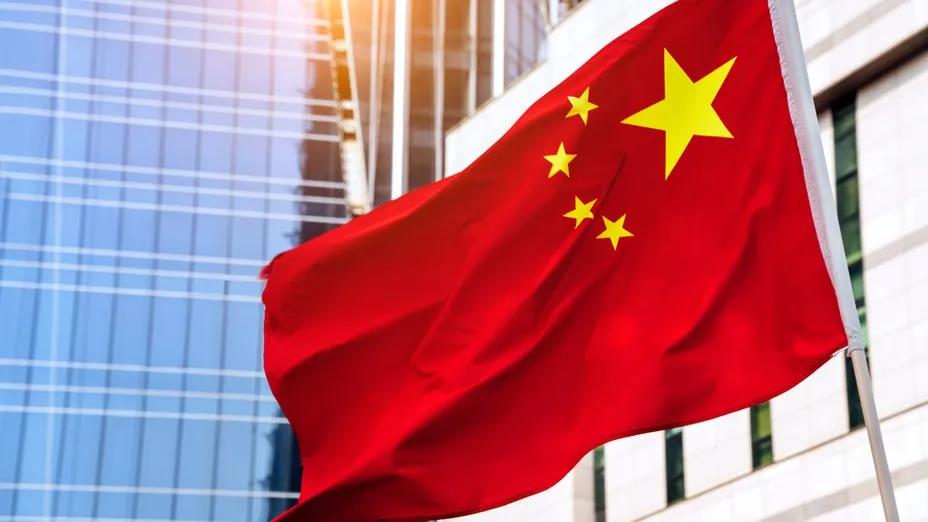
文 | 谢祖墀
2021-8-4
本文是高风咨询CEO谢祖墀博士撰写的文章,此文于2021年8月4日发表在香港《灼见名家》网站。原文英文版于2021年7月30日刊登于中国环球电视网(CGTN)网站,此为中译本。
中国政府最近对民办教育部门的全面改革令许多人感到意外。7月24日,中国政府公布了「双减负」政策,强调了减轻家庭作业负担和课余补习时间。
双减负政策终上台中国教育股市下跌
新法规禁止民办教育机构在课余时间提供核心课程的辅导来获益,同时禁止民办教育机构参与融资甚至上市。
除此之外,因为愈来愈多的儿童被迫在很小的时候就开始为考试进行补习,法规禁止相关机构为6 岁以下儿童开设核心科目的在线或线下课程。
新规公布之后的几天,在美股、A股和港股上市的所有中国民办教育企业股价均出现不同程度的下跌。中国教育行业指数在7月26日下跌高达14%。当天,在港股上市的新东方与思考乐分别下跌40.6%和28.5%,在美股上市的高途和好未来同时下跌了约50%。
采取多项重要措施深远意义值得推敲
对教育行业的改革是中国政府继滴滴事件后的一个重大举措。滴滴出行作为内地领先的汽车出行服务公司最近在纽交所上市,然而却因为涉及数据安全的问题受到中国监管机构的审查。
几乎是在同一时间,监管机构出于反垄断的考虑,禁止了国内两家领先游戏公司的并购提议,其中一家是互联网巨头腾讯的子公司。食品外卖应用美团也被要求为公司外卖送货人员缴纳社保。
此前,中国监管机构因为蚂蚁集团商业模式的问题而阻止了蚂蚁集团的上市,同时阿里巴巴、美团和零售商苏宁均因反竞争行为被罚款。
此外,中国政府还采取了一系列其他措施。这些措施包括放宽户口、消除贫困、放宽生育限制政策,以及进一步开放外国公司进入中国市场的准入条件,特别是开放金融服务业等领域的准入。
中国监管禁止校外培训的这一举措是减轻学生负担的关键一步,这一举措同时也将降低中国孩子的抚养成本很多。中国夫妻不愿意生育更多孩子的其中一个原因是抚养孩子的成本过高。随着时间的推移,这也导致了中国人口结构的倾斜与恶化。
这些政策措施的真正含义是什么?外国和本地投资者以及其他相关人士应该如何解读这些政策变化?这一系列的政策变化是例外事件还是代表某些更加重要的事情?
多方面全方位发展以史为鉴开创未来
除了上述一系列重大政策以外,中国政府还公布了「十四五」规划,其中科技创新是重点关注的领域。虽然在过去十多年里,科技创新也一直是中国发展的重中之重,但美国政府对中国在核心技术的制裁加速了中国对科技创新的需求。
最重要的是,中美贸易战和新冠肺炎疫情的爆发使得中国在应对这些挑战时需要做出重大的决策,中国政府也从这些经验中增强了对自身治理的信心。
这些举措都是中国探索中国特色的现代性(modernity with Chinese characteristics)的过程中所进行的。习近平主席在7月1日庆祝中国共产党成立一百周年的讲话上曾9次提到「以史为鉴,开创未来」,这是中国如何探索属于自己的现代性的缩影。在此基础上,「举国体制」发挥着重要的作用。
在展望未来的同时,中国也会回望它丰富的历史文化。中国在秉承传统理念的同时,对马克思主义等外来思想以及合理程度的资本主义也能包容。中国奉行社会主义原则,但同时拥抱市场经济的活力。以「中华民族伟大复兴」为主要理念,但同时亦倡导「人类命运共同体」的价值观。
对「阴阳」二元思想长久以来的信仰,对外来思想例如佛教的吸收,与儒家、道家和墨家等多股中国传统思想融合在一起,创造了中华文化中的「一体」感,这种包容性,自从1000多年前就塑造着中华文化的发展。
在这一背景中,中国将继续以包容的方式向前发展,在过程中伴随着进行各式各样的试验,并在社会、经济和政治上实现增长。
在改善中国人民福祉和促进全世界福祉方面,中国的角色正在变得日益重要,很大程度上归功于中国领导人在重要议题上采取了果断的举措。
政府促进集体利益奠定未来增长基础
在这次民办教育事件中,当然受影响的公司的投资者不会喜欢这些政策举措,但作为受益者的中国民众总体上持支持态度。在寻求其所设想的现代性的过程中,中国政府正努力促进集体利益,同时允许个人继续追求经济富足。换句话说,这是对「共同富裕」的追求。
它的核心是一种以降低人民生活成本为目的的体制化举措,其中包括降低生育、抚养子女、教育和住房等在内的费用。
这些措施将为未来的增长奠定更坚实的基础。展望未来,机遇将来自硬科技、制造业、生命科学、新能源、可持续性、农业等领域。
这些领域将涌现大量的初创企业,许多投资者将从中受益,选择正确的投资赛道将是成功的关键。从投资的角度来看,这种短期的动荡将重新定义长期增长的基础。
随着中国继续探索具有中国特色的现代化道路,世界其他国家也将愈来愈多地感受到中国的影响力。同时人们也需要加深对中国做法的理解,以及它将如何影响全世界。
CGTN | China’s Overhaul of Regulations
China’s Overhaul of Regulations in Private Education Part of Strategy
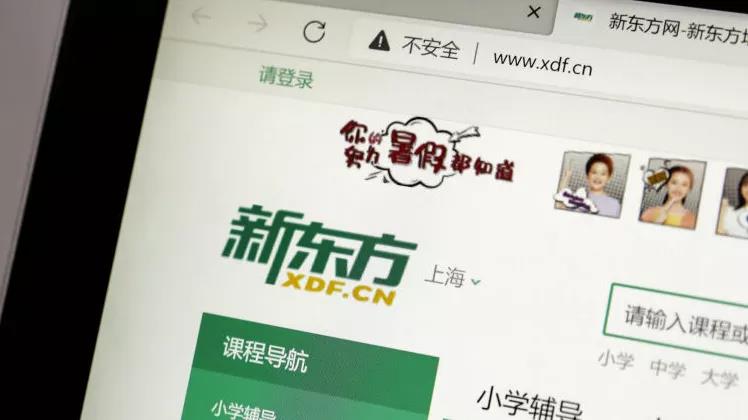
By Edward Tse
2021-7-30
A recent article authored by Dr. Tse was published by CGTN on July 30, 2021.
Editor’s note: Edward Tse is the founder and CEO of Gao Feng Advisory Company, a global strategy and management consulting firm with roots in China. The article reflects the author’s opinions and not necessarily the views of CGTN.
The recent overhaul of the regulations governing private education sector by the Chinese government has come as a surprise to many. Under the “Double Reduction” policy announced on July 24, the burden of homework and after-school excessive study hours is to be reduced.
The new regulations prohibit private education firms from offering for-profit tutoring in core school subjects on recess time. Private education firms are also not allowed to raise capital and get listed.
Online or in-person classes in core subjects to children under the age of six is also prohibited because children are increasingly pushed to start cramming for exams at a very young age.
After announcement of the new regulations, share prices of all Chinese private education companies fell within a matter of days, listed in the U.S., Chinese mainland and the Hong Kong Special Administrative Region.
China’s education industry sub-index dropped as much as 14 percent on July 26. Hong Kong-listed education companies, including New Oriental Education and Technology and Scholar Education Group fell by 40.6 percent and 28.5 percent respectively, along with the U.S.-listed companies Gaotu Techedu and TAL Education Group, both of which plunged by about 50 percent at the end of the day.
The new regulations for the education sector came soon after Chinese regulators took major actions scrutinizing Didi Chuxing, the leading ride hailing company which had recently listed in New York City for data security issues.
At around the same time, regulators banned the proposed merger between two leading games companies, one of which is owned by internet giant Tencent, because of anti-monopoly concerns. Food delivery app Meituan has been asked to pay the required benefits to its delivery people.
Earlier, Chinese regulators also put a stop to Ant Group’s IPO due to concerns on its business model, while Alibaba, Meituan and retailer Suning were all fined for anti-competition behavior.
In addition, the Chinese government has taken a number of other steps along the way. These cover areas such as relaxation of the hukou system (a household registration system), eradication of poverty, easing of child birth restriction policy, and increasing access for foreign companies’ participation in the Chinese market especially for the financial services sector.
The overhaul of the private education sector is believed to be a key step towards reducing the workload for students and also a way to reduce the costs of bringing up children in China.
One key reason why Chinese couples are reluctant to have more children is the exorbitant costs of bringing up children. This in turn has contributed to the skew of China’s demographic profile over time.
So what do these policy measures really mean? And how should investors, both foreign and local, and other observers interpret these policy adjustments? Is this series of policy changes an outlier event or does it indicate something more significant?
On top of these significant policy measures, the Chinese government has also announced its 14th Five-Year Plan in which technological innovation is the key area of focus. While technological innovation has been at the core of China’s development for the last decade and more, the need for it has been exacerbated by the U.S. government’s sanctions on transfer of core technology to China.
On top, the U.S.-China trade war and pandemic outbreak required China to take decisive decisions in addressing these challenges. China’s experience henceforth has increased the confidence in its own governance.
These are being undertaken while China searches for its own brand of modernity. In the centenary speech on July 1, Chinese President Xi Jinping mentioned nine times that ” … put conscious effort into learning from history, to create a bright future.” This epitomizes how China is searching for its own brand of modernity for which the “whole nation system” is deployed.
When thinking of the future, China often reflects at its rich past. In parallel to respecting and following traditional ways, China is open to imported ideas like Marxism as well as a reasonable degree of capitalism.
It adheres to the principles of socialism, but also embraces the dynamism of a market economy. Focusing on the “great rejuvenation of the Chinese nation,” its leader also advocates “a community with a shared future for humankind.”
The absorption of foreign thoughts into multiple strands of traditional Chinese thinking such as Buddhism, Confucianism, the long held belief of “yin and yang” into taoism, combined with the “oneness” in Chinese culture, has shaped Chinese civilization for thousands of years. The modern China has somehow created an approach that effectively addresses the multiple dimensions encountered in the search for its own brand of modernity.
This context reassures that China will continue to navigate its way forward in an inclusive manner and grow socially, economically and politically, frequently experimenting with its unique approaches.
In the context of improving the well-being of Chinese people and playing a larger role in advancing overall well-being to the entire world, China’s leaders take decisive actions on issues that matter.
While investors of the affected companies may not like these moves, the general public in China, as the beneficiary, are in general supportive. In the search for its envisioned modernity, the Chinese government is trying to promote collective interests while continuing to allow individual’s pursuit of financial well-being. The Chinese is calling this a pursuit of “common prosperity.”
At this heart of it is an institutional approach to reduction of costs of living for the country’s people, including those of giving birth, nurturing children, education and housing.
These corrective measures are expected to put future growth on a sound footing. Going forward, opportunities will come from areas such as hard tech, manufacturing, life sciences, new energy, environmental sustainability agriculture and the like.
Moreover, a large number of start-ups will emerge in these areas and many investors will benefit. But going forward, picking the right lane to invest will be the key. From the investment standpoint, this short-term turbulence redefines the foundation for longer term growth.
As China continues to search for its own brand of modernity with Chinese characteristics, the rest of the world will increasingly get to know of the impact of what China does. People need to deepening the understanding of what China’s approach is, and how it works for the world.
SCMP | Understanding China’s Goals
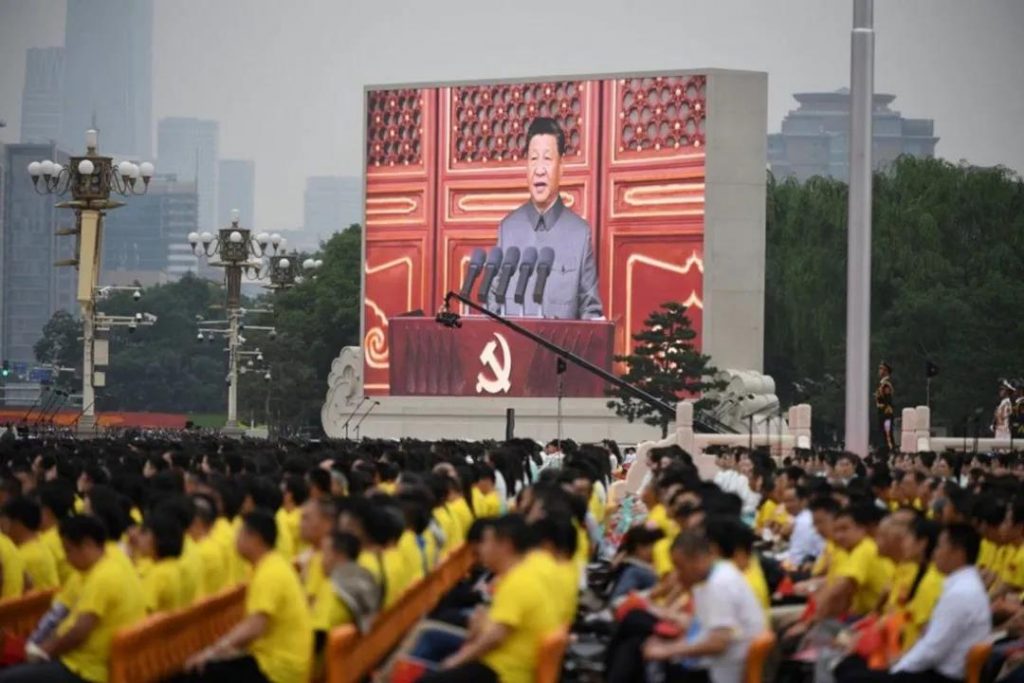
By Edward Tse
2021-8-1
Originally published on South China Morning Post with title “What the West Needs to Know About Where Modern China is Headed” on August 1, 2021. All rights reserved.
China is building a modern socialist state with Chinese characteristics. The paradigm shift of reform and opening is now spearheaded by innovation, while historical Chinese experience is applied in the context of the current global environment.
In rejuvenating the Chinese nation, the goal is to become a modern society of common prosperity, capable of defending national sovereignty and helping to ensure global stability.
In recent years, the prevailing Western view of China has undergone a fundamental shift. China is increasingly seen as a challenge to what the West terms the “liberal international order”.
In the heat of rhetoric, this challenge is often cast as an existential threat posed by China with malign intent, which calls for an equally hostile response. This scenario has the potential to be a self-fulfilling prophecy, leading to possible real conflict. To manage the rivalry, it is important for the West, especially the United States, to understand the goals of China and their underlying drivers.
China’s gross domestic product grew 12.7 per cent in the first half of 2021, and average GDP growth for the past two years was 5.3 per cent, despite the pandemic.
China’s international trade and foreign direct investment continue to increase and it is now a “moderately affluent society”, having eradicated extreme poverty.
In parallel, the Chinese people’s support for their government is very high. An overwhelming 98 per cent of Chinese citizens say they trust the national government, according to a recent survey by York University of Canada.
According to a new study by the Japan Centre for Economic Research, China’s economy will exceed that of the US by around 2028. How would the US (and the rest of the West) deal with a world in which China is the leading economic power?
The People’s Republic of China began its reform and opening up under Deng Xiaoping at the end of the 1970s. While retaining the key features of the state planning system, Deng began to experiment with elements of a market economy, including bringing back entrepreneurship.
Entrepreneurship is now a key component of economic growth. China is no longer just a state economy: the private sector too has become very significant.
The central government continues to steer the economy and maintain a sustainable pace of development. Building on more than a decade of innovation, Chinese entrepreneurs played a major role in bringing to fruition the central government’s 2014 policy on encouraging mass entrepreneurship and innovation.
Local governments often act as bridges between the central government and entrepreneurs. Leading local governments frequently provide funding for businesses and follow strategies that support directives set by the central government.
In addition, in China’s dual economic structure, state-owned enterprises and privately-owned enterprises coexist and have a rather symbiotic relationship, despite occasional conflict.
This is because SOEs provide public goods and services like infrastructure, the best example of which is the high-speed rail network that is now the world’s most extensive. SOEs do not evaluate infrastructure projects only for economic viability but also for enhancement of public utilities. Chinese people and businesses, as well as foreign companies, benefit from this approach.
Some call this a “whole-of-nation approach”, which allows the mobilisation of resources from across the country for specific purposes. A pragmatic balance is maintained between collective responsibility and individual objectives. While the state drives the sense of collective purpose through SOEs, entrepreneurs are allowed and in fact encouraged to succeed against a certain state-driven rules-based order.
In a speech marking the centenary of the Communist Party on July 1, President Xi Jinping mentioned the importance of “learning from history to create a bright future”. He also said: “We must continue to adapt the basic tenets of Marxism to China’s specific realities and its fine traditional culture.”
This epitomises how China is searching for its own brand of modernity, while keeping the “whole-of-nation approach”.
When thinking of the future, China surveys its rich past also. China is attached to traditional ways, yet open to imported ideas such as Marxism and, to a reasonable degree, capitalism. It adheres to the principles of socialism, but also embraces the dynamism of a market economy.
Focused on the “great rejuvenation of the Chinese nation”, it also advocates a “shared future for mankind”.
There is a concept of duality (yin and yang) but also a sense of oneness in Chinese culture, which has not only absorbed foreign schools of thought like Buddhism, but also merged multiple strands of Chinese thinking such as Confucianism, Daoism and Mohism rather seamlessly; this has shaped Chinese civilisation for more a thousand years, according to Professor Wang Gungwu of the National University of Singapore.
Thus, modern China will be able to search for its own brand of modernity, while addressing the many dimensions of this quest.
This context ensures that China can continue to navigate the future in an inclusive manner and grow socially, economically and politically, with various types of experiments along the way.
The Chinese will continue to discover and adopt more novel ideas in science and technology, as well as in economic development. Along with these changes, China’s value system and soft power will also gain increasing recognition.
Western policymakers and elites need to study these phenomena, the historical context and the future implications in their own interest.
长江商学院 | 谢祖墀:大变局时代的企业生存战略专访

文 | 谢祖墀
受访于2021年7月15日
全球正处在“百年未有之大变局”中,无论是政治、社会或商业都处在变革的影响中。在这样的情况之下,许多中国企业家和企业,无论是外企还是国企,包括民营企业,甚至于不少地方政府负责人,都或多或少有自己的看法与困惑。本次,高风咨询创始人兼CEO谢祖墀博士受邀参加长江商学院线上专访,与大家共同探讨一系列的议题。
谢博士:我非常荣幸能够在这边跟各位在线上讨论,在大变局的时代,作为企业应该怎么去思考战略等诸多问题。现在是百年未见的大变局,无论在政治方面,在社会方面,包括在商业方面其实都是一样的充满不确定性。我想综合我个人最近的一些观察,在咨询工作里面跟其他客户合作的时候自己想到的一些想法,以及我去年跟我另外一个很好的合伙人黄昱,出版的一本新书《竞争新边界》里所主要探讨的问题——在这样的大时代里面,企业业务的边界,应该怎么去调整,或者怎么思考边界的问题——在这里与大家分享一下。
问:首先想请教您认为有哪些因素构成不确定性?
谢博士:应该说好多问题都涉及这个议题。最普遍大家考虑的会关心的问题是地缘政治,没有一个行业可以说我是不会被地缘政治所影响。我几十年前开始做咨询的时候,基本上地缘政治是除了某一些行业,例如能源石油之类的之外 ,不会怎么参与到商业战略里面的考虑点。但今天的大家都知道这个是不能避免的问题。
当然除了地缘政治之外,还有很多包括一些全球的问题,比如新冠肺炎疫情、气候变化等等,这些都是构成不确定性的一些主要因素。再比如我们回顾一下过去几年,特别是从特朗普当政时期。虽然后来有些问题也有采取一些比较好的方式来解决,但是仍有很多问题还没有解决,包括最近美国众议院的通过了《创新与竞争法》,在某个程度是针对中国的。然后还有大连海产事件、新疆棉等事件等。
问:从上述提到的这些事件中,您认为我们可以取得什么启示?
谢博士:第一,除了之前在一些比较敏感的行业里面的企业,大部分的企业,包括互联网企业,其实对于所谓国家安全问题,都不怎么考虑到位。事实上,国家安全是一把达摩克利斯之剑,实际上它是悬在我们或者企业的头上面的,是你喜不喜欢都存在的。
第二,在现在这个数据、科技发展越来越蓬勃的时代,其实好多企业已经意识到数据的主权或者数据的安全已经是生活的一部分,不能分割他们,特别是现在地缘政治关系比较紧张的时候。任何一家公司,现在都是在收集数据的,只不过是多还是少而已。那么收集了这个数据之后,怎么去处理数据安全、数据主权,特别是跨国境的一些问题应该怎么处理,值得思考。
第三,就是我们看TikTok事件,即字节跳动一早就已经创造的另外一个品牌,在国内我们称为抖音。那么在国外,他需要做配套,就是说透过建立一个国际的品牌,可以解决海外的一些问题,去符合国外的规定。但是TikTok这个事情告诉我们,其实往往合规是不够的。很多制裁或者是对付企业的原因,不是合不合规的问题,而是说是来自于其他的因素,特别是地缘政治。地缘政治是已经牵涉到好像各行各业里面,且是一个非常复杂的问题。我们作为中国企业看问题的时候,一定要具备全球的视野。
问:在这样大变局之中,您认为全球化的发展是如何演变的?而中美关系又是如何随之发展的?
谢博士:其实我们是站在进入一个新的全球化的时代。我们大家也知道全球化是大约在30年前开始的,我就把它称之为全球化1.0的开始。这个时期其实就很简单,是全球进行分工。当时中国的崛起、印度的崛起,让西方的国家,特别是美国认为:“好,我们把不想做的事情交给你们,制造业跑到中国去,IT就到印度去,你们比较便宜,我们去做我们高端的事情。我们的工资相对会高一点,你们会低一点,给你们赚一点钱就好了。”这是简单来讲全球1.0 就是它背后的分工,一直持续到现在。
经历过这几十年的发展,这个世界已经有很大的改变,也就是说,中国不单只是一个产品输出国,同时也成为重要的需求端。这也就是说大家看得到全球化2.0的出现,它不是人为的出现,其实是一个自然的发展 。因为经历过几十年之后,中国的消费者能力已经大幅提高,已经完完全全能够形成一个自己的供需闭环,同时还有足够的能力跟国外进行相关的贸易。
而过去的全球化1.0中,美国既是主导者,也是最大受益者之一,因此在迈向全球化2.0的过程之中,客观变化的发生将赋予中美各方改变彼此关系的机遇。
问:您认为中美关系未来会出现怎样的可能的场景?
谢博士:在驱动全球大变局的因素中,首当其冲的是政策因素,特别是中国政府的政策;第二是科技的发展;第三是需求端需求模式的改变。美国和中国的关系未来可能有三个场景:“区域隔离”、“ 竞争与合作”和“一个世界,两个系统”。美国和中国仍然是地缘政治上的竞争对手,偶发冲突;中国加大对外资企业的市场准入;以及两国各自施行严格的数据主权和治理规则。
正如之前所提,过去几十年,除了某些特殊的行业,地缘政治并不会主动的纳入商业战略的规划中。现如今,地缘政治则深入地影响每个行业。它为企业的发展设置了一些红线,成为企业战略思考当中的约束因素,并一定程度上限制企业的发展。
由于地缘政治的因素,企业家需要考虑,哪些情况之下,企业的经营战略可以完全由自己来决定;哪些情况之下,企业家必须相应的调整战略。
问:除了中国企业, 跨国企业在中国的发展经历了怎样的变化?
谢博士:跨国企业其实也经历了很多的变化。他们一部分已经不仅仅把中国看待成为一个市场,或者只是来这里赚钱而已。越来越多的跨国企业把中国变成一种学习的地方,这是十分值得肯定的。可能很多人会很惊讶,因为我认为我们中国人还是普遍有一种自我批评的眼光。但是,现在的确更多是跨国企业来中国学习经验,然后还有不少的企业在思考如何能够把在中国学到的经验带到世界的其他的地方。
我觉得这是一个很大的转折点。以前,基本上跨国公司来中国就是把他们在西方的一些商业模式复制粘贴到中国,但是这种老的方式慢慢地被颠覆。逐渐的,对很多跨国公司来讲,中国已经作为他们创新最重要的中心之一了。我个人的看法是,在我们面临着百年未有的大变局的时候,其实我们面临的是整个全球的发展,而中国在全球发展中扮演的角色将越来越重要。
问:上述的变化对于企业战略层面意味着什么?
谢博士:在复杂的环境变化中,对于战略方面的思考也会有一些基本的改变。第一,很多问题都是我们称之为非连续性的,它有种“断层”的发展;第二所有问题都是多维的变化的;第三就是好多问题都是全球化的。 而且很多因素,类似地缘政治,也会变成战略思考的一些约束因素。
其实有一个思考的框架将有助于大家更好地分析和思考。去年10月份,我和黄昱出版了新书——《竞争新边界》,主要就是探讨企业如何定义边界的问题、企业的能力核心竞争力等等。
除此之外,我觉得写的最好的一本书叫做《Competing on the Edge》(《边缘上竞争》),这是斯坦福大学博士研究生肖纳·布朗(Shona Brown)和她的博士论文导师凯瑟琳·艾森哈特(Kathleen Eisenhardt)合作撰写的。在这本书问世之前,企业战略理论都是以静态为主的,而这本书提出了一个在当时来说全新的战略管理理论。它主要说明了企业所处的环境在有序(Structure)和混沌(Chaos)之间徘徊,战略最基本的真谛就是在有序和混沌之间不断的动态平衡。她们在书内提出了一些非常重要的观点。她们认为未来企业经营环境的主要特征是高速变化和不可预测性,因此,战略管理最重要的是对变革的管理。
问:是否能帮助我们深入浅出地理解一下您在书中提及的“战略的第三条路”?
谢博士:几十年前,西方理论认为企业的战略有两条路。第一条路是集团式多元化,由做大到做强。第二条路是通过核心竞争力,聚焦做企业最有优势的事,因此企业只在自我定义的约束边界里面进行竞争。
现今,地缘政治带来的红线与约束,以及全球化2.0的出现,将我们带入一个充满非连续性、不确定性的时代。这个时代当中成功的企业更倾向于第三条路:发现机会后立刻抓住机会,在跳跃至新业务的过程中弥补完善自己的能力。
因此,我们说在多元化和聚焦核心竞争力的边界之外,企业的发展应该是一个跳跃性的发展。当有新的机会出现的时候,即便企业还没有足够的能力在新的领域里充分地竞争,但是当机会出现了,企业首先要选择先跳过去。跳过去之后,再弥补原来能力上的差距。
“适时、连续跳跃”并不代表企业不需要将业务做得极致。在今天竞争激烈的状态下,不专注、不做到极致是很难成功的。需要强调的是,“战略第二条路”中的核心竞争力概念,大部分人对它的演绎是“边界的固定”,而不是“专注”的意思。
对企业业务的边界是否固定划分是其与“战略第三条路”最大的区别,但无论企业选择走上哪一条战略道路,在竞争面前,企业要成功,必须要做到专注和极致才行。
阿里巴巴与华为作为两个典型的案例,证明对企业来讲,边界是可以延伸的、动态的,可以扩大,也可以缩小。当企业成功跳跃了,边界就扩大了,如果没有成功跳跃,边界不仅没有扩大,甚至可能会收缩,会减小。
企业不是一开始就决定自己的边界在哪里,企业的边界是在机会与能力之间博弈出来的结果,即边界=机会vs能力。而地缘政治或其它因素,往往是人为地将本来可以自然发展的边界缩小,或者把它引导到另外个方向上去。
问:在大变局的时代里面,从企业战略来讲,企业究竟该怎么思考,战略该怎么走下去?
谢博士:总的来说,组织架构、创新能力、人才建设等企业的基本面依旧是立足之本。其次,在此之上,企业需要有足够的忧患意识和进取心态,在动态的发展过程中同时具备宏观的战略思维以及微观的落地能力,建立更好地对未来预判的能力。领导者的领导力亦要不断提升,引导企业比以往更加具备全球视野。
希望借助我的一些理解,能够帮助大家更好地思考,在这样的大变局里面,企业的战略该如何走下去。
灼见名家 | 谢祖墀:解码中国创新文化

文 | 谢祖墀
2021-7-14
本文是高风咨询CEO谢祖墀博士撰写的文章,此文于2021年7月14日发表在香港《灼见名家》网站。原文英文版于2021年6月30日刊登于《财新全球》网站,此为中译本。
如今,中国强大的创新能力已逐渐被世界所认可,然而仍有许多人不明白中国的创新能力是如何发展出来的。有很大一部分人,尤其是西方国家的人认为,因为中国执行的是所谓的「威权主义」体制,因此从本质上而言,在这种体制之下的中国是不可能创新的。这些质疑的人一直认为创新只可能在所谓「自由」的公司体制中,和政府参与或干预度极低的情况中才能蓬勃发展。
互联网为中国经济添砖加瓦
中国的创新可以概括为两方面:一方面是由政府驱动的技术创新,尤其是在包括太空任务、深海探测、量子计算等多项创新领域的发展;另一方面则是由科技驱动的商业创新,例如:电子商务、社交商务、新零售、大健康、金融科技、自动化和机器人工程、智慧物流、智能驾驶以及移动出行等。而私营企业在商业创新中扮演着举足轻重的角色,他们也通常与地方政府协同合作。
中国的创新能力与企业家精神自改革时代以来取得了长足的发展。上世纪70年代末,中国开始尝试引入市场经济,并放手让企业家探索寻找自己的财富。随着几代创业者的先后涌现,中国的创业浪潮在20世纪末被推向第一次的高点,此时的中国企业家接受了无线互联网,并利用它进行商业创新。通过兼备创新和便利的互联网新技术,在解决中国社会存在的关键痛点同时,又满足了消费者对新产品的新兴需求。
以腾讯、阿里巴巴、华为、大疆、小米、字节跳动、京东和拼多多等大型科技企业为首的诸多中国企业,正在为中国的经济发展添砖加瓦。而如平安保险、吉利汽车、比亚迪等一些较为传统的企业也已经成功转型为创新科技企业。据2020年《胡润全球独角兽排行榜》显示,独角兽企业(估值超过10亿美元的非上市企业)的数量在近年来呈现指数型增长,而中国以227家独角兽公司位列全球第二,仅次于拥有233家独角兽的美国。
民营企业推动商业创新原动力
20世纪70年代末,新中国刚刚渡过首个颇为激荡的30年,在邓小平的领导下,中国开始走上了一条改革之路。在保留中国计划经济体系主要特征的同时,邓小平同志开始不断引入市场经济体制的因素,其中包括民营企业家的回归。
民营企业家如今已经成为中国经济发展的关键因素,也是推动商业性创新最重要的原动力。中国不单单只是国有经济,私营企业也成为其经济组成中不可或缺的一部分。与此同时,中央政府继续制定相关政策,引导国家经济朝着正确的方向发展,从而推动国家的可持续发展。从2000年代中期开始,凭借在创新实践方面积累了十多年的成功经验,中国企业家在推动国务院2014年颁布的「大众创业、万众创新」政策的成功实施起了重要作用。
具体来说,中央政府准许两家私营企业──腾讯和阿里巴巴──创建并主导中国的在线支付系统,这表明中央政府在适当的情况下,会协同私营企业共同提供目前所亟需的创新成果为国家服务。如今,中国第三方支付交易金额已达280万亿元(约44万亿美元),其中超过80%的交易金额来自阿里支付和微信支付平台。中央政府目前也正计划推出中央银行数字货币,而且考虑到目前私营企业在线上支付业务上的主导地位,双方仍会继续开展合作。
而地方政府亦十分关键,他们是中央政府和企业家之间的桥梁。地方政府时常为企业提供资金支援,并做好符合中央政府方针的战略定位。例如许多地方政府建立了数位化、智慧化的基础设施,以回应中央政府发起的智慧城市倡议。
国企民企 互惠共生
除了这种以中央政府、地方政府以及企业组成的三层结构之外,中国经济的独特之处还在于其国有企业和民营企业并行的二元经济结构。国有企业和民营企业虽然有时存在矛盾,但两者又相互依存、互惠共生。
国有企业通过提供如基础设施、环保设施等公共物品,来履行其对人民的部分社会责任。以中国铁路为例,国有企业仅用十几年时间就成功建设了中国高速铁路网,从零开始发展到如今世界规模最大的高铁系统,取得如此成就是因为国有企业不仅仅以狭义的经济效益作为首要考虑因素。如今,人民百姓和包括外资企业在内的企业,都受益于国有企业提供的这些基础设施。
「二元三层」模式的各个组成部分需要进行不断重组和调整才能奏效。这种模式本质上是带着尝试性质的,但其体制和所有相关参与人员都具有很强的整体协同能力,秉承共同的目标和价值观。因此,「二元三层」模式具有一种与生俱来的自我调节能力。
相较早期创业家,现在的中国创业家普遍更为年轻。他们中有许多只有30多岁,有的甚至年纪更小。这些企业家遍布于中国的各行各业,也包括上文提到的诸多领域,但他们大部分的共同点都是将科技作为创新的根源。
中美新冷战 科技必须自给自足
随着人工智慧、物联网、5G、云计算、以及区块链等颠覆性新技术的不断涌现,并在世界领先的数位经济体中获得认可,中国正在迈入科技创新的新时代。在中国的「十四五」规划中,科技创新是一个非常重要的主题,中国致力于实现科技自给自足,尤其在受到美国政府对中国核心技术、产品和零部件的供应制裁的影响下,更将进一步实现科技创新。
自从美国政府宣布对部分中国制造商的高端半导体晶元供应实施制裁以来,中国已启动高端晶元自给自足的重大计划。在此背景下,中央政府、多个地方政府以及各个国有企业和私营企业都参与到了各种旨在取得创新突破的投资活动中。
去年在中国疫情最严重的时候,武汉封城期间,中国仅在短短7到10天的时间内建成了两家新冠肺炎的方舱医院。而中国之所以效率能如此之高,是因为当中央和地方政府决定这些医院是必需的时候,大批国有企业、私营企业甚至外资企业会迅速回应,共赴建设。秉承同一个目标和愿景是中国发展的关键动力。如果简单地将这一奇迹般的壮举仅仅归功于所谓的中国政府的「威权主义」,对那些日夜兼程赶造医院的人和企业来说未免不够尊重和有失公允。
创新已融入中华文化
有人把这种方式称为「举国体制」 ,可以针对一定的目标和目的,在全国范围内调动资源。这种体制是基于所有参与者的集体责任感与个人主义之间的务实平衡感而建立的。虽然国家强调集体的目标感和责任感,并通过国有企业为人民和企业提供必要的公共产品,但企业家源于自身想法而在不违背国家引导的、基于规则的秩序下所获得的成功是获允许和鼓励的。
有些人将这种体制归因于中国的历史文化,这种文化强调一种集体责任感,这种责任感来自广泛而多样(以汉族文化为中心的)的思想谱系,在后来与来自佛教输入思想相互融合后的中华文明中。这种思想与现代中国的目标和治理体系相互结合,以某种方式创造了一种兼顾集体利益和个人追求的包容性文化。
这无疑导致了前所未有的大规模的、充满强度、速度和弹性的创新与发展。创新已成为中华文化的重要组成部分。
亚布力观点 | 华为走上了战略的第三条路
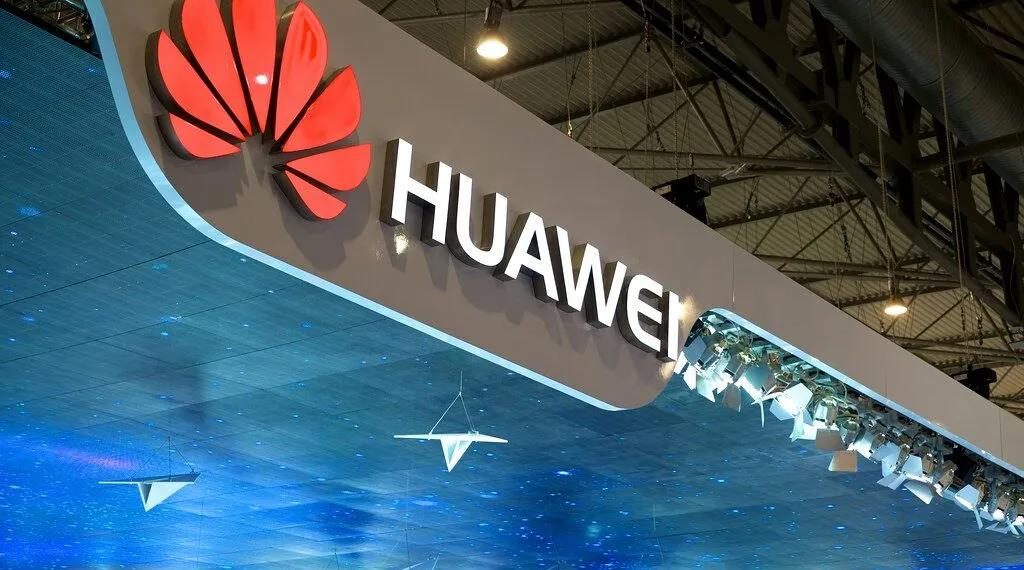
文 | 谢祖墀
2021-7-9
本文是高风咨询CEO谢祖墀博士发表于《亚布力观点》(2021年7月刊)上的文章。在“百年未有的大变局”中,企业家们应该如何应变?在新格局下所衍生的战略第三条路,会给企业家带来参考。
最近华为公司推出了鸿蒙操作系统,得到了各界的广泛关注。该系统的面世,意味着华为将不再依赖于安卓系统。此前在华为内部会议上,创始人任正非就特别强调华为需重视软件开发,因为在该领域有较为稳定的基础,未来的发展方可不受美国限制,华为才能有较大独立自主权,可以” 扎到根、捅破天”。
任正非认为华为要有自己的商业主张和技术主张,利用全球先进的科技力量,在根技术上扩大投资,以开源、开放应对美国的“闭关锁国”,从而巩固中国市场,使得欧洲市场也有了希望。“当华为占领欧洲、亚太和非州后,如果美国标准不与华为融合,华为去不了美国,美国也进不了华为的地盘。”
华为的这一步战略部署代表着什么?
上世纪90 年代初期,中国的企业管理界还是处于早期的发展阶段,企业家们对管理理念和思想还不是非常了解。当时中国企业家普遍有一个疑问:他们的企业究竟应该多元化还是聚焦?当时的咨询公司都是国外来的,他们一直给中国企业灌输一种简单、二元的理念——战略不是多元化就是聚焦,而一般的外来咨询公司都倾向于劝导企业家们聚焦。但在当时,企业家们看到海外许多华人企业,特别是那些家族型企业却是在多元化经营,其中不少企业也非常成功。这样的比较和外来咨询公司的建议,让不少中国企业家甚为失落,不知如何是好。
同时,有一部分企业家们逐渐发现,他们其实还有第三条路。我们称这种战略选项为一种适时、连续的跳跃战略。
当企业创始时,它会选择某种业务,也会建立它所需要的核心竞争力,这是一个机会和能力的组合。但往往在同时,市场会出现新的机会,而这些机会往往是以非线性、S 形状的方式出现。面对这些新机会,企业家要做出判断:在企业未具备新业务需要的核心竞争力的情况下,要不要从现在的业务跳跃到新的机会。许多成功的中国企业都在遵循着“战略第三条路”的原则,进行适时、连续跳跃。阿里巴巴、腾讯、小米、平安、吉利等都就是典型案例。
华为亦是一早踏上了战略的第三条路。华为在发展的初期(1987 年~ 1994 年),从代理香港公司的电信设备,逐渐演变为自主开发产品的集中化战略。从1995 年开始,华为逐渐成为一个能提供全面通信解决方案的提供商和服务商,占据市场龙头地位。
之后,华为借助电信网络和终端的优势,将其业务延伸至包含手机在内的消费电子领域与消费电子芯片领域,并在十年后深耕取得了巨大的成就。
2017 年,华为手机销量过亿,成为国内手机销量第一的厂商。2019 年,华为手机销量超越苹果,成为了世界第二。
随着数字世界来临,华为及时调整企业战略,致力于构建一个万物互联的世界,把自己打造成一个基于云、大数据、AI 等多种技术为基础的平台公司,赋能智慧城市、智能制造、智能能源、智慧出行等多个领域。现在,当传统经济走向算法经济,华为则大力发展软件业务,以期待获得新的竞争优势。
上述战略的各种差异,本质在于如何看待机会和能力之间的对比。更具体来说,企业边界是在机会和可获取能力之间选择、博弈之后得出的结果。2020 年8 月出版的《竞争新边界》一书,由我和黄昱合撰,我们对“战略第三条路:适时、连续跳跃的战略”思考和框架作了详细和具有条理性的介绍。“战略第三条路”在2000 年代初期开始思考,2010 年代初期形成雏形,至2014 年正式提出。
不过,过去几年全球格局特别是地缘政治方面的变化,让上述规律受到了人为干预。地缘政治或其他相关因素为企业战略提供了两个新条件:第一是约束因素,地缘政治可以约束新机会出现,或减少甚至替代原有机会;第二是机会的出现可以是被动(非主动)产生,换句话说,机会是可以被迫出来的,华为就是一个很好的例子。
任正非说:“克劳塞维茨在《战争论》中讲过:‘伟大的将军们,是在茫茫黑暗中,把自己的心拿出来点燃,用微光照亮队伍前行。’什么叫战略?就是能力要与目标匹配。我司历经三十几年的战略假设是:‘依托全球化平台,聚焦一切力量,攻击一个‘城墙口’,实施战略突破。’”
任正非说的,背后就是战略第三条路的思考方式:在约束条件下,凭对新发展大局深邃的预判,寻找新的机会,找到后尽快跳跃和重点执行,建立能力(包括通过全球资源平台组建生态系统),进行成功跳跃。
主导战略第三条路的领导者,一方面永远心怀忧患,时时刻刻在想能不能“活下去”,不会有片刻安逸。另一方面却不断寻找下一个能够或者必须跳越过去的机会。这种能力必须透过深厚的知识、预判能力和全球视野才能有机地产生出来,并能内转化为组织的恒常能力。
在“百年未有的大变局”中,企业家们应该如何应变?在新格局下所衍生的战略第三条路,会给企业家带来参考。
【今日语录】7月8日

需要对「二元三层」模式的各个组成部分进行不断地重组和调整,才能使之奏效。这种模式本质上是试验性的,要求相关参与者具有很强的整体协同能力,秉承共同的目标和价值观。因此,「二元三层」模式具有一种与生俱来的自我调节能力。
灼见名家 | 谢祖墀:背靠中国创新浪潮,大湾区发展潜力巨大

文 | 谢祖墀
2021-7-7
本文是高风咨询CEO谢祖墀博士撰写的文章,此文于2021年7月7日发表在香港《灼见名家》网站。
中国的创新与创业征程,自改革开放以来已取得长足的发展。自上世纪70年代末以来,中国尝试对市场经济要素进行重新配置,企业家精神得以回归。20世纪末期,几代创业者涌现将中国的创业浪潮推向高潮。
中国企业家开始欣然接受无线互联网,利用互联网进行商业创新,以解决中国社会存在的关键痛点问题,并应对中国消费者因技术和创新而产生的新的需求模式。
中国企业家精神支撑国家发展
电子商务、社交商务、「新零售」、「大健康」、金融科技、机器人和自动化、汽车和出行等领域也发生了颠覆性的新变革。中国涌现出腾讯、阿里巴巴、华为、大疆、小米、字节跳动、京东、拼多多等国内领先科技企业。平安、吉利、比亚迪、美的等以传统制造业起家的企业,也成功转型为创新型科技企业。
2020年「胡润全球独角兽排行榜」显示,独角兽企业(估值超过10亿美元的非上市企业)的数量在近年来呈指数增长趋势,中国现有227家独角兽企业,紧随美国(233家)之后,位列世界第二。
20世纪70年代末,新中国刚刚渡过首个颇为动荡的30年,在邓小平的领导下,中国走上了一条改革之路。他开始尝试对市场经济的某些要素进行重新配置,其中包括企业家的回归,同时保留中国计划经济体系的关键方面。
企业家精神如今已经成为中国经济发展的重要因素,也是商业创新应用实践最重要的来源。中国不单单是国有经济,私营企业也成为了中国经济的重要组成部分。
与此同时,中央政府继续制定相关政策,引导国家经济朝正确的方向发展,推动经济的可持续发展。自2000年代以来,中国企业家在创新实践方面积累了10多年的成功经验,并在此基础上,国务院2014年颁布的「大众创业、万众创新」政策的成功实施。
地方政府也扮演着重要的角色,成为中央政府和企业家之间的桥梁。主要的地方政府常常为企业提供资金支援,选定的战略发展方向也同中央政府的方向相适应。许多地方政府建立了数位智慧基础设施,以回应中央政府发起的智慧城市倡议。
二元三层模式成功提振中国企业
除了这种三层结构之外,中国经济的独特之处还在于其国有企业和民营企业并行的二元经济结构。国有企业和民营企业之间虽然有时存在矛盾,但两者又以互惠互利的关系共生。
国有企业提供公共产品(如基础设施、环保措施等),履行对人民的社会责任。以中国铁路为例,国有企业仅用十几年时间就成功搭建了中国高速铁路网,从「一穷二白」发展到世界规模最大的高速铁路系统。从本质上讲,国有企业不只创造短期的经济收益,也从公共利益长期发展的角度评估这些关键基础设施专案。如今,中国人民以及包括外资企业在内的中国企业,都受益于国有企业提供的这些基础设施。
需要对「二元三层」模式的各个组成部分进行不断地重组和调整,才能使之奏效。这种模式本质上是试验性的,要求相关参与者具有很强的整体协同能力,秉承共同的目标和价值观。因此,「二元三层」模式具有一种与生俱来的自我调节能力。
相比较早期企业家,当今中国企业家普遍更为年轻。他们中有许多只有30多岁,有的甚至更小,通常聚集在特定的地理区域,比如粤港澳大湾区、长江三角洲以及「大北京」地区等。他们也会出现在许多其他地方,其中包括某些二、三线城市。这些企业家投身于各行各业,包括上文提到的领域,但他们的共同点都是将技术作为创新的基础。
中国正迈进科技创新的时代
随着人工智慧、物联网、5G技术、云技术以及区块链技术等颠覆性新技术,在中国这个全球领先的数位经济中的同时出现,中国正在迈进科技创新的新时代。
粤港澳大湾区是由中国九个内地城市和两个特别行政区(香港和澳门)组成的大都会区,总人口超过7200万,国内生产总值约1680亿美元。据中国财经媒体《第一财经》近日报道,东莞和佛山已追随深圳和广州的步伐,跻身于中国大陆一线城市的行列。
粤港澳大湾区已经成为中国许多龙头创新企业的大本营,其中有许多企业在不久前还只是初创企业。有许多年轻的企业家在资金和孵化方面都得到了地方政府的支援,因此大大提高了创业成功的机率。
随着粤港澳大湾区的不断壮大,创新的重点领域将包括移动通信、金融科技、互联智慧医疗、智慧生产与物流。特别是近10年来,粤港澳大湾区的高校和科研机构规模迅速扩大,科研能力不断提高,且这一势头还将继续保持。大湾区中的香港和澳门特别行政区亦是如此。
大湾区可释放青年企业家潜能
创新与企业家精神逐渐深入人心,配套基础设施和机制也在不断完善,粤港澳大湾区作为青年企业家释放潜能的平台,其作用日益突显。
除此以外,粤港澳大湾区打造了集合供应商、设计师、原型工程师、检测实验室、制造商等生机勃勃的多元化生态系统。这些基础保障将有助于加速技术创新的发展。
中国最新「十四五」规划强调了技术创新对国家未来发展的重要性。中央政府、各地方政府以及私营企业投资者将投入更多资源以推动创新的发展。国有企业和私营企业也会加强合作伙伴关系来推动创新的发展。有了多年来沉淀坚实基础,也有政府政策的进一步激励,再加上整个地区所有管辖区域的整合和协调,我们有理由相信,粤港澳大湾区将进一步稳固其全球创新和创业中心的地位。
参考文献:
胡润研究院(2020年8月4日), 《2020胡润全球独角兽榜》。
新华网(2021年5月6日), China’s investment in Greater Bay Area to pay off handsomely: expert.
China Daily. (2021, June 7). 15 new Chinese first-tier cities
【今日语录】7月7日

“有人把这种方式称为‘举国体制’,可以针对一定的目标和目的,在全国范围内调动资源。这种体制是基于所有参与者的集体责任感与个人主义之间的讲究实际的平衡感而建立的。虽然国家强调集体的目标感和责任感,并通过国有企业为人民和企业提供必要的公共产品,但企业家源于自身想法而在不违背国家引导的、基于规则的秩序下所获得的成功是被允许和鼓励的。
有些人将这种体制归因于中国的历史文化而造成的。在这种文化中,中国的知识分子分担着一种集体责任感,这种责任感来自广泛而多样(以汉族文化为中心的)的思想谱系,在后来与来自佛教输入思想相互融合后的中华文明中。这种思想与现代中国的目标和治理体系相互结合,以某种方式创造了一种兼顾集体利益和个人追求的包容性文化。
这无疑导致了前所未有的大规模的、充满强度、速度和弹性的创新与发展。创新已成为中华文化的重要组成部分。”
【Quote of Today】July 1st

“Some people call this approach a “Whole Nation Approach” (举国体制) that can mobilize resources across the entire country against a certain objective and purpose. It is based on a sense of pragmatic balance between a sense of collective responsibility and that of individualism on the part of all involved. While the state drives a sense of collective purpose and responsibility, through SOEs, it provides necessary public goods for citizens and businesses, entrepreneurs based on private initiatives are allowed and in fact encouraged to succeed against a certain state-driven rules-based order.
Some people attribute this to the historical heritage of China where the literate shared a sense of collective responsibility that comes from a lineage of vast and multiple strands of thought, mostly in the (Han-centric) Chinese civilization that later inter-mixed with imported thoughts from Buddhism. This coupled with the purpose and governance system of modern China has somehow created an inclusive culture that addresses both the collective interest as well as individual pursuits.
This has no doubt resulted in the massive and unprecedented intensity and pace of innovation and development, as well as resilience. Innovation has become an integral part of the Chinese culture…”

